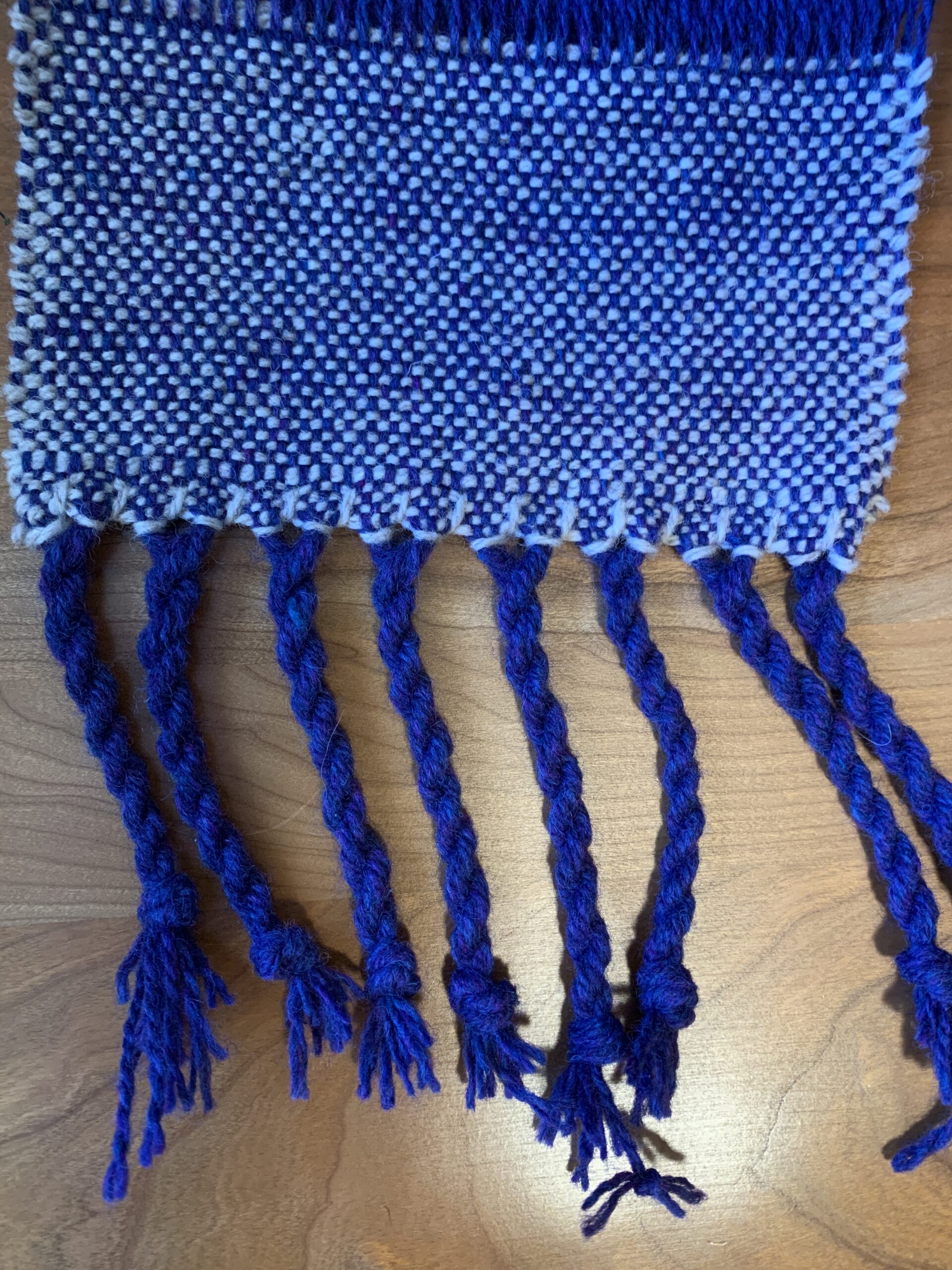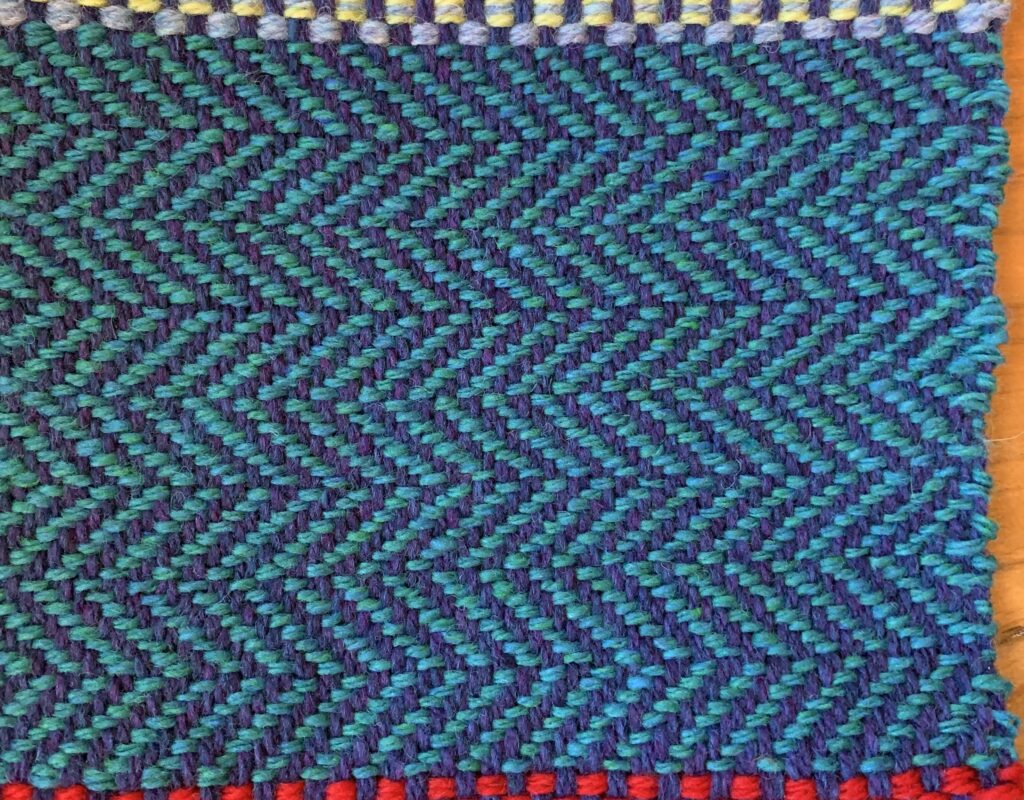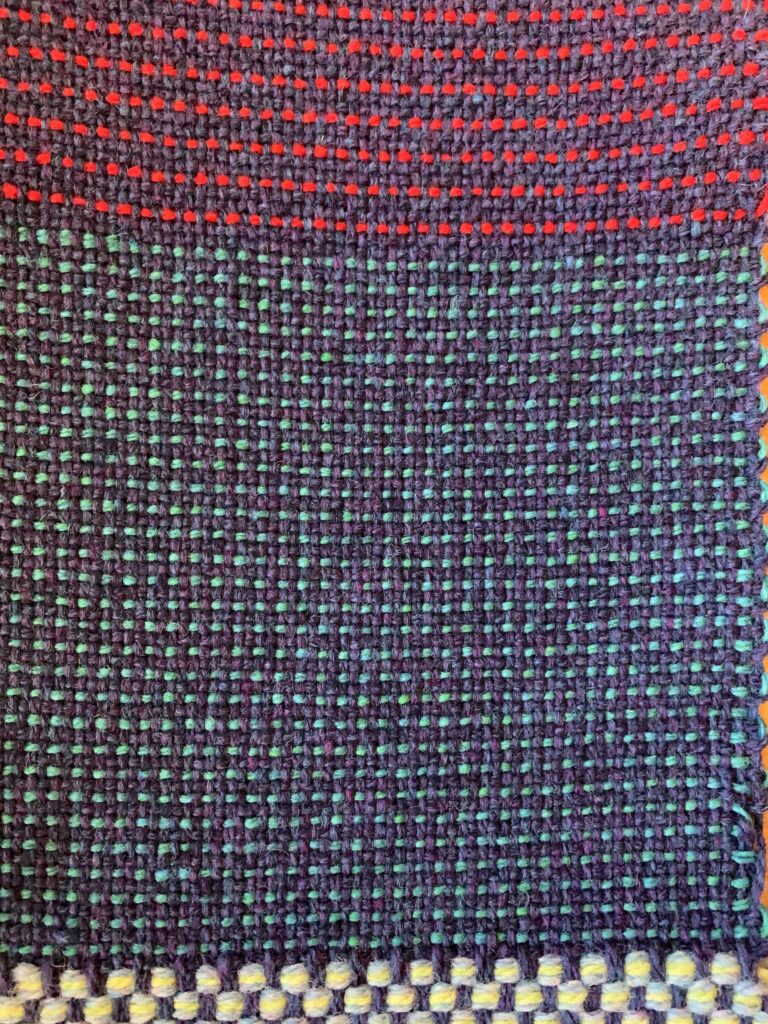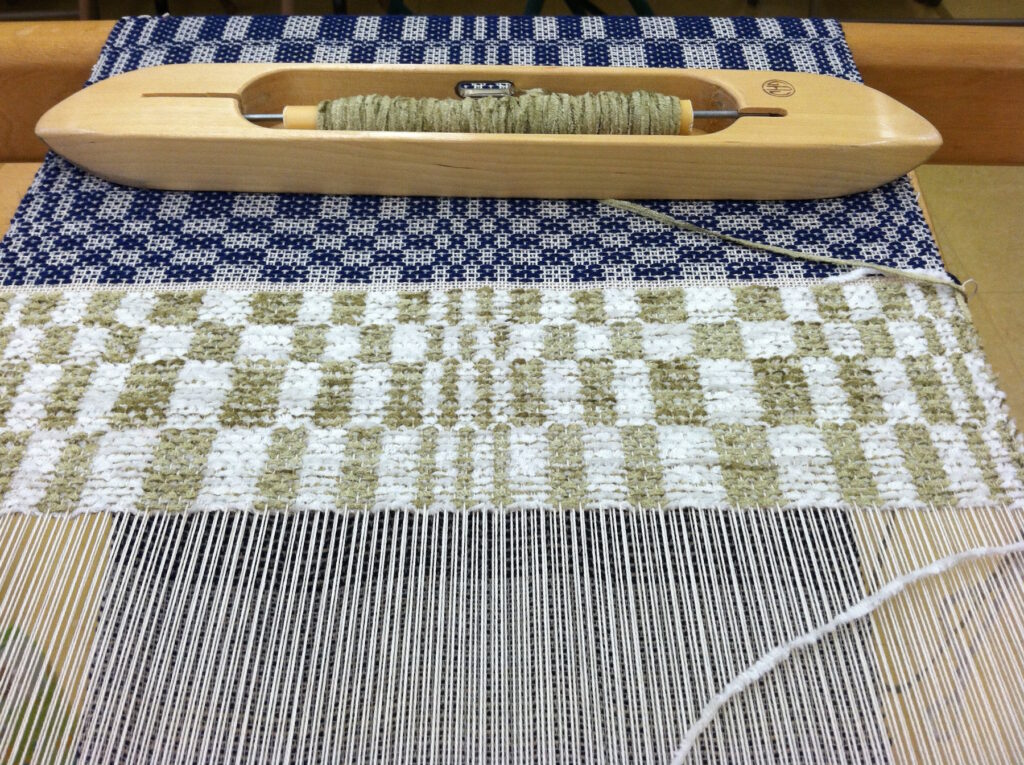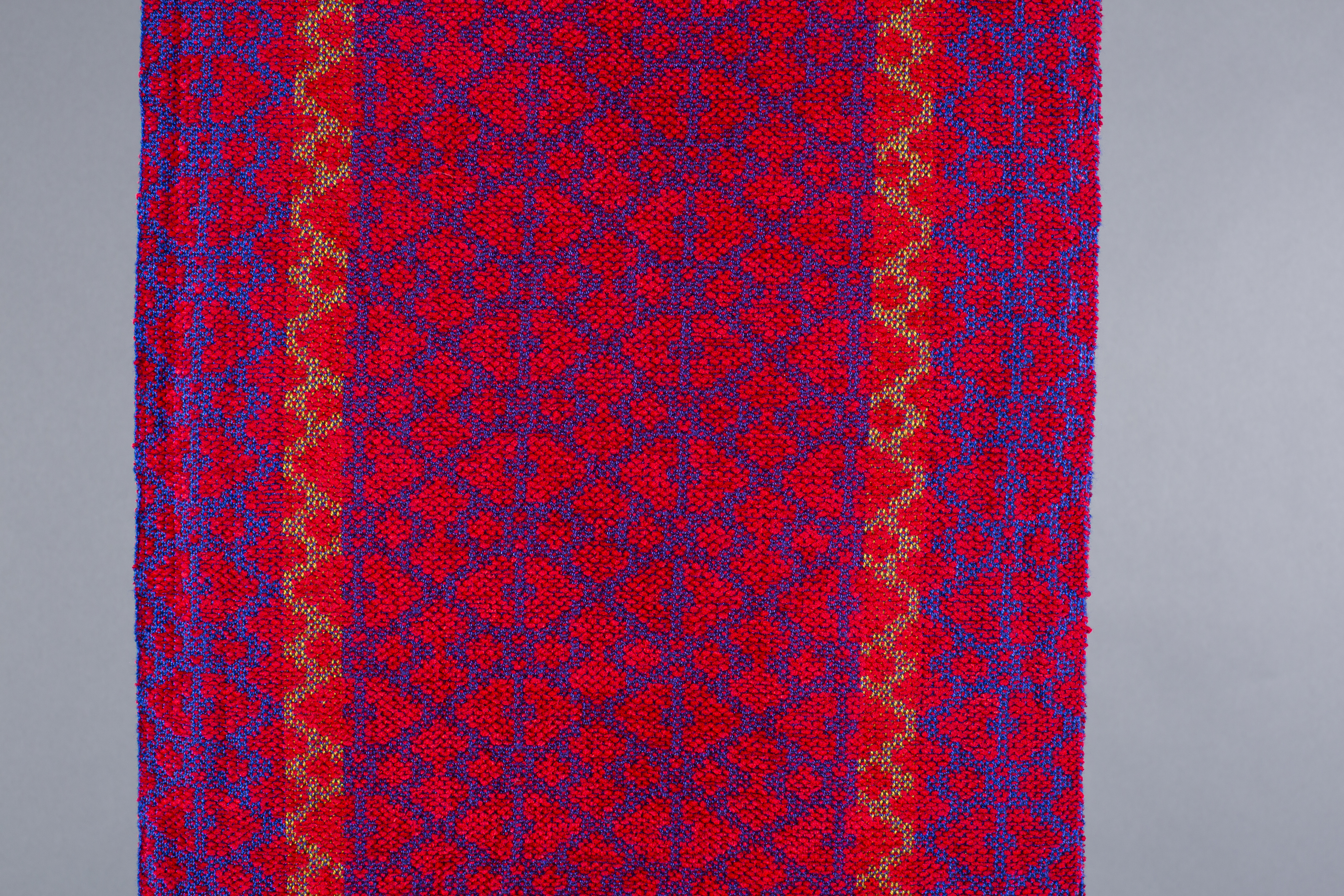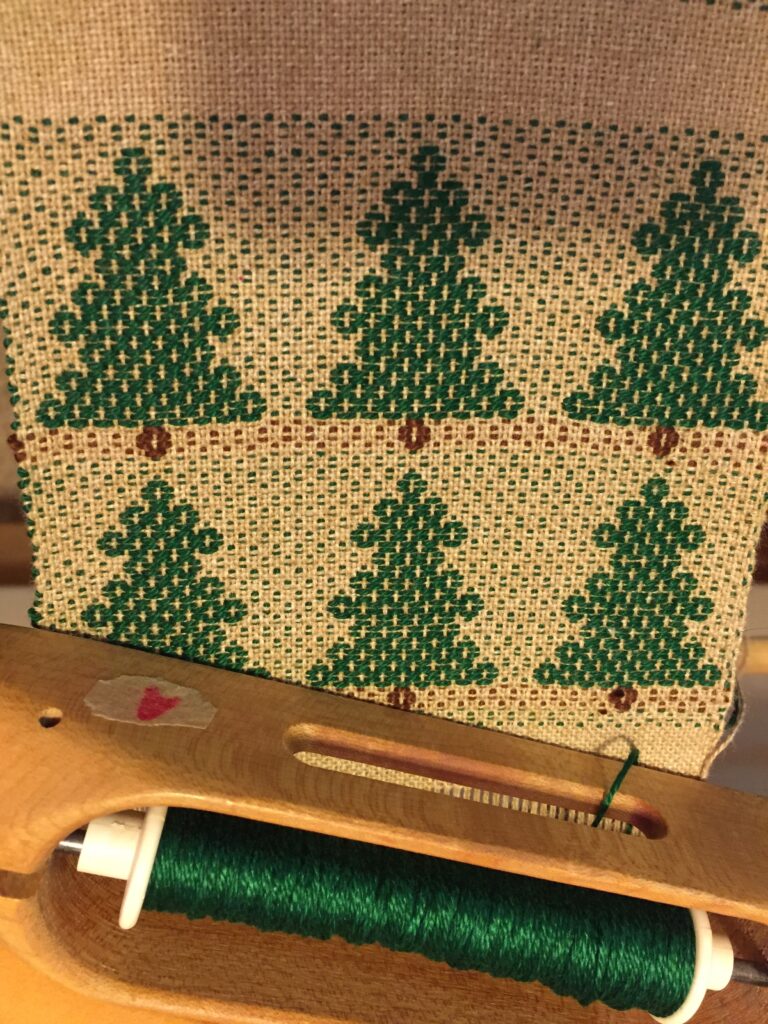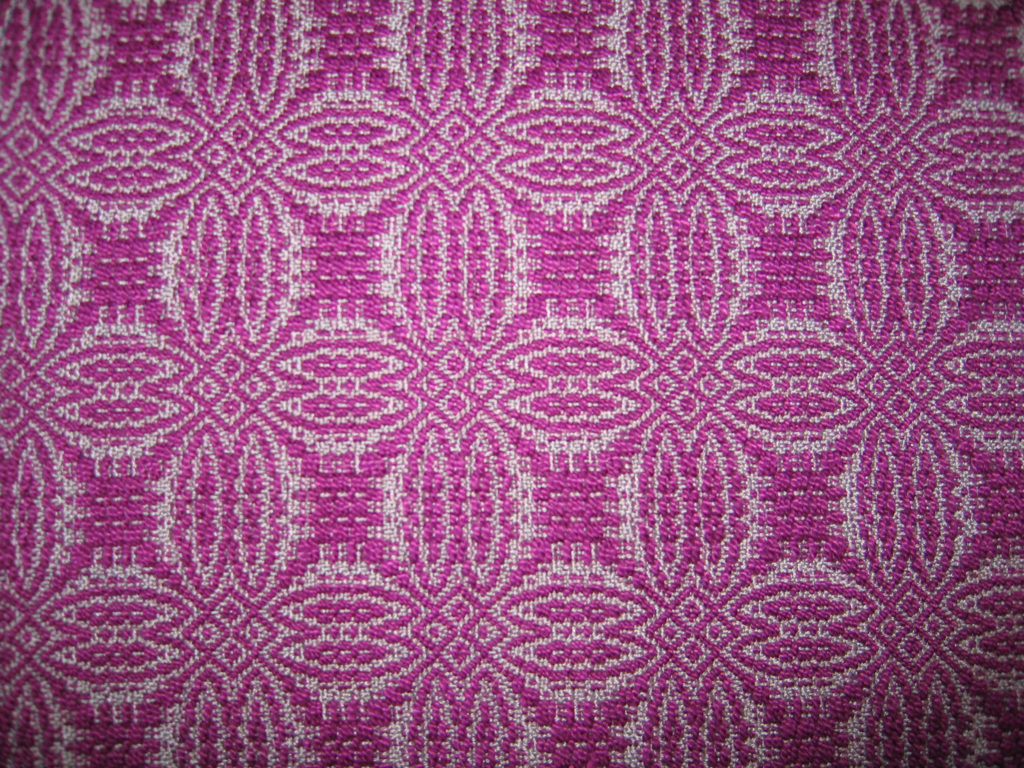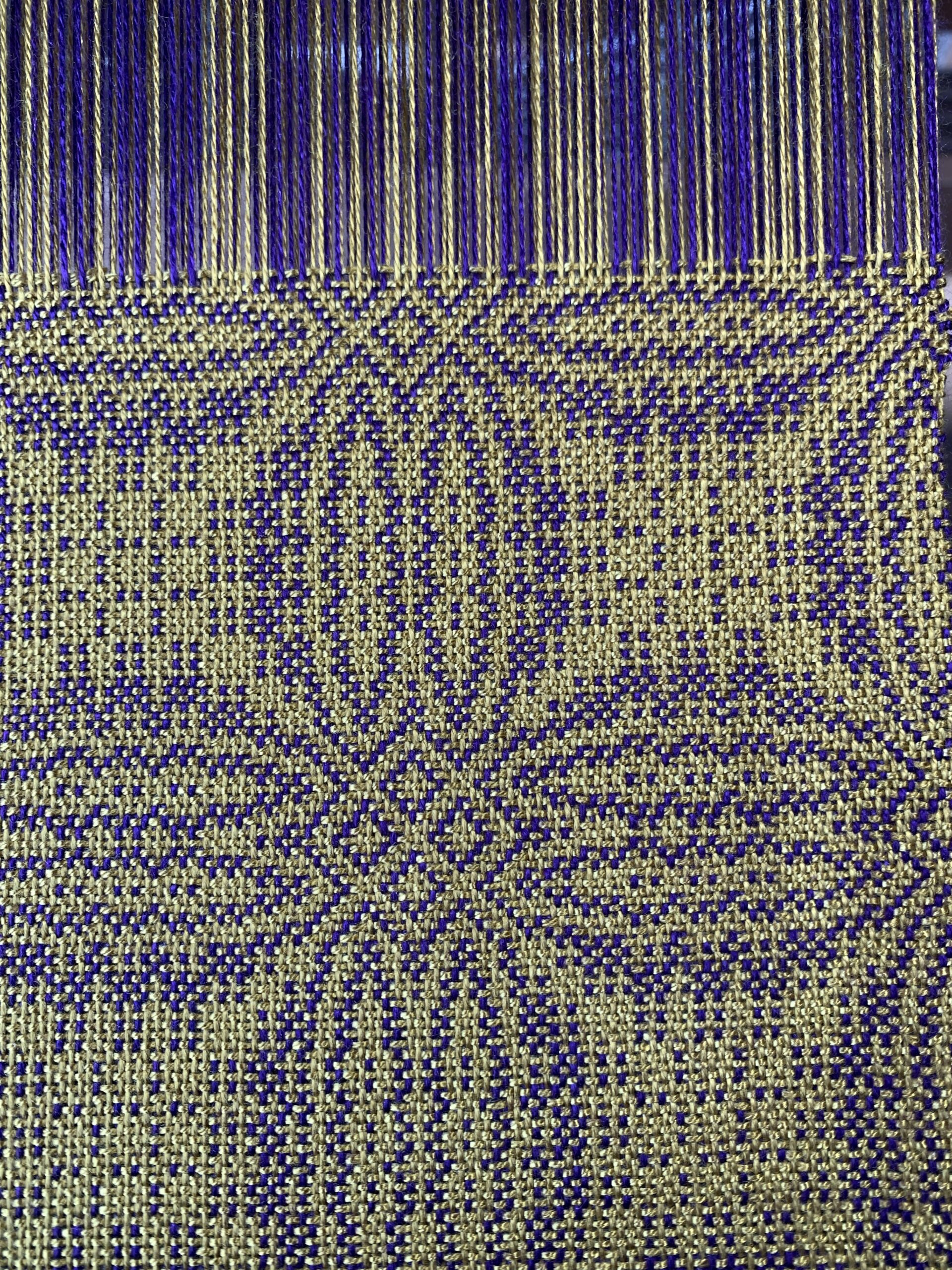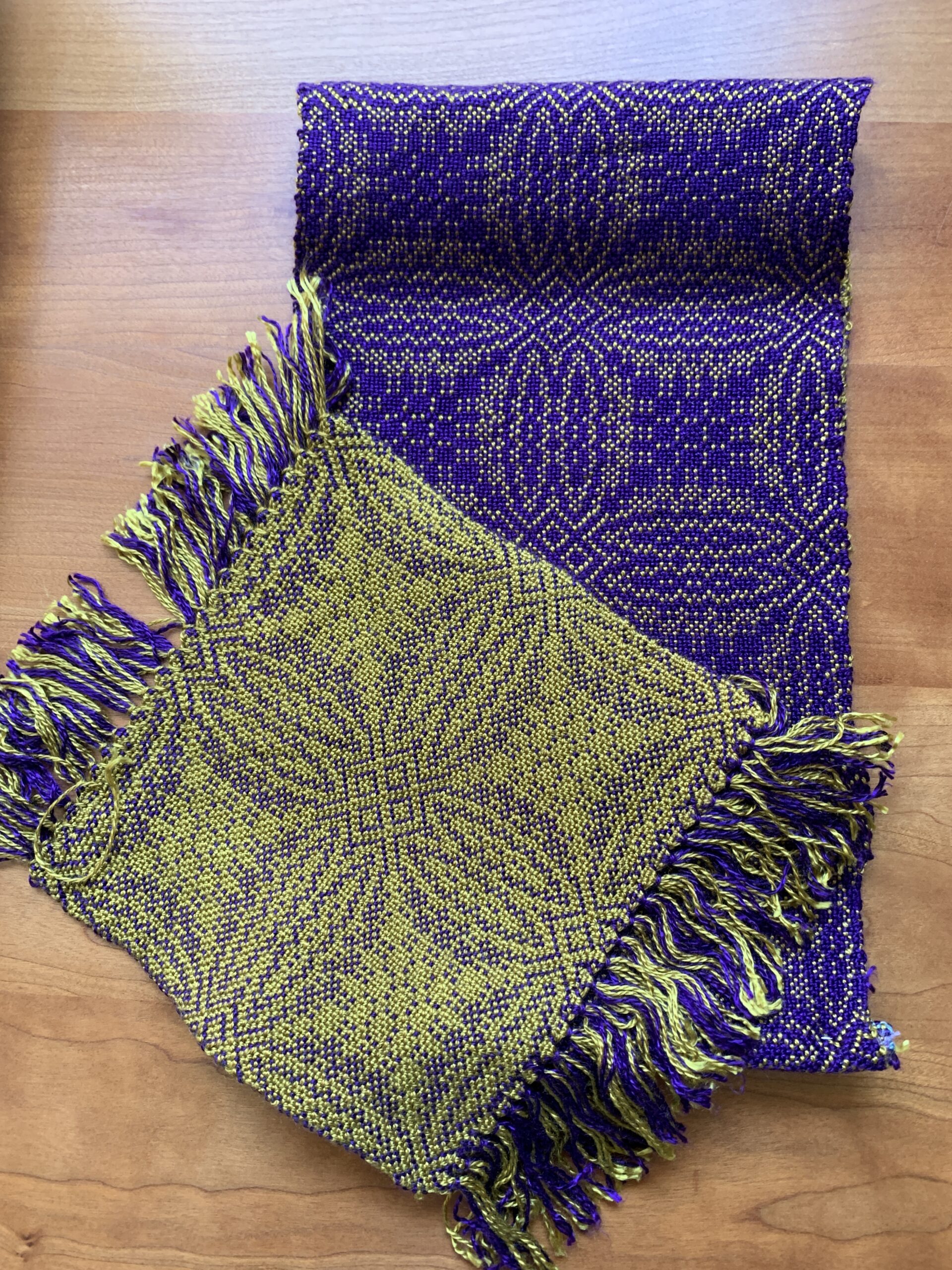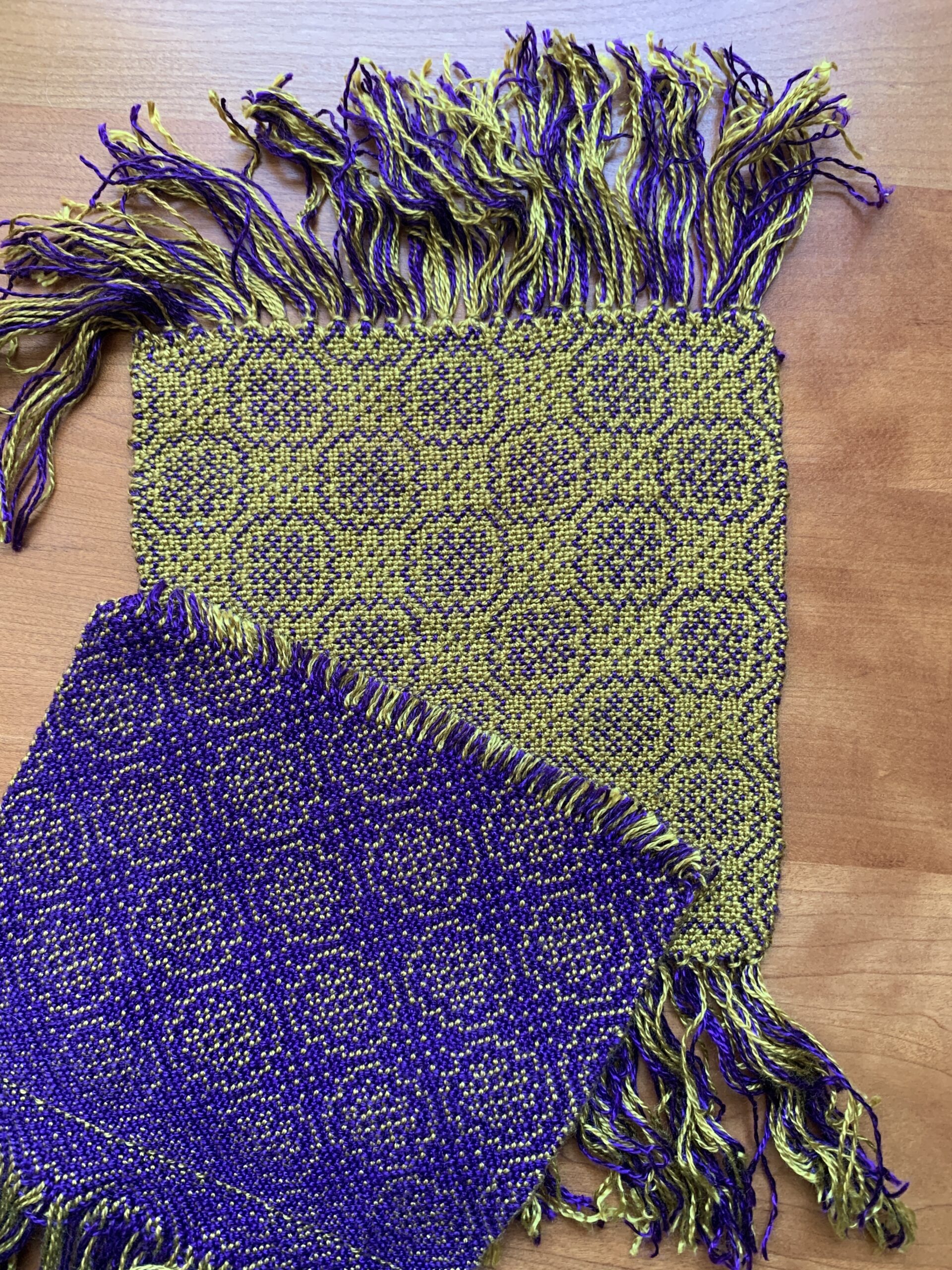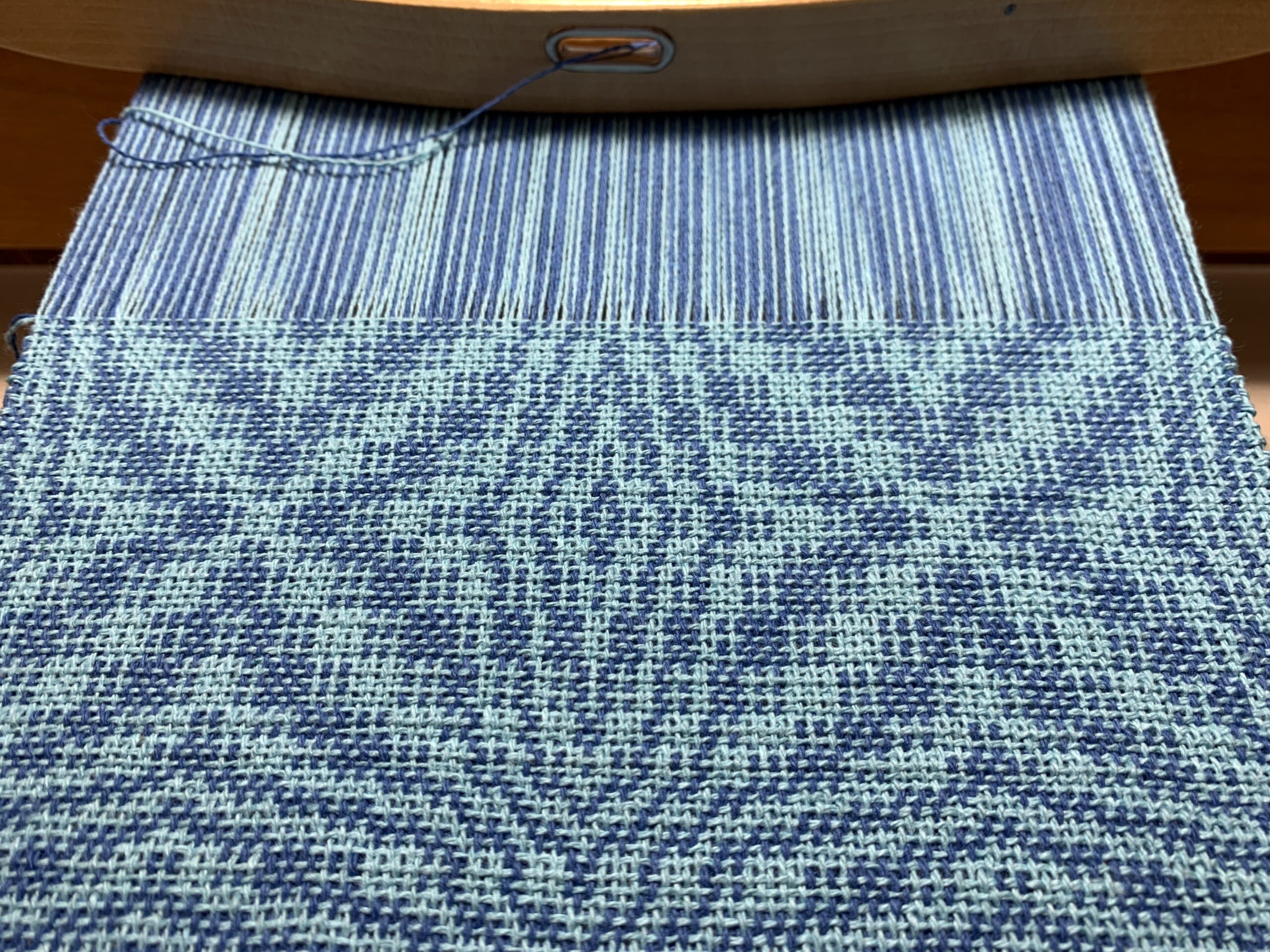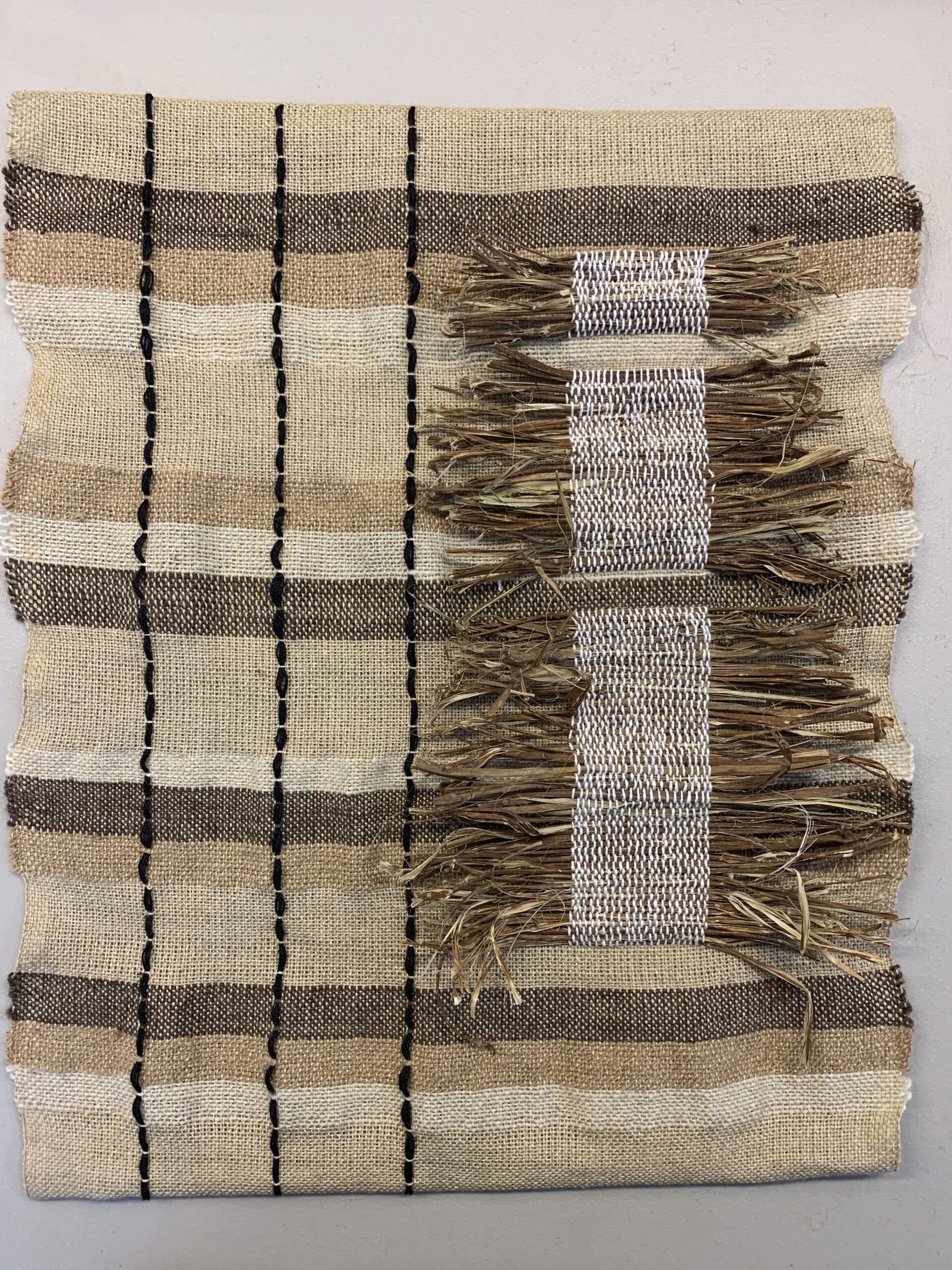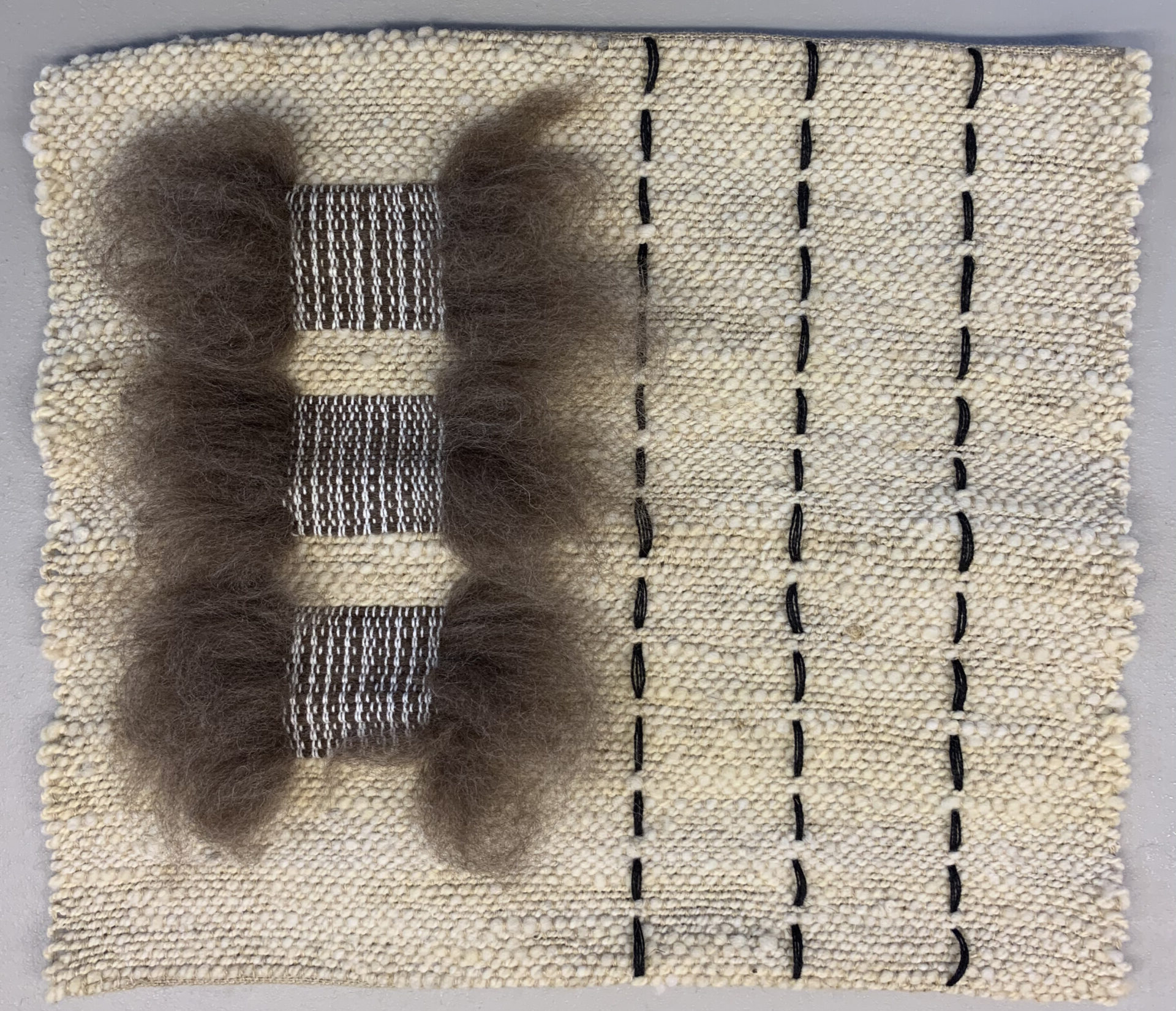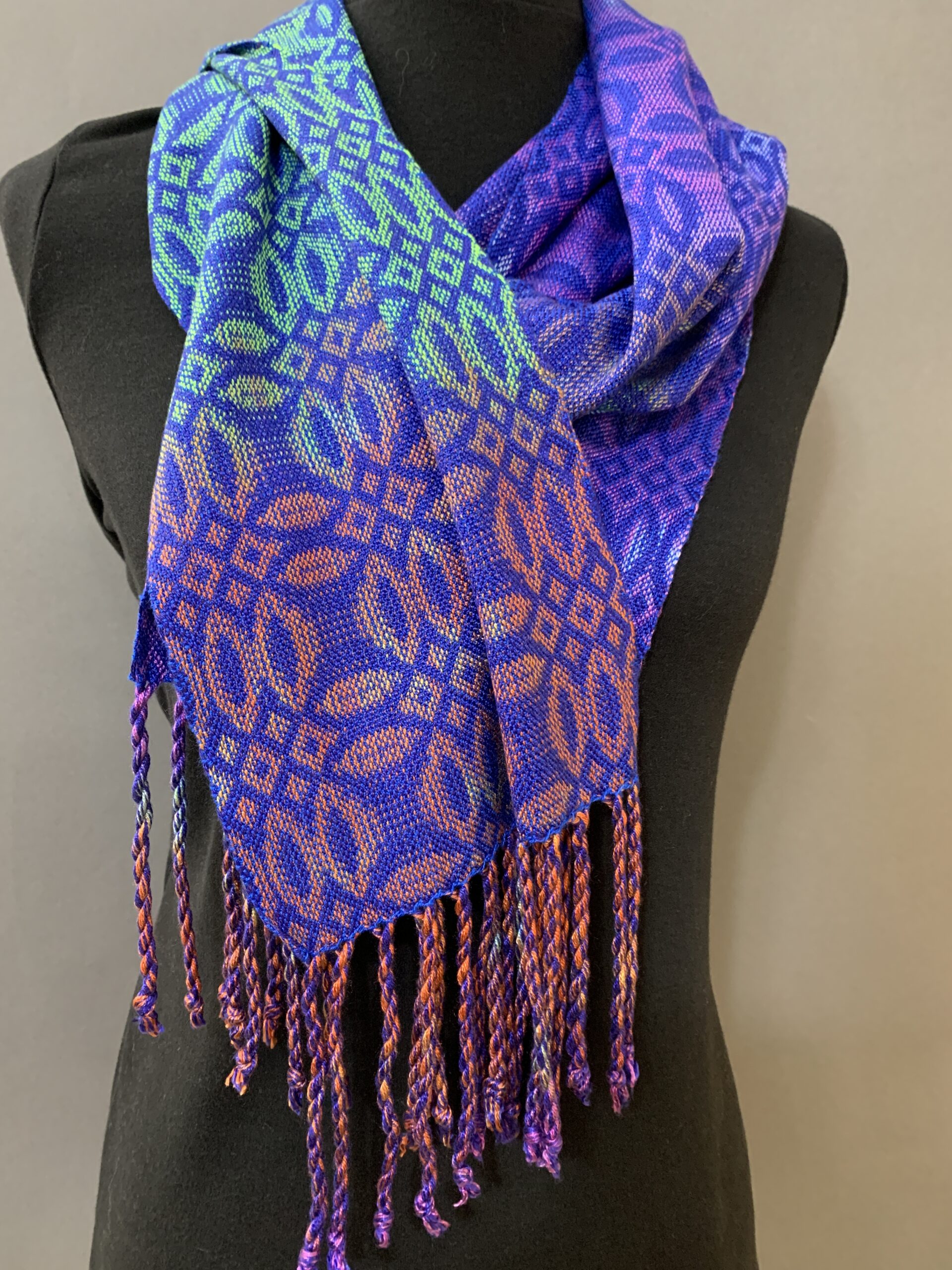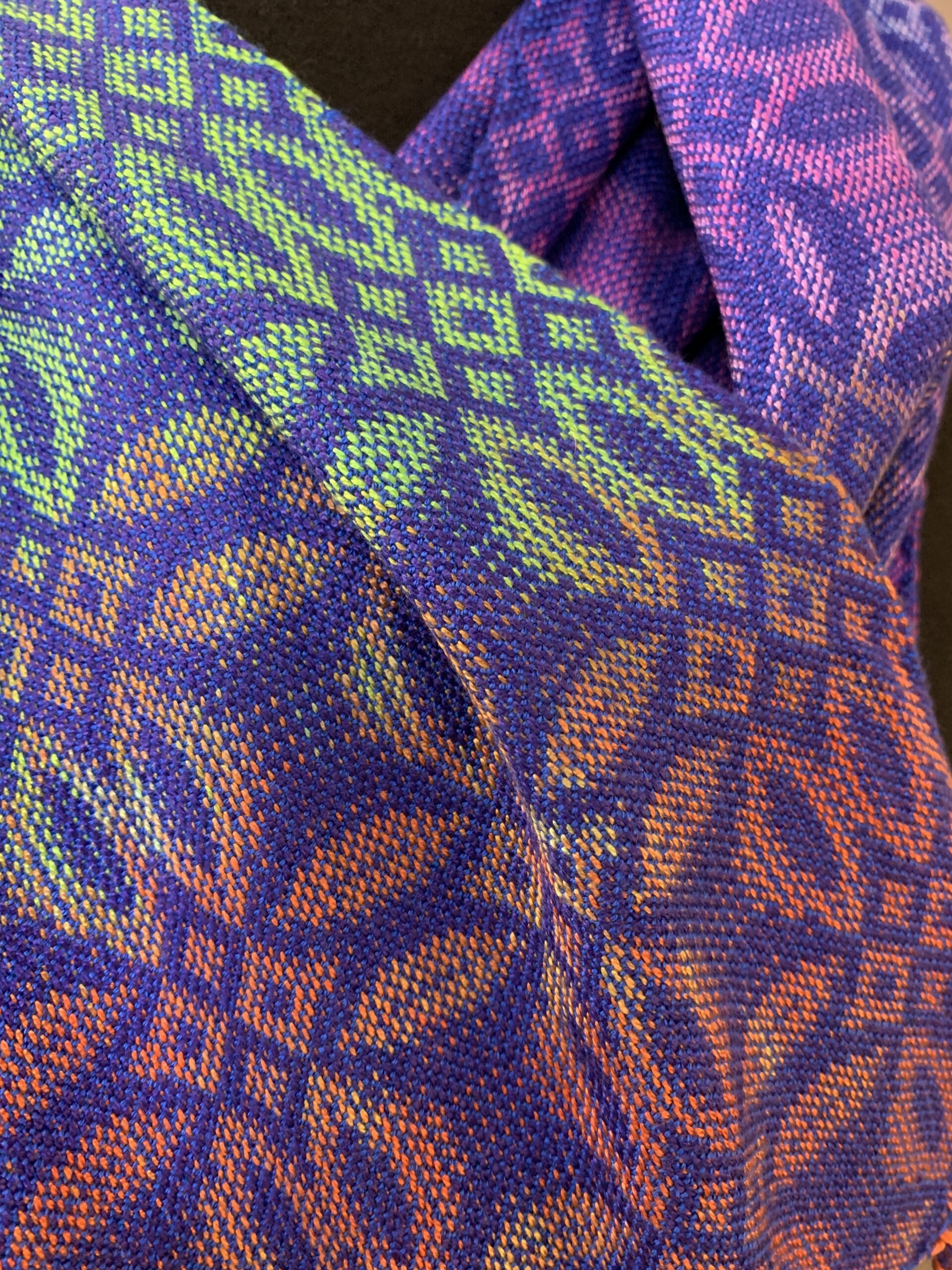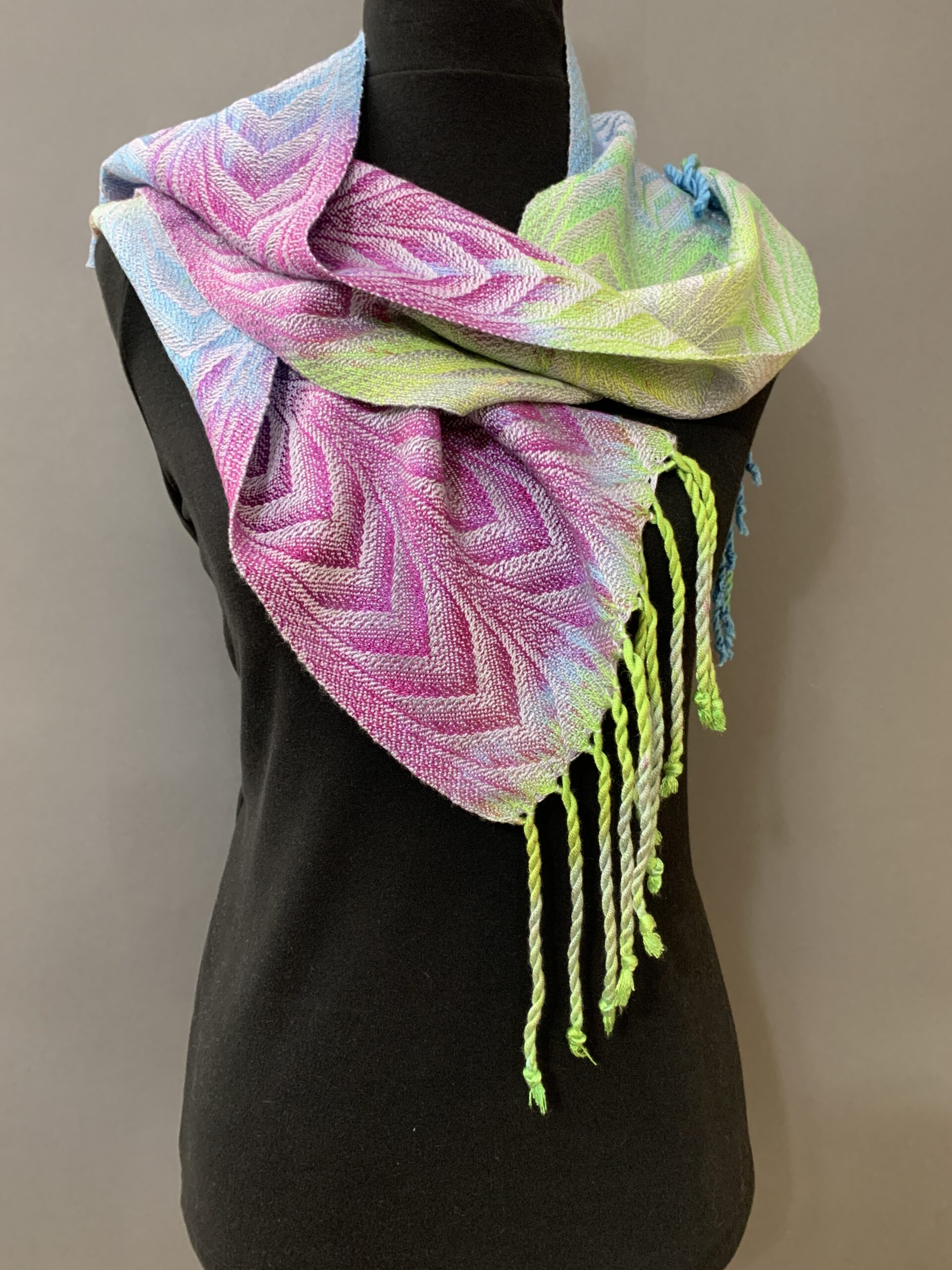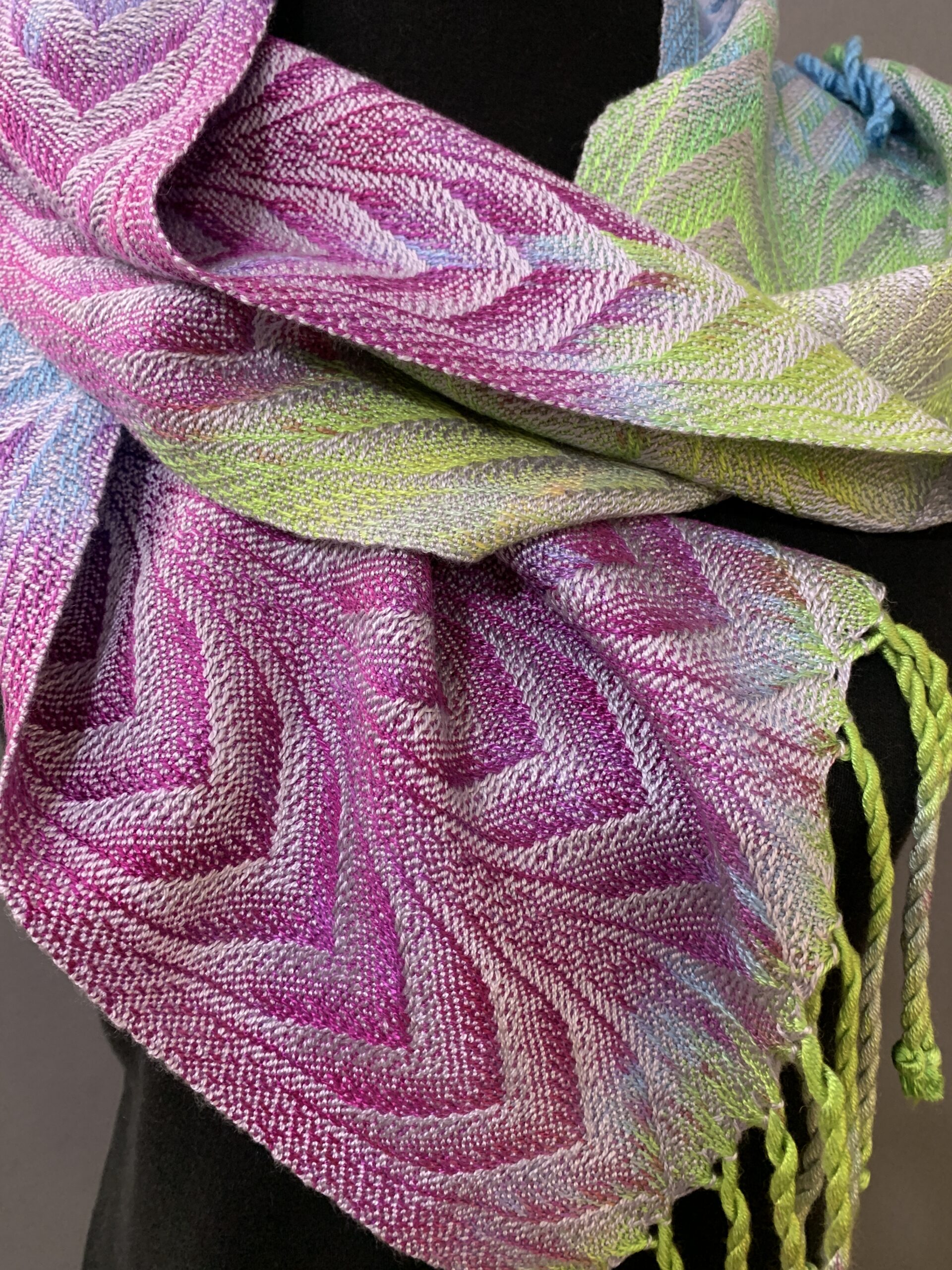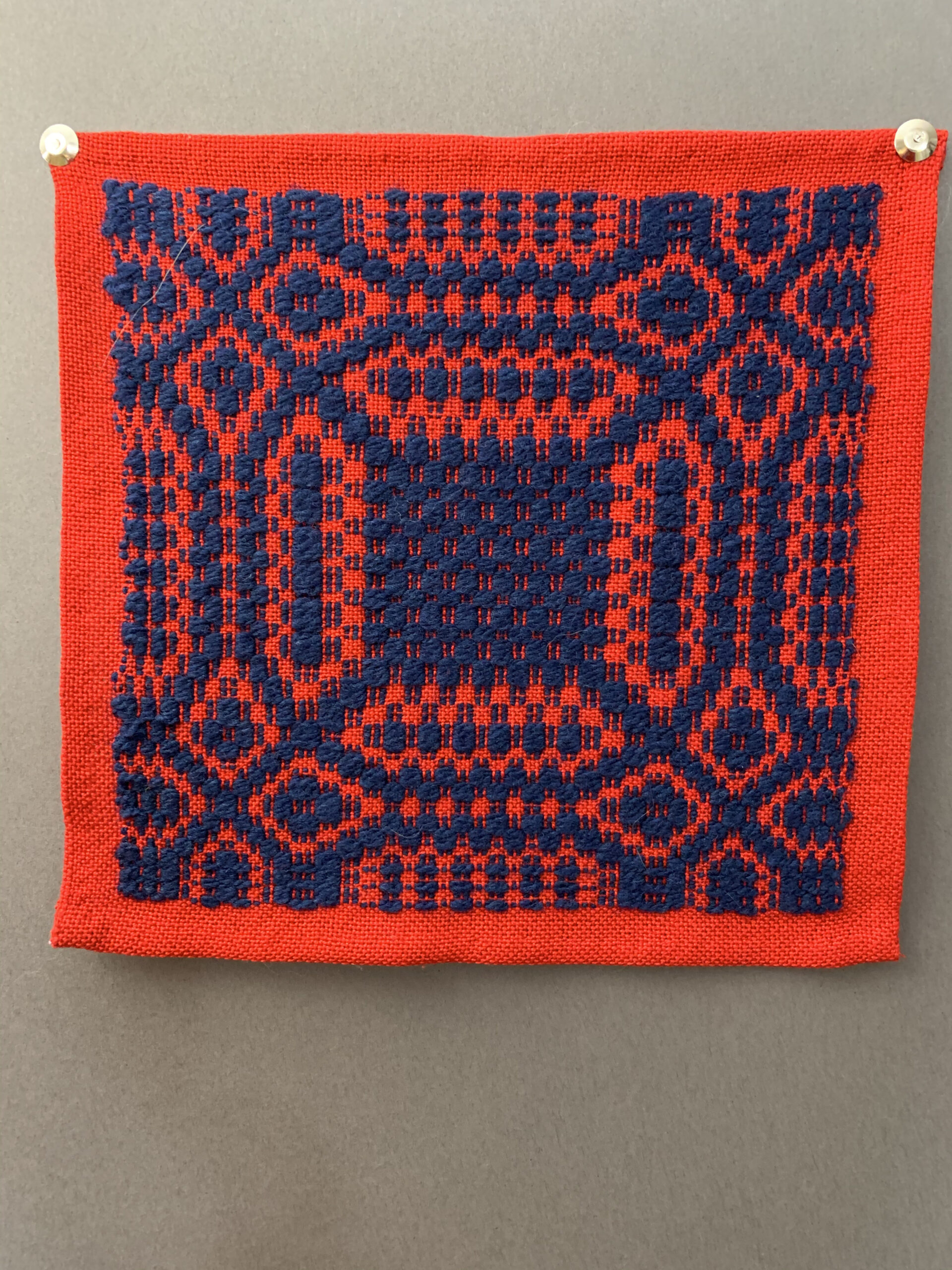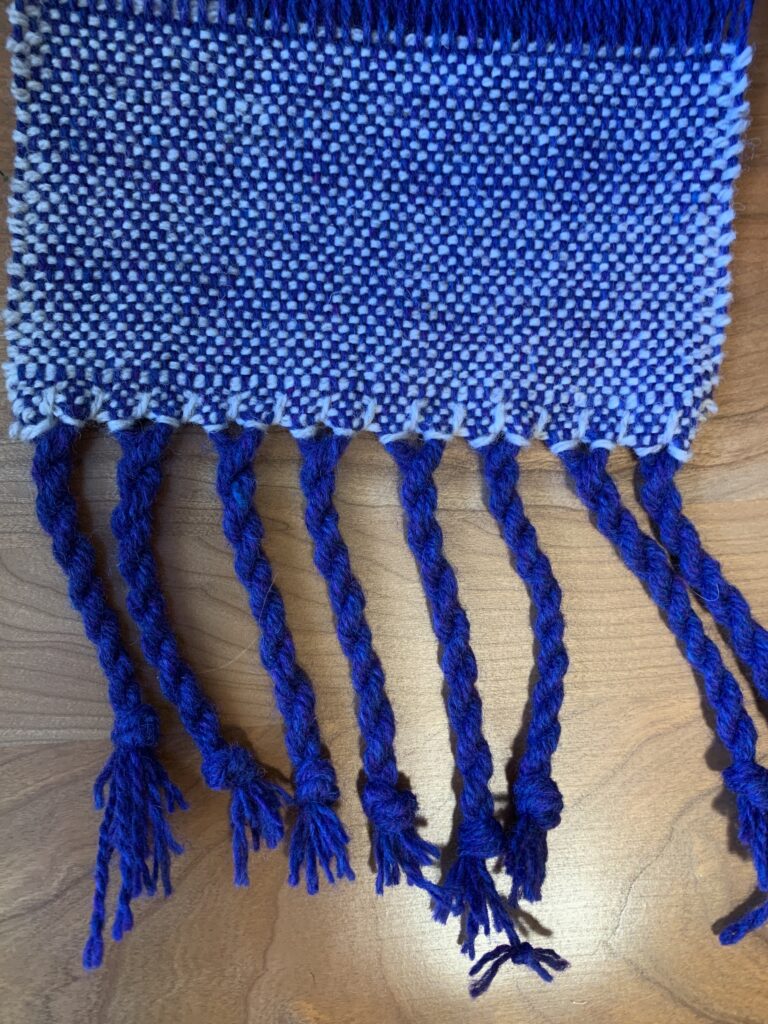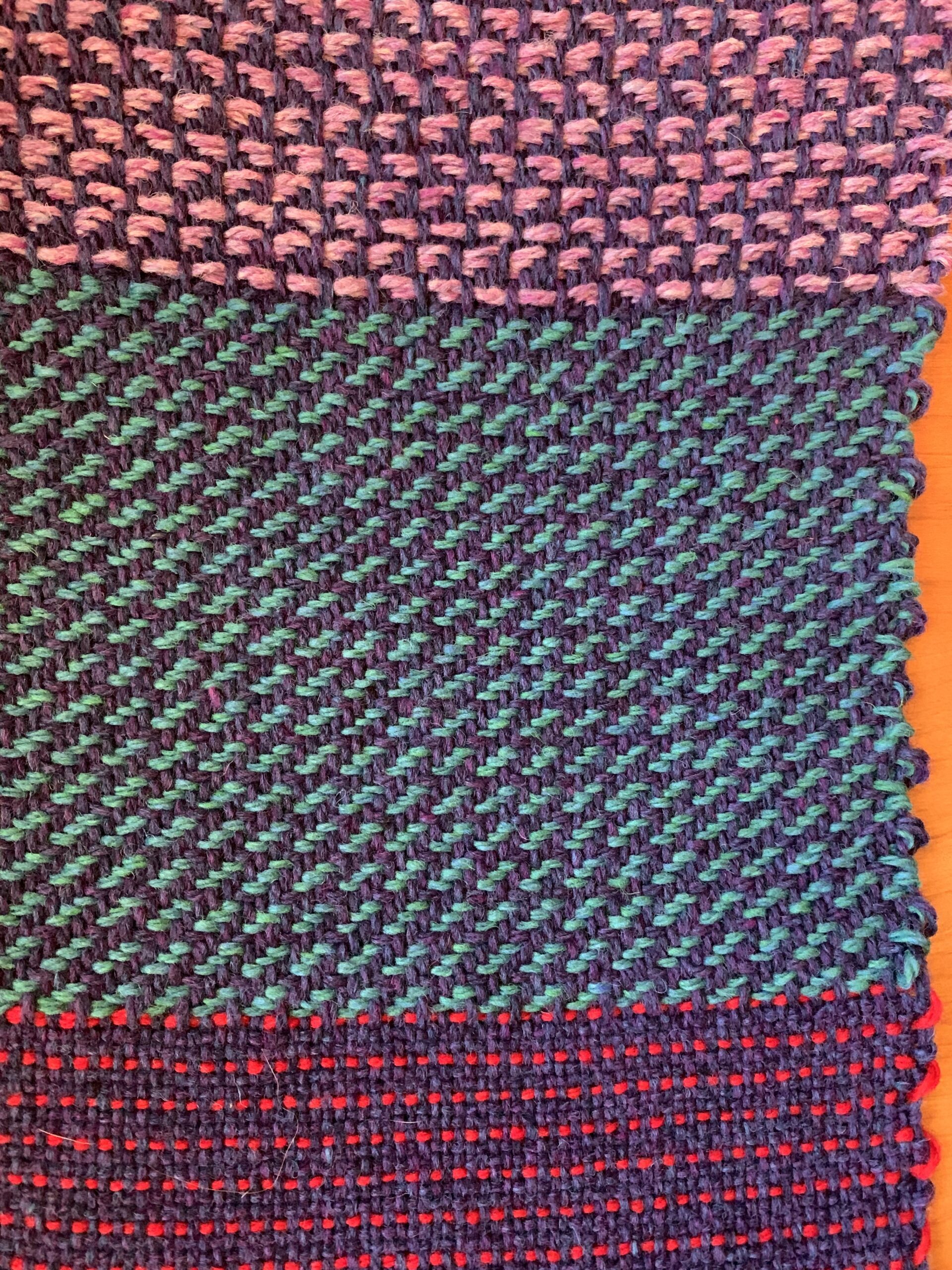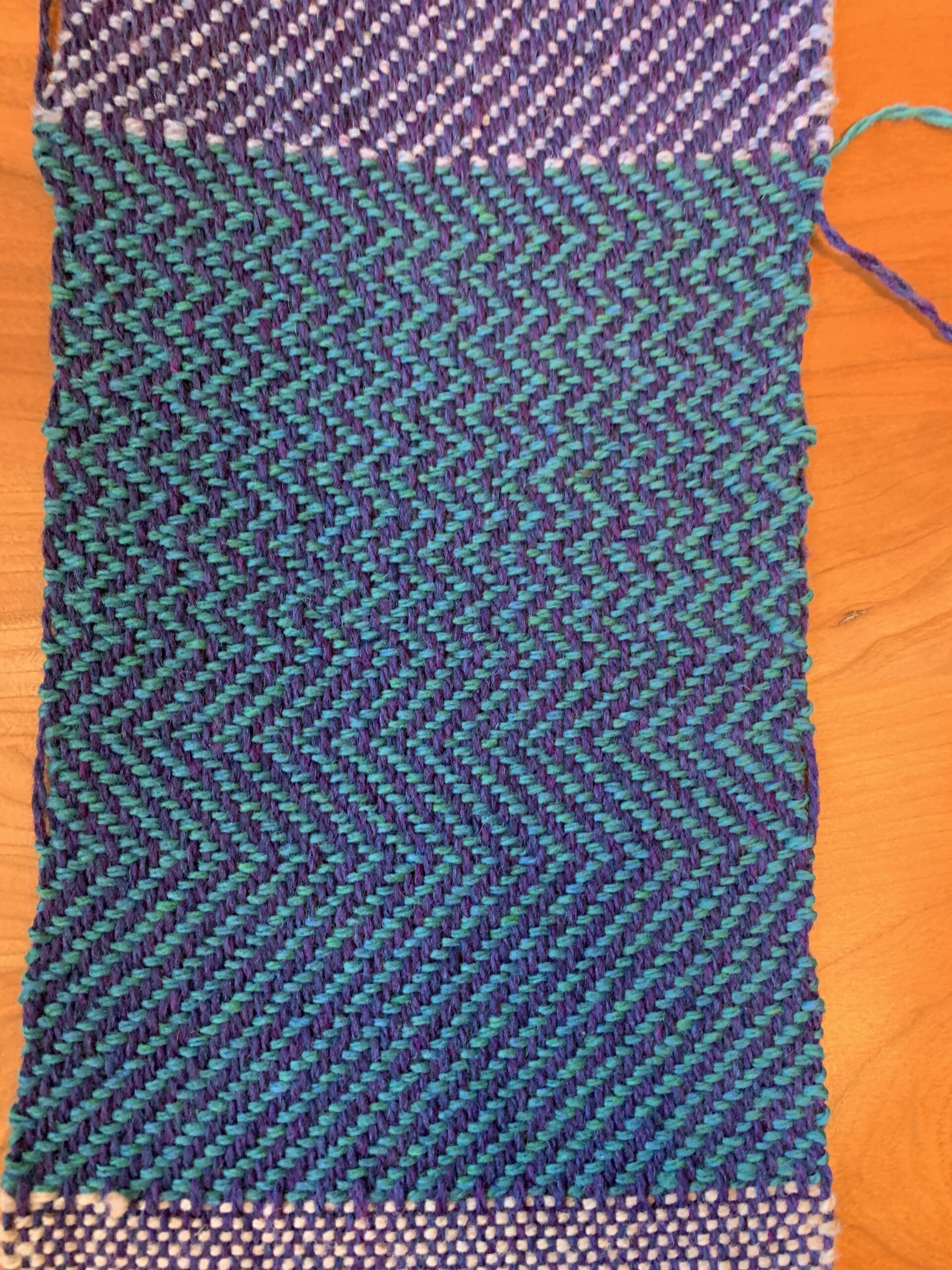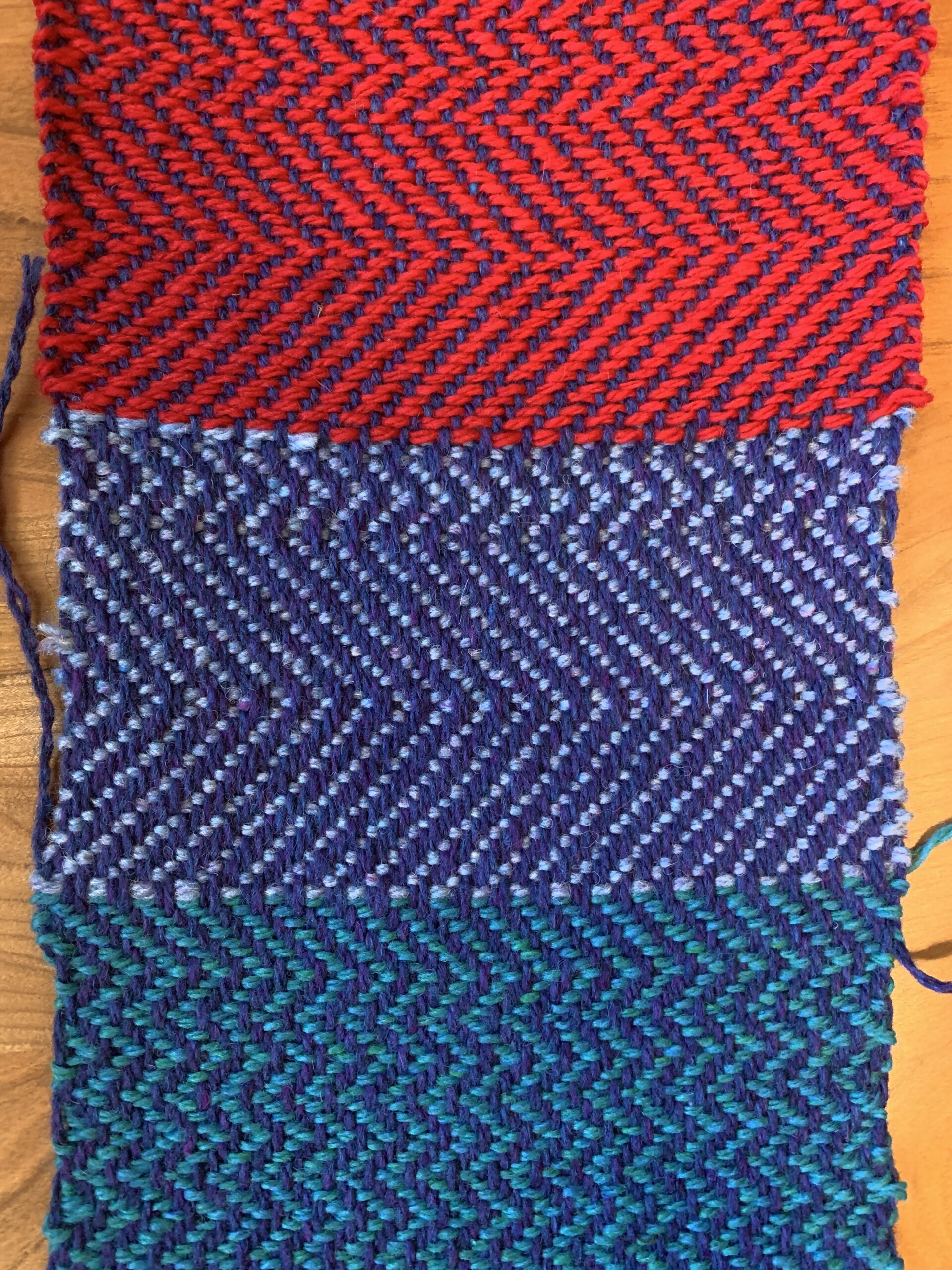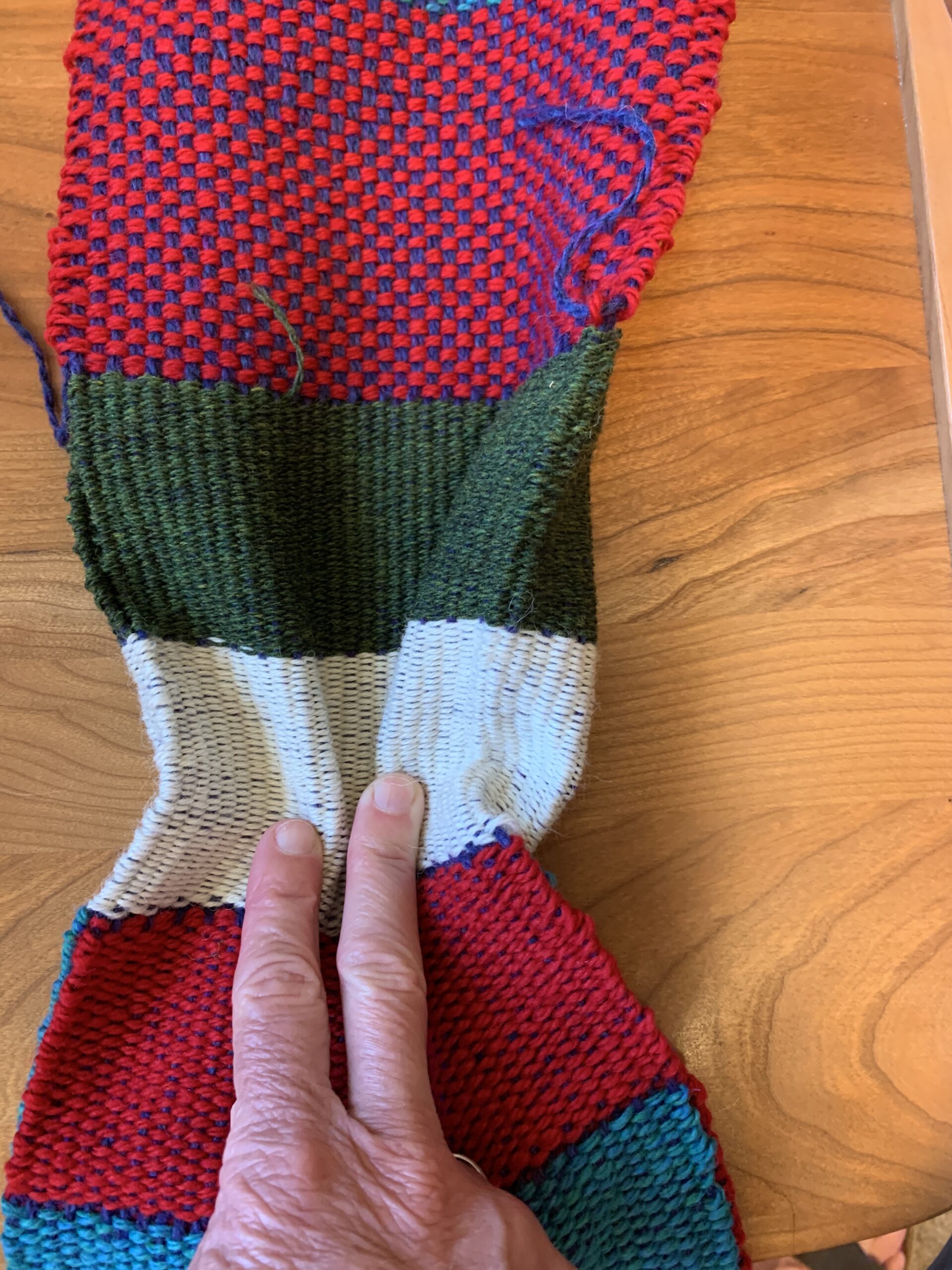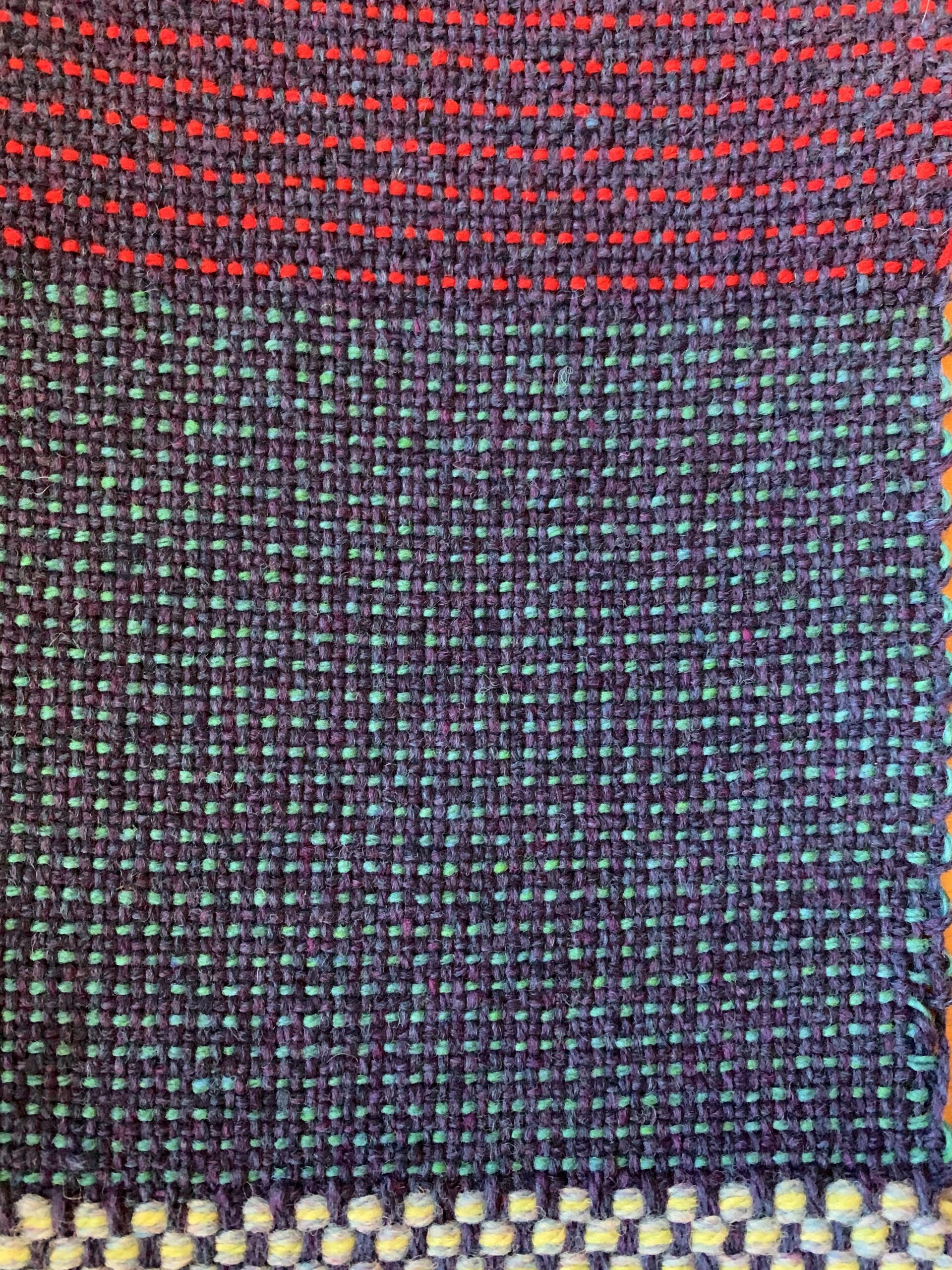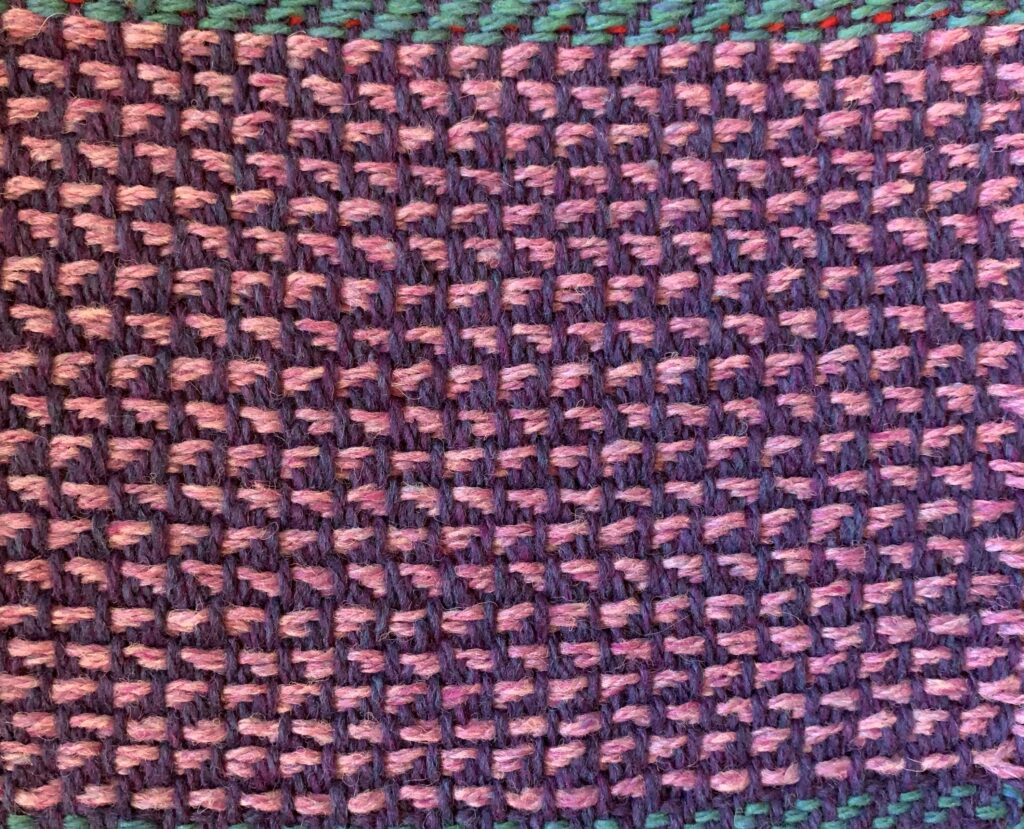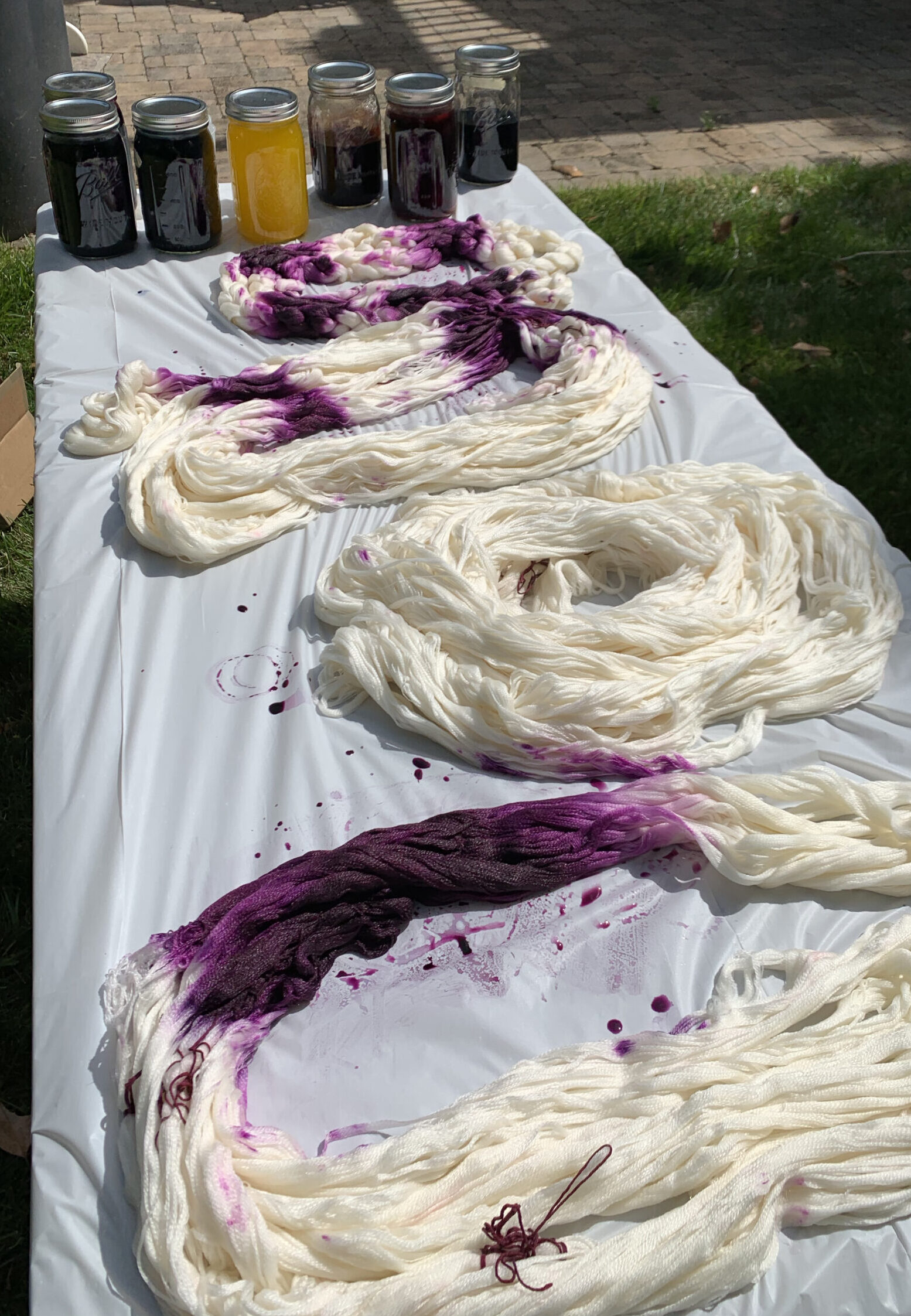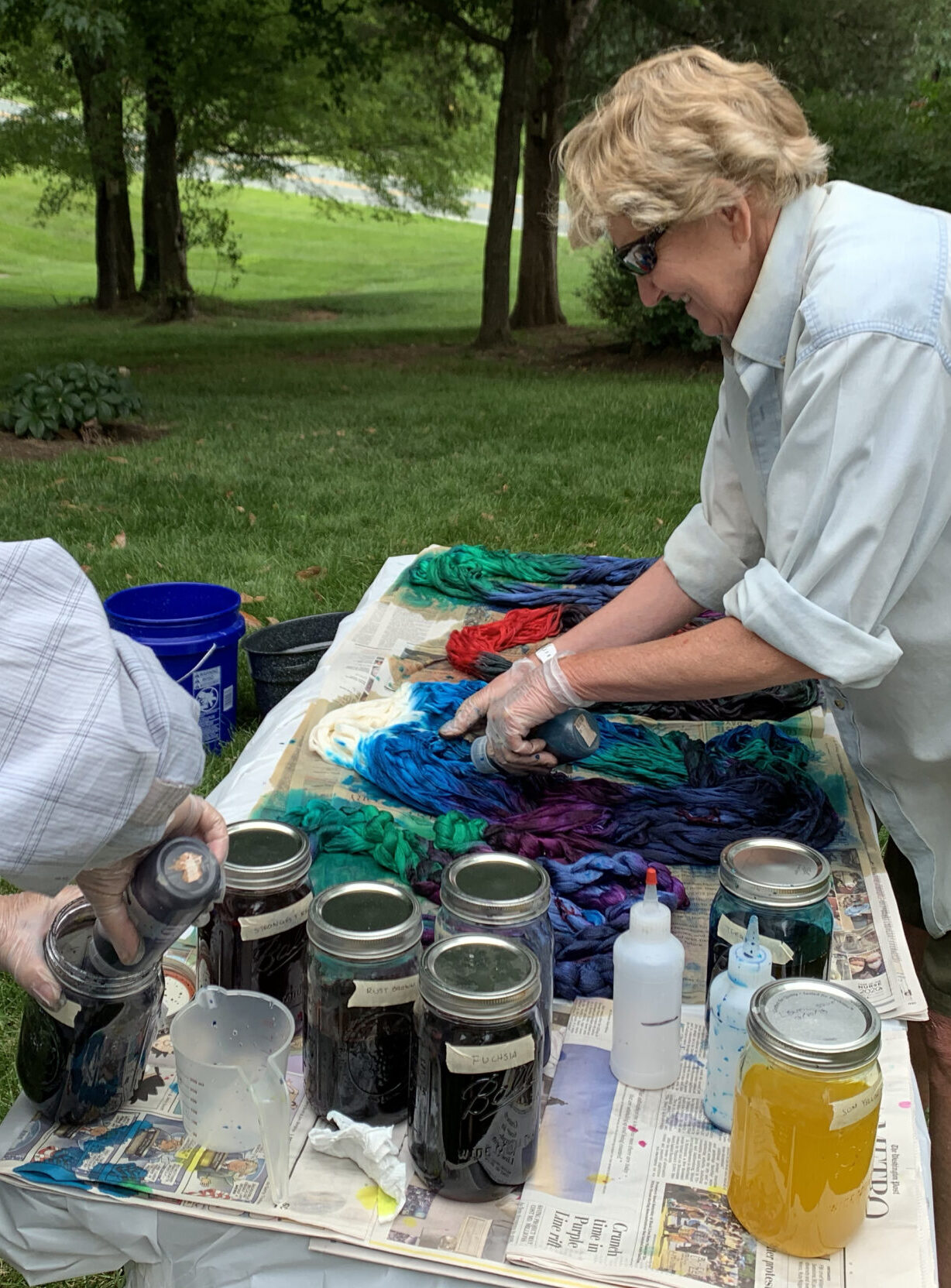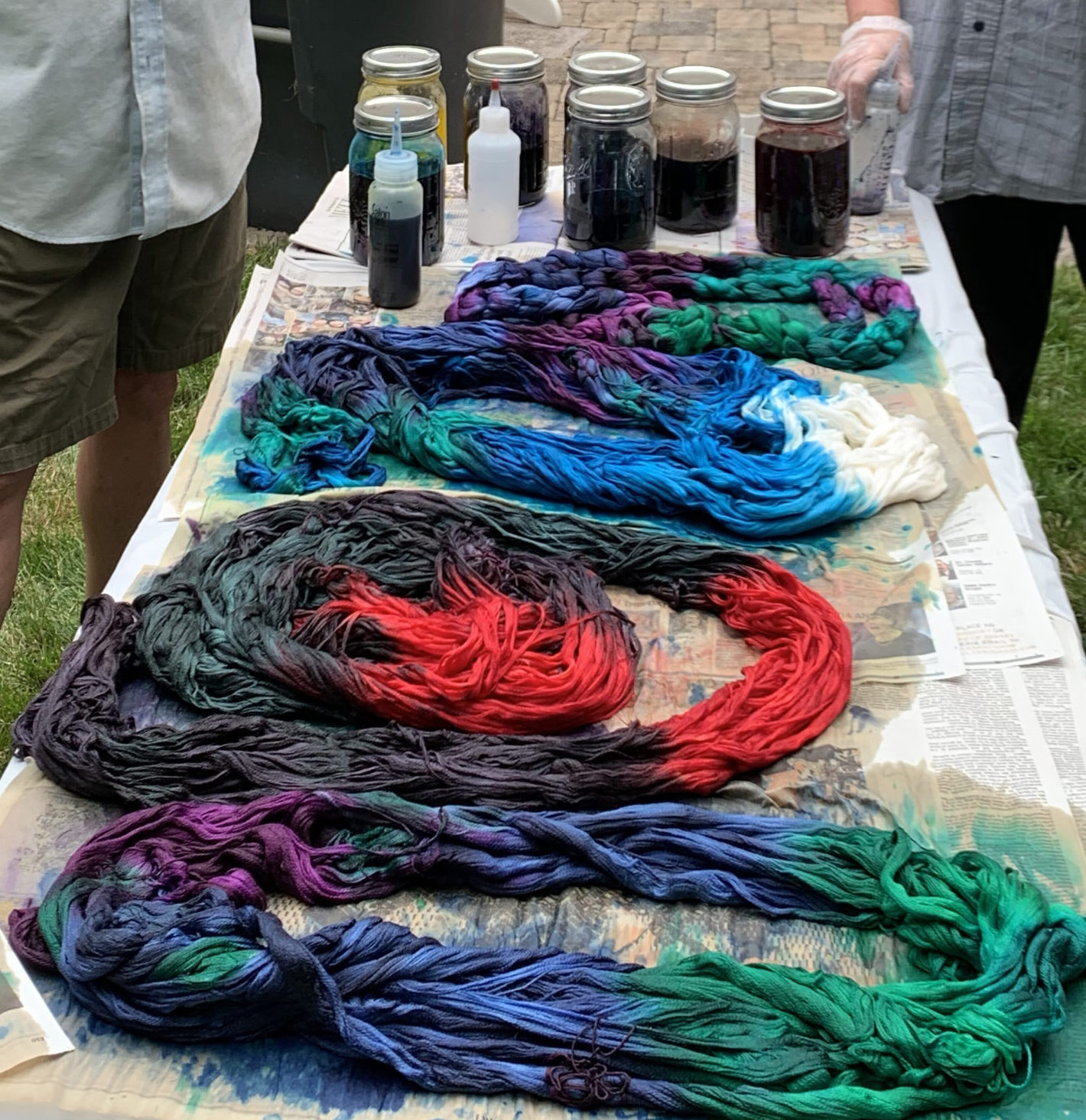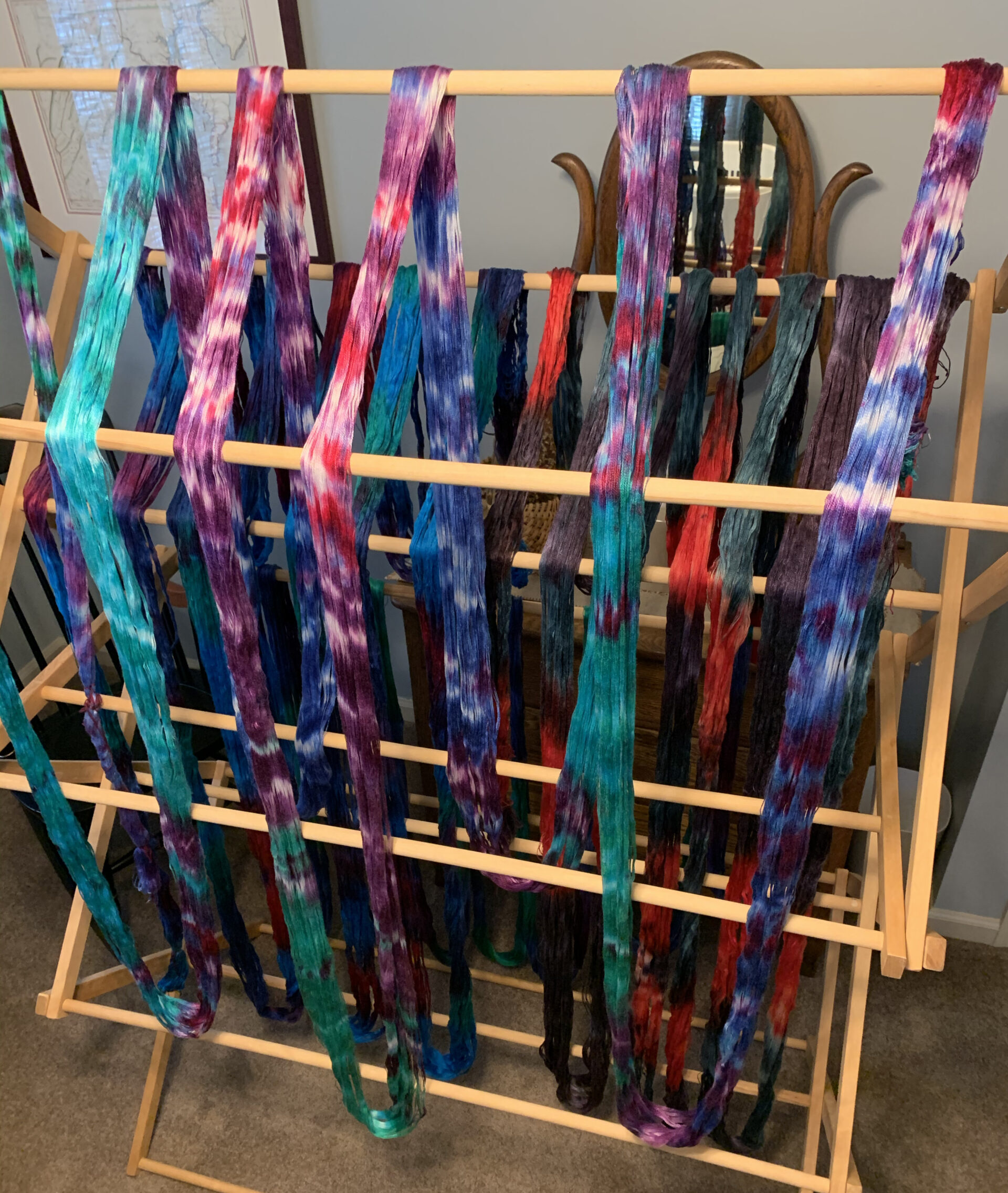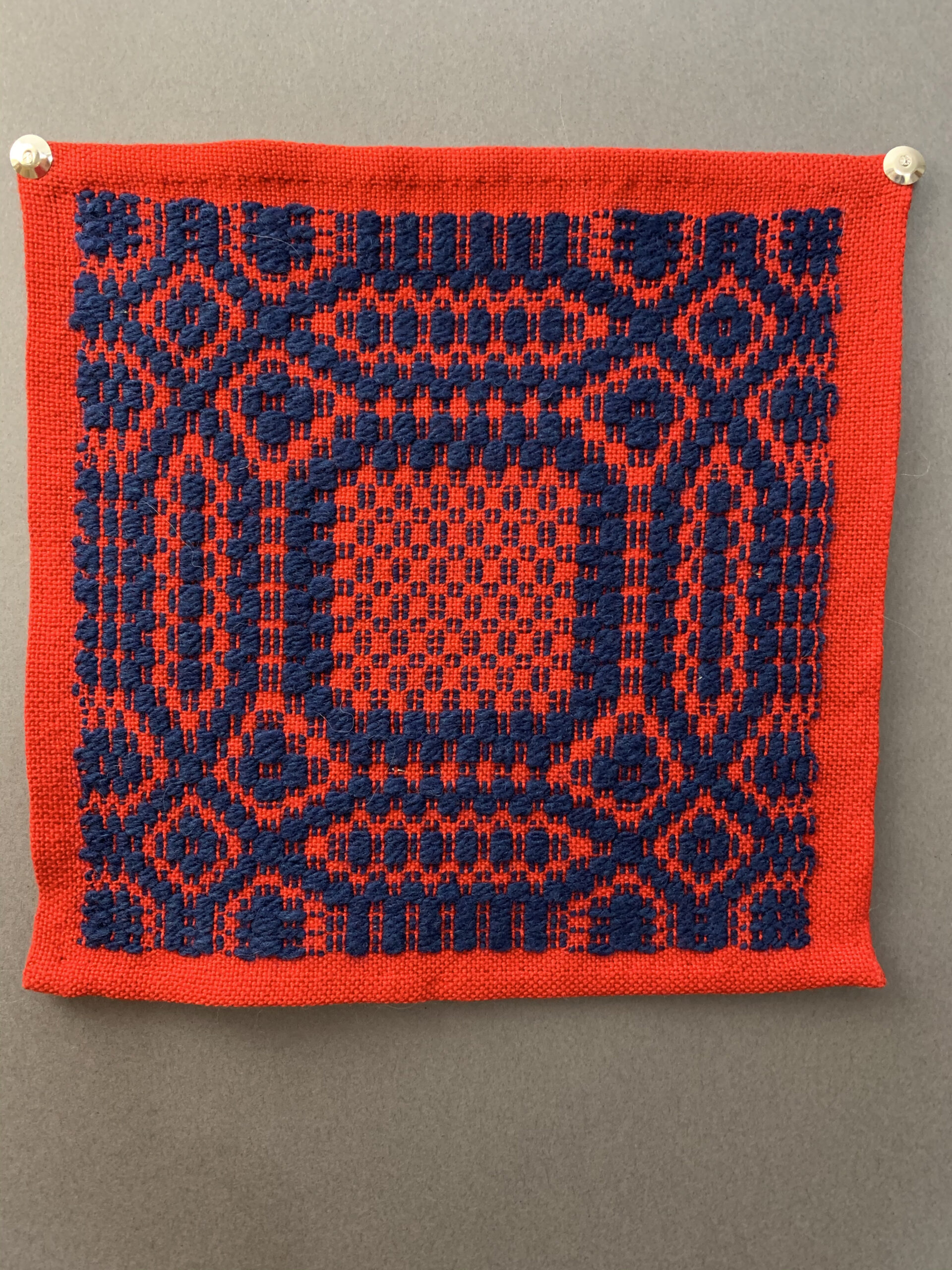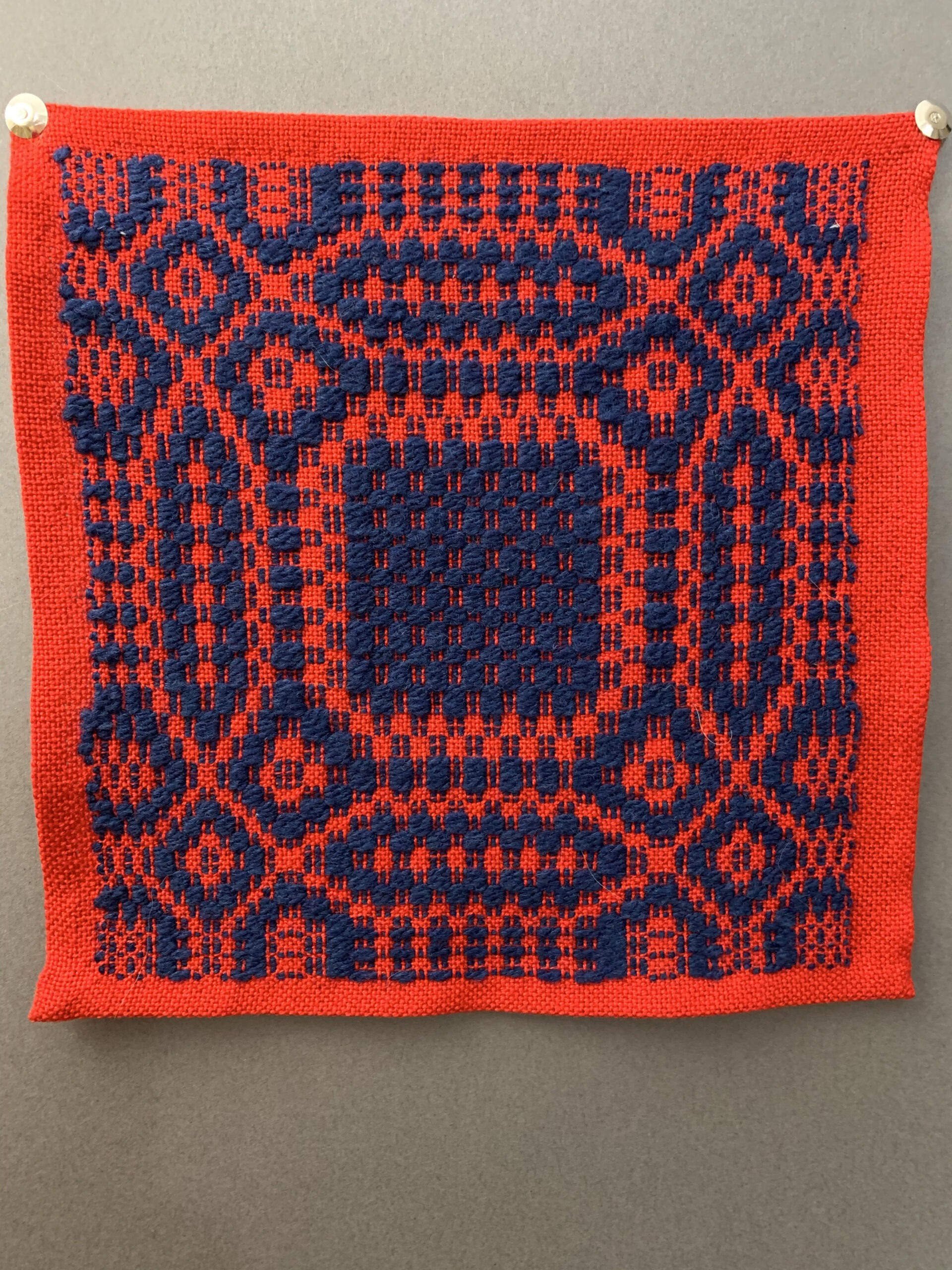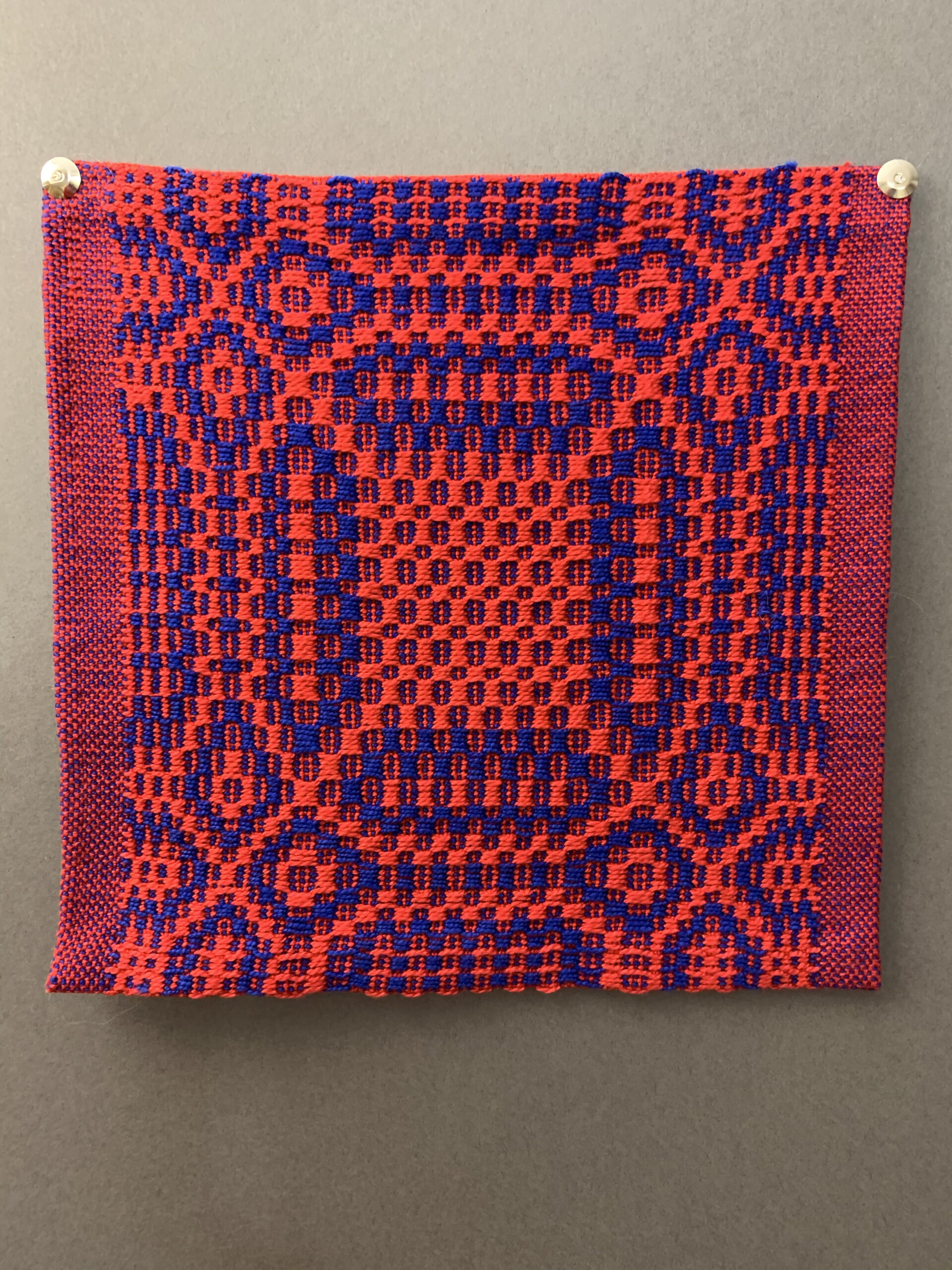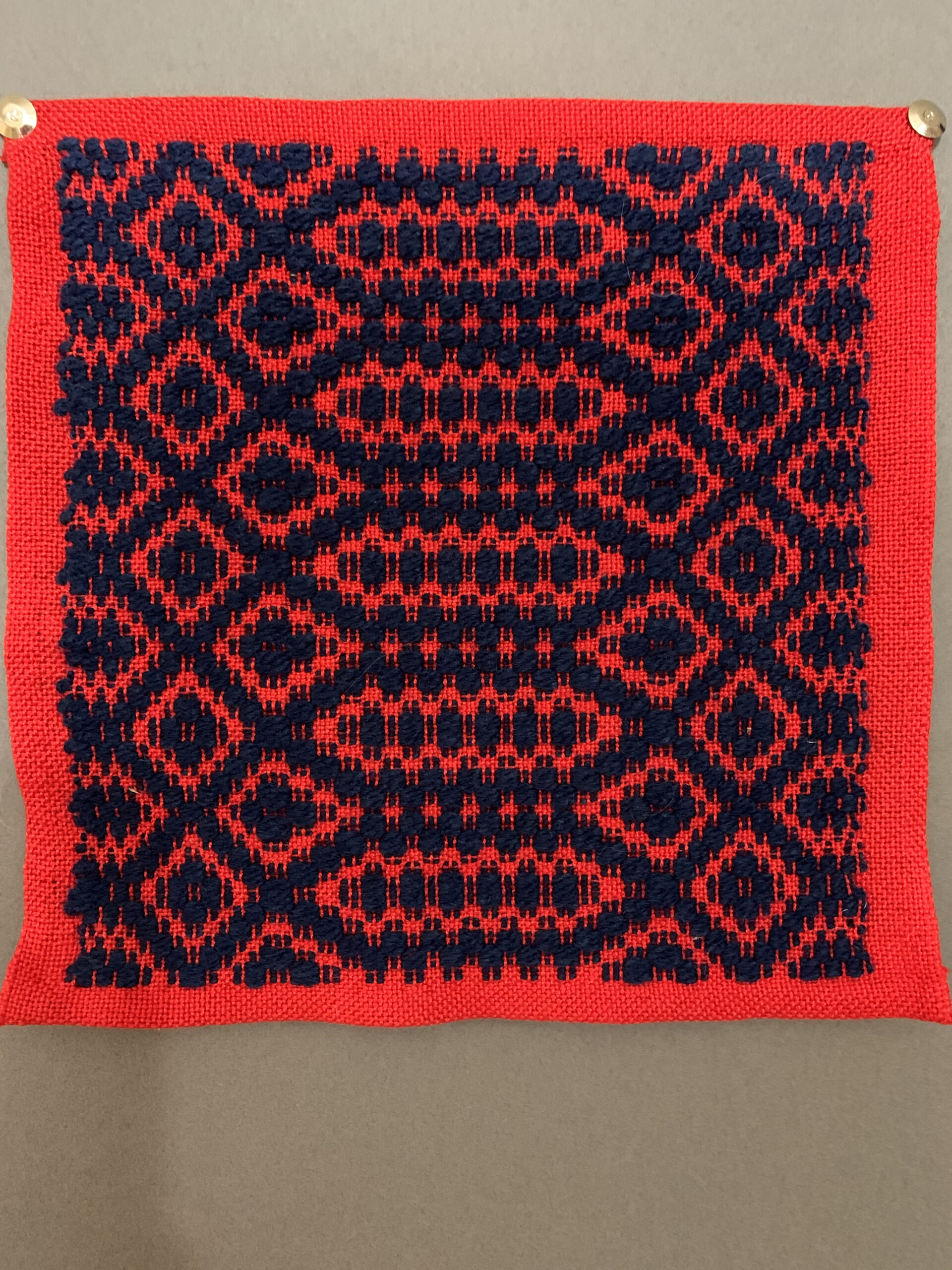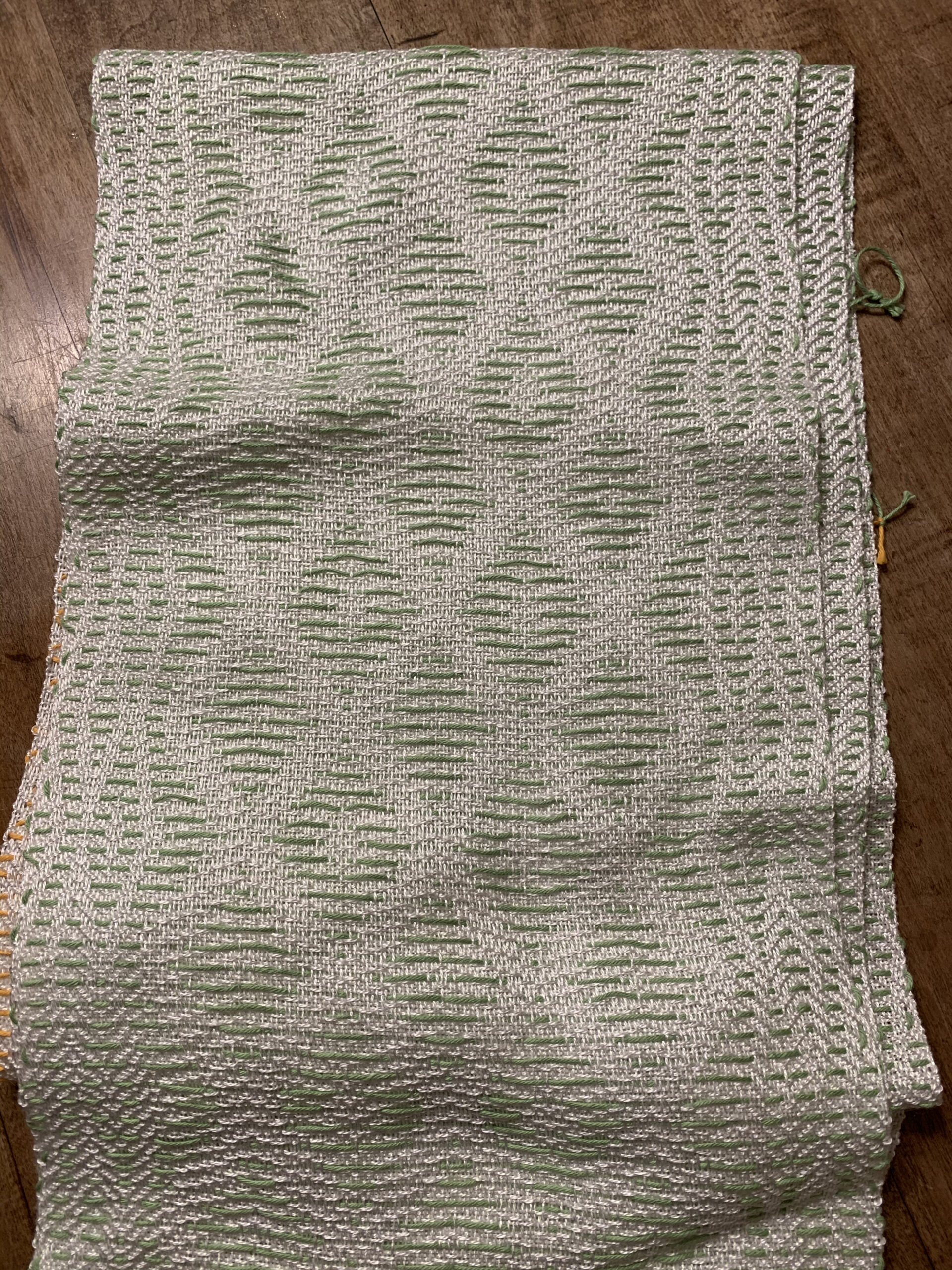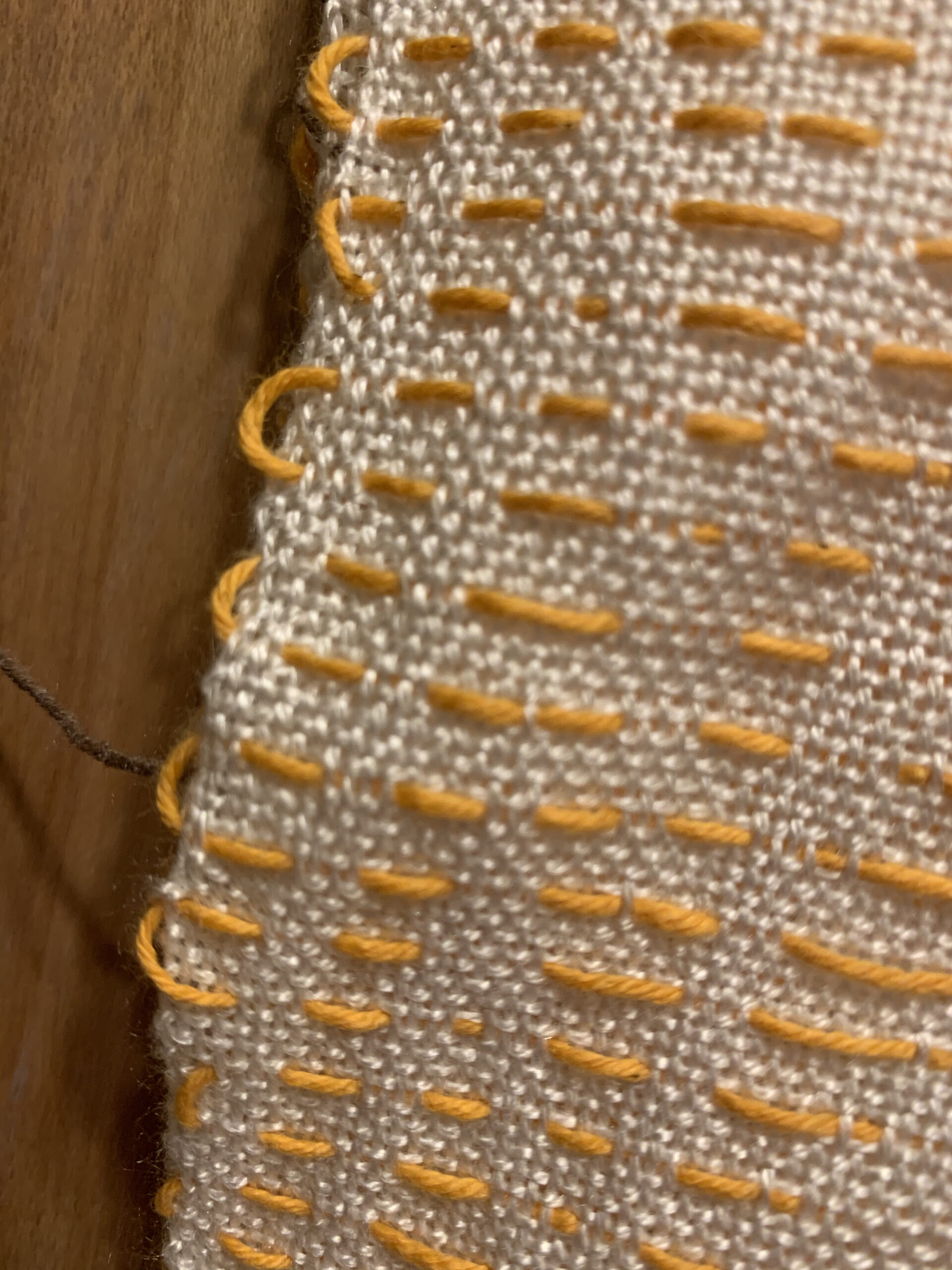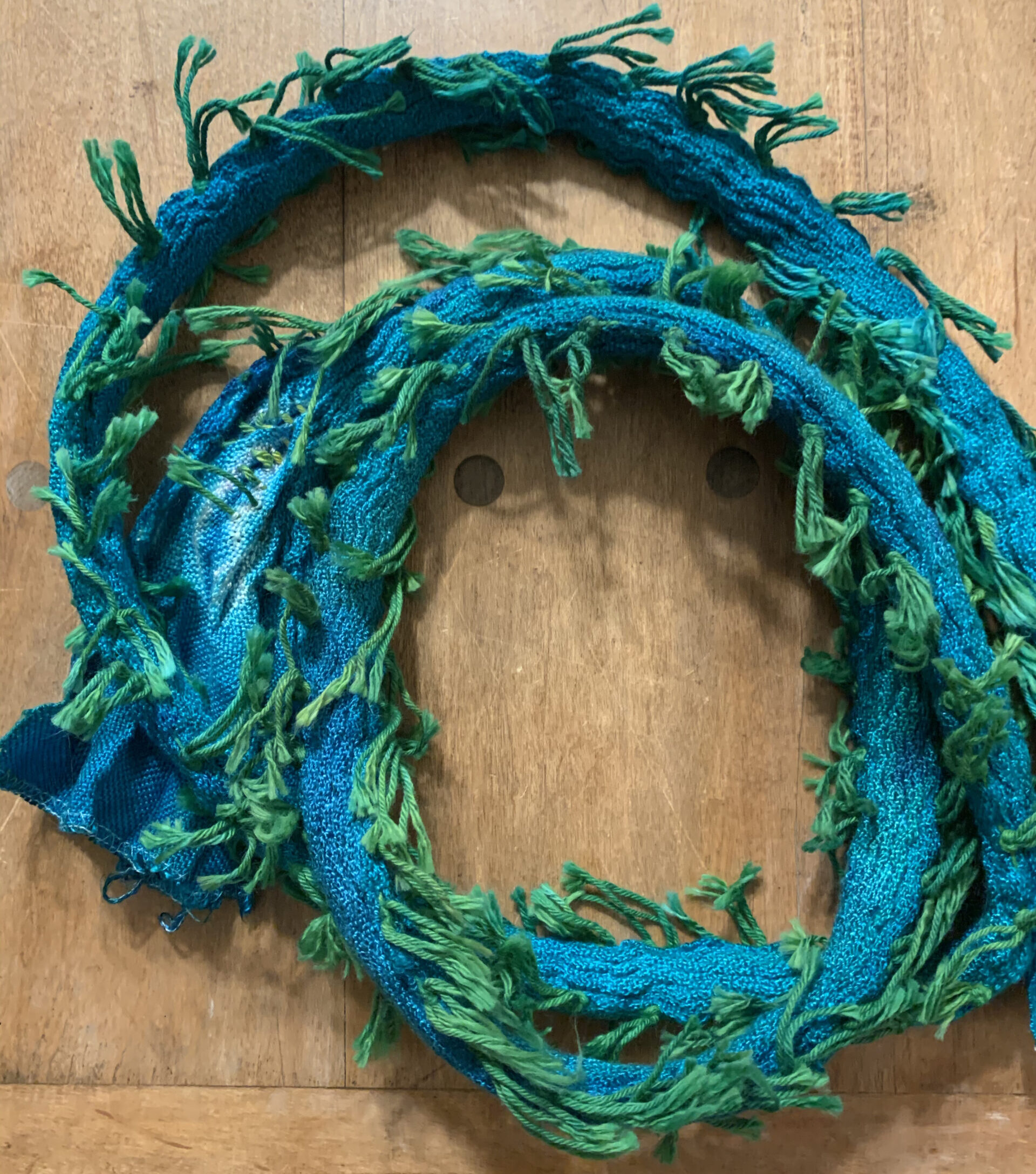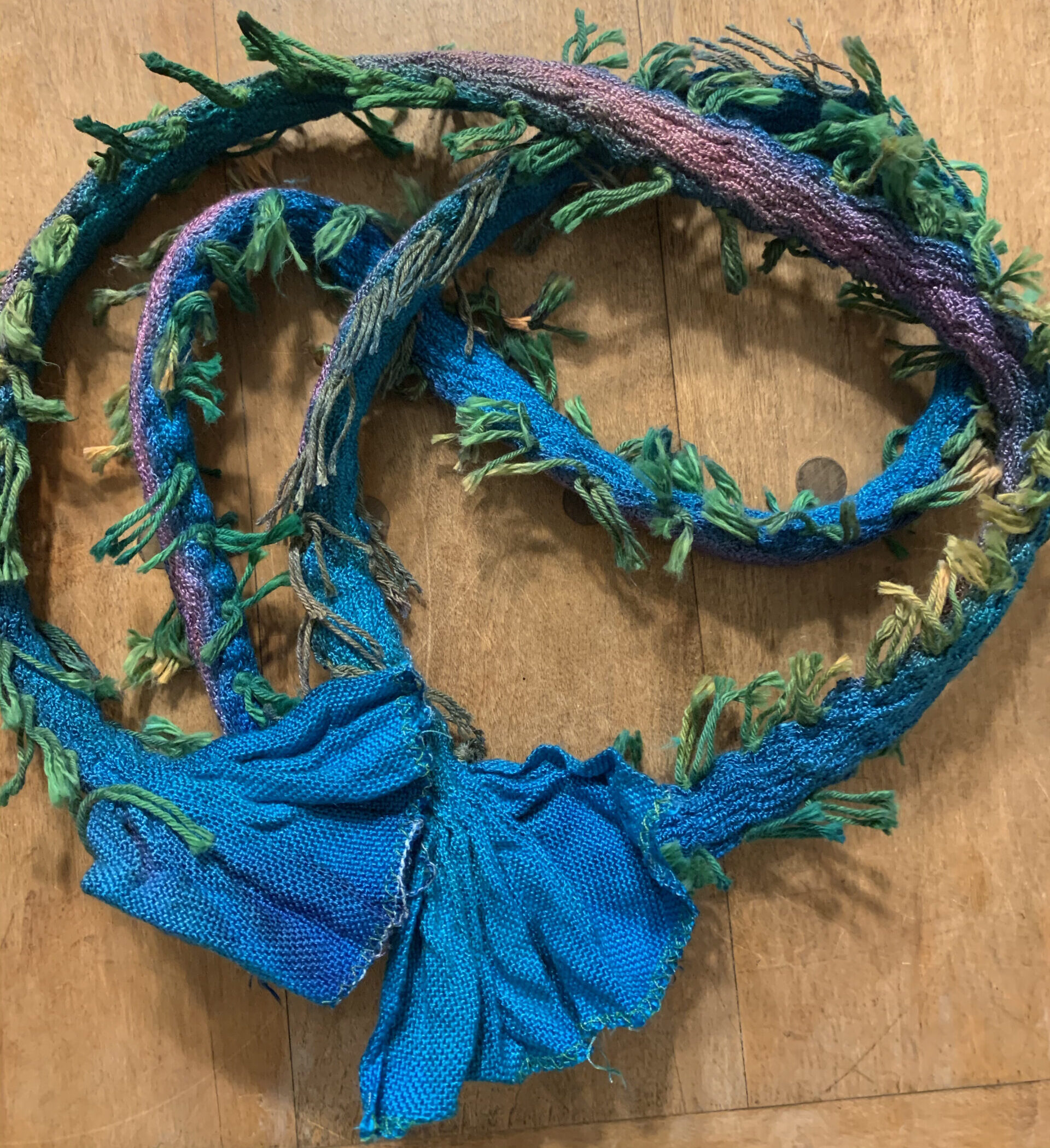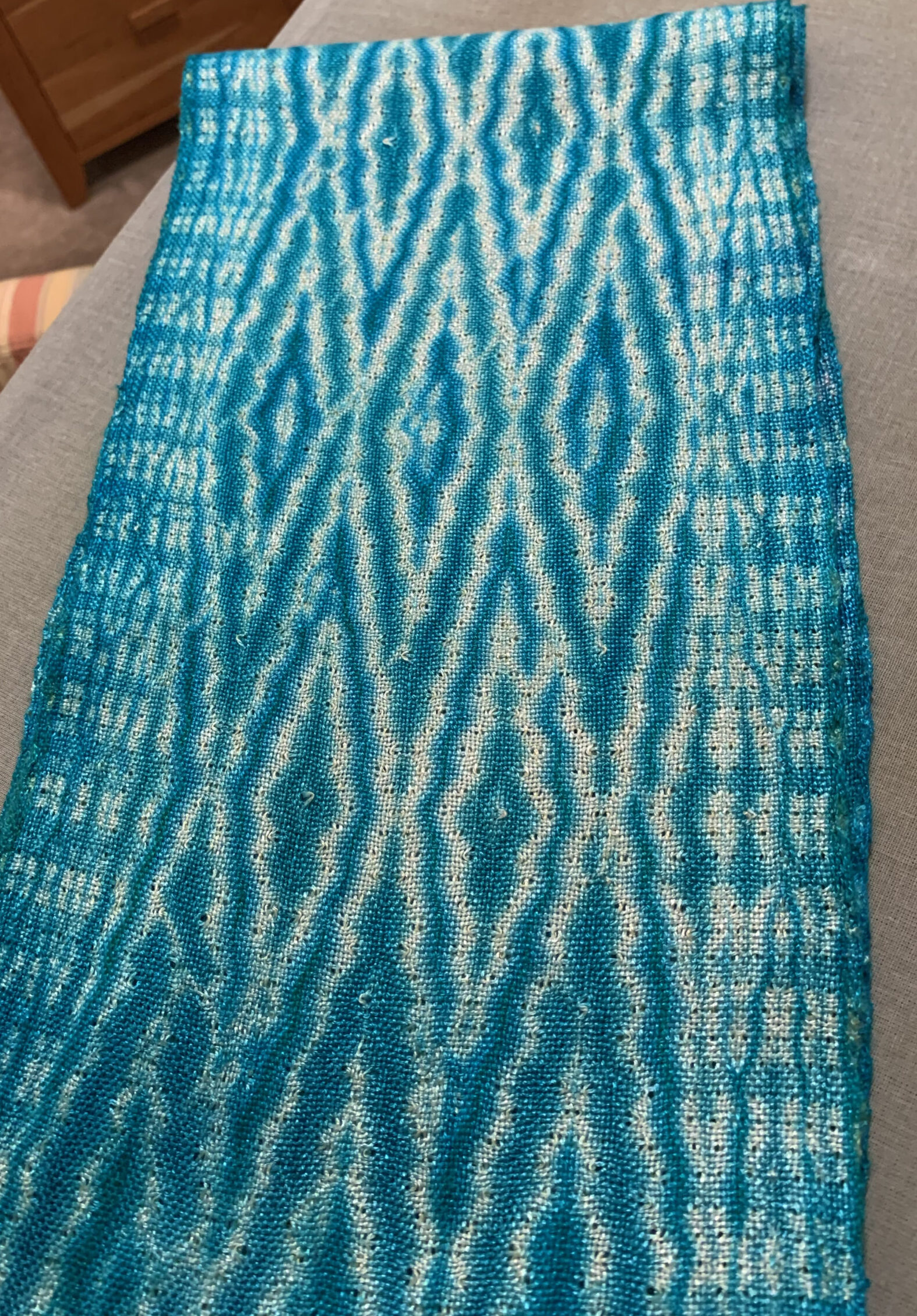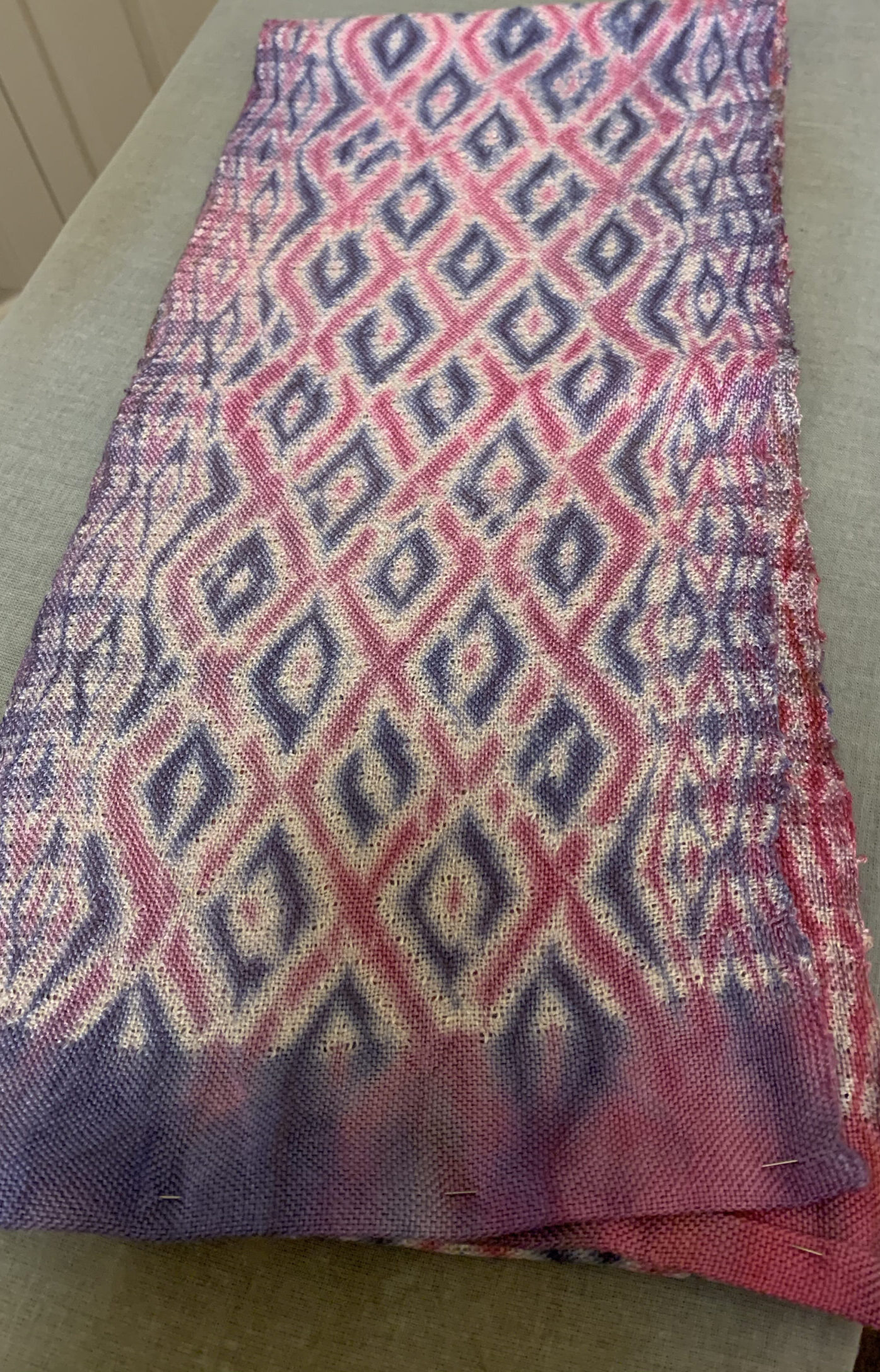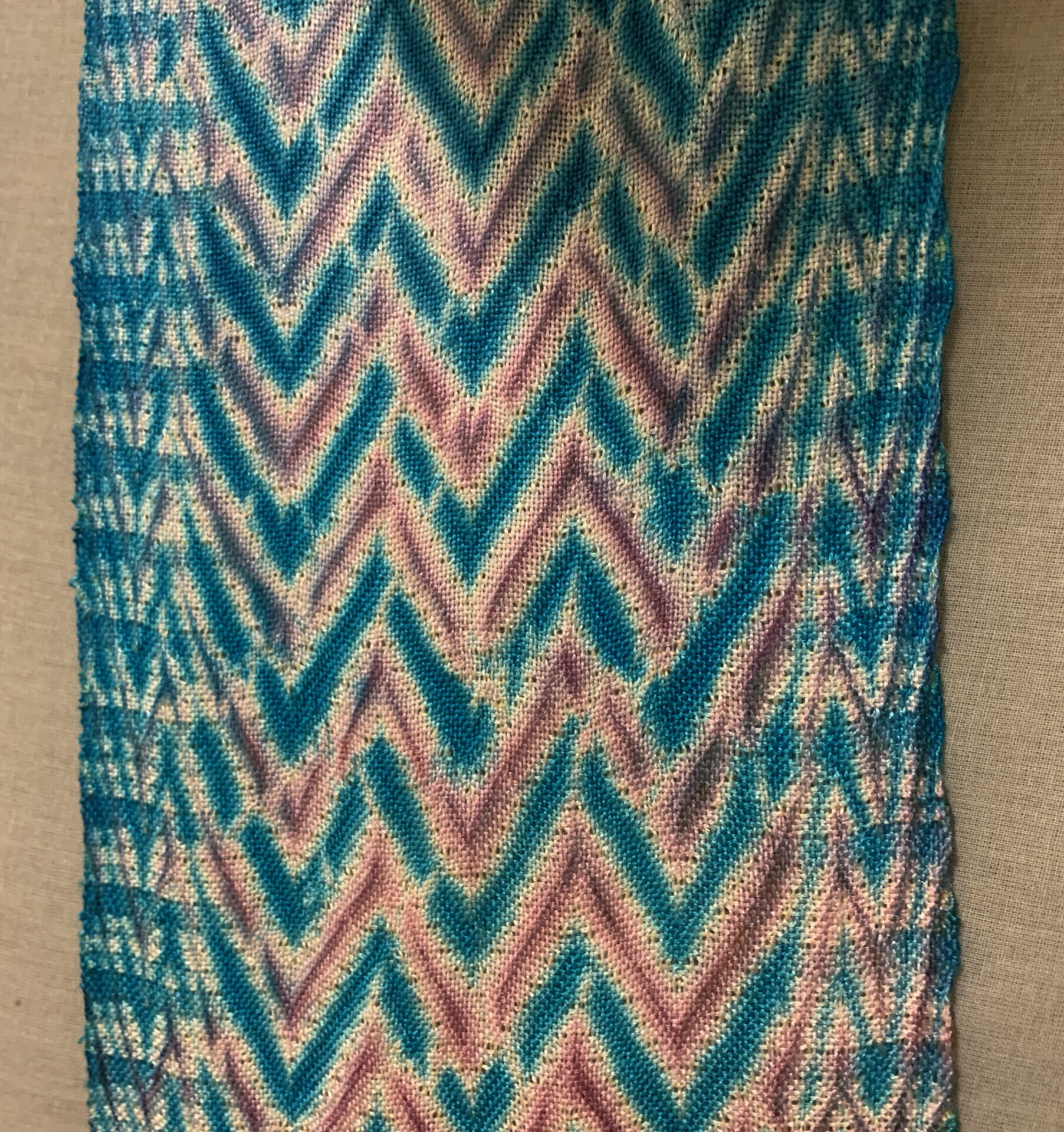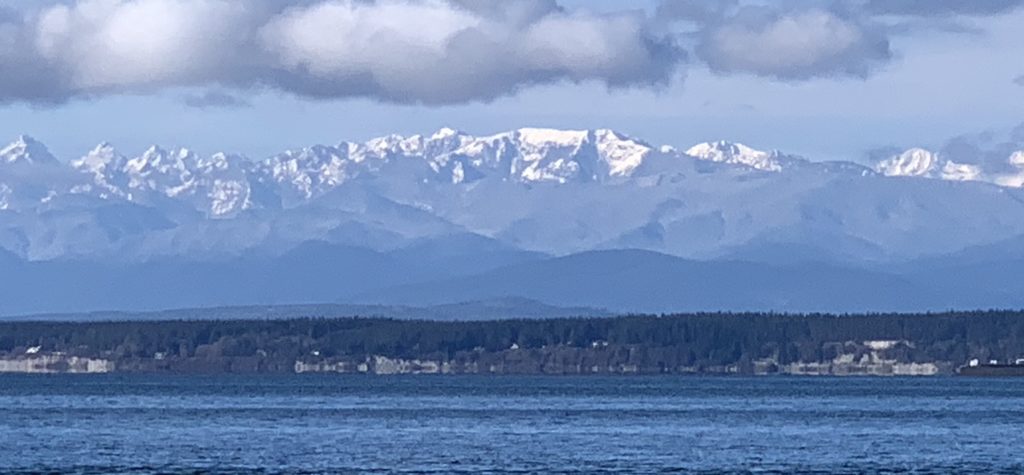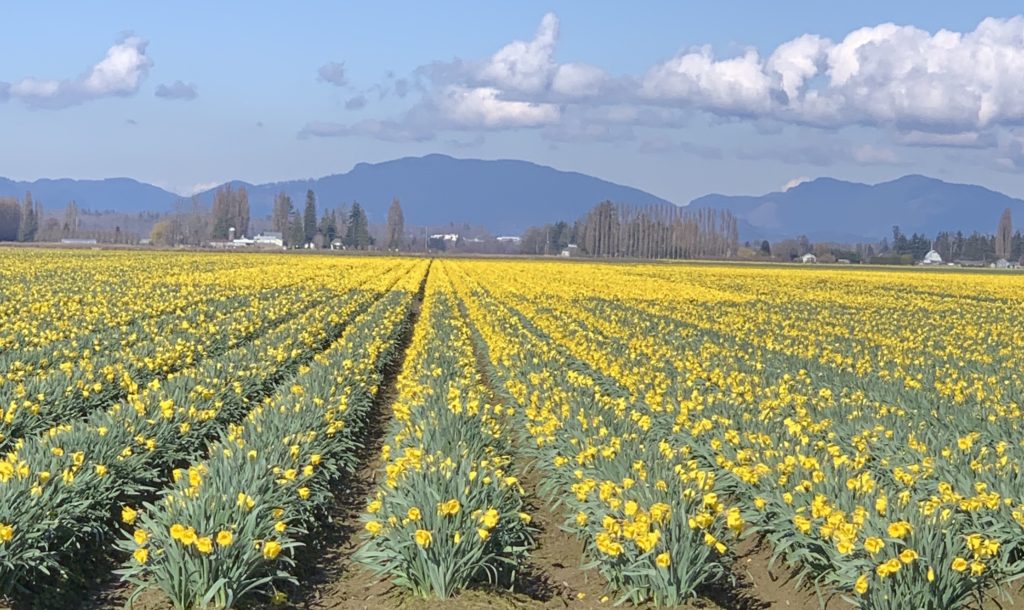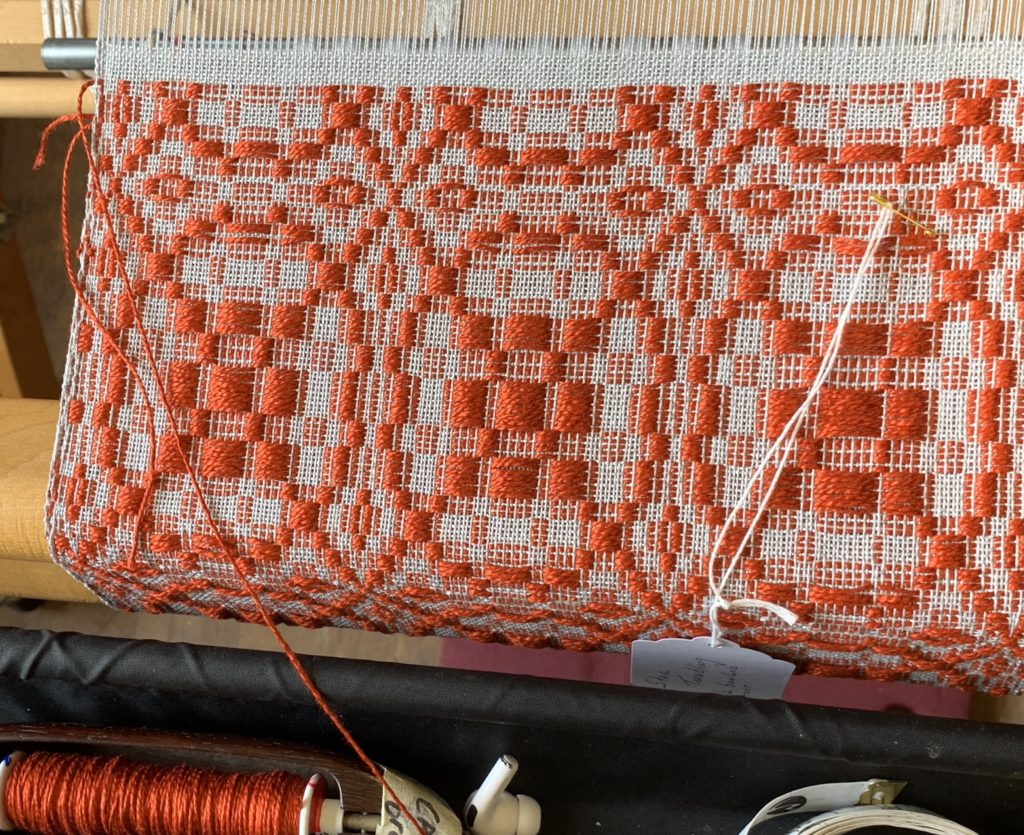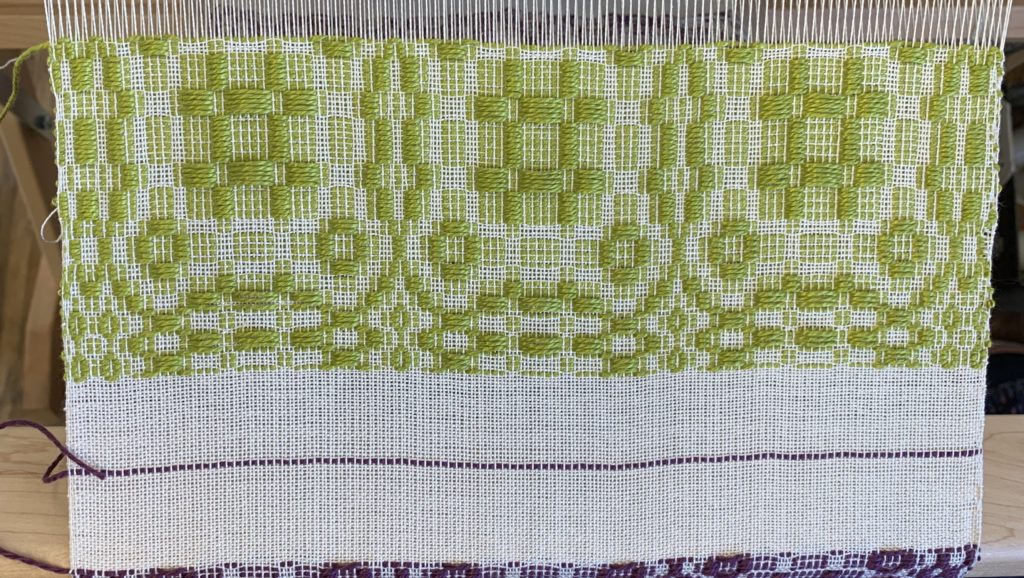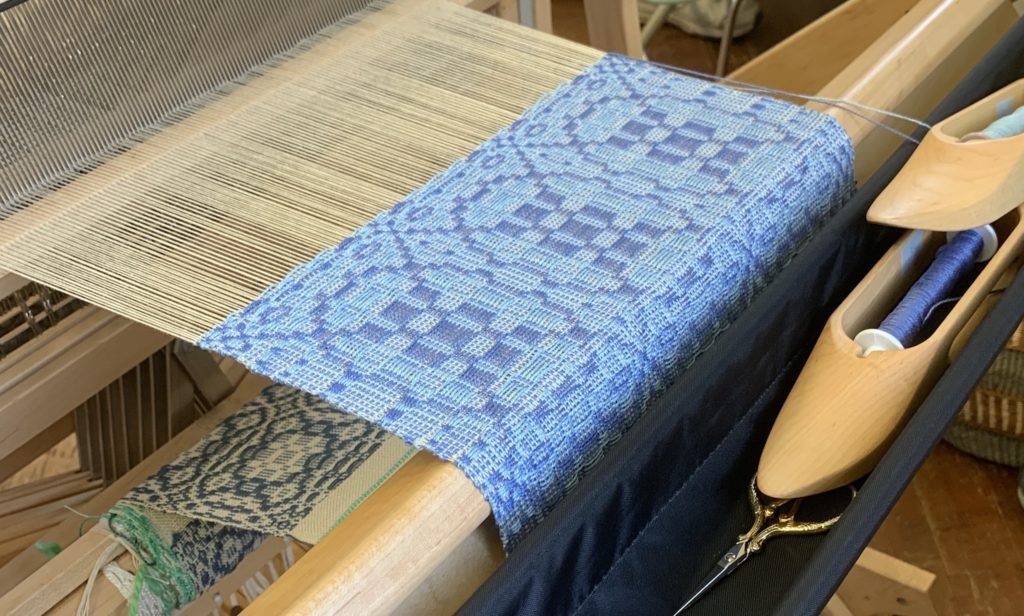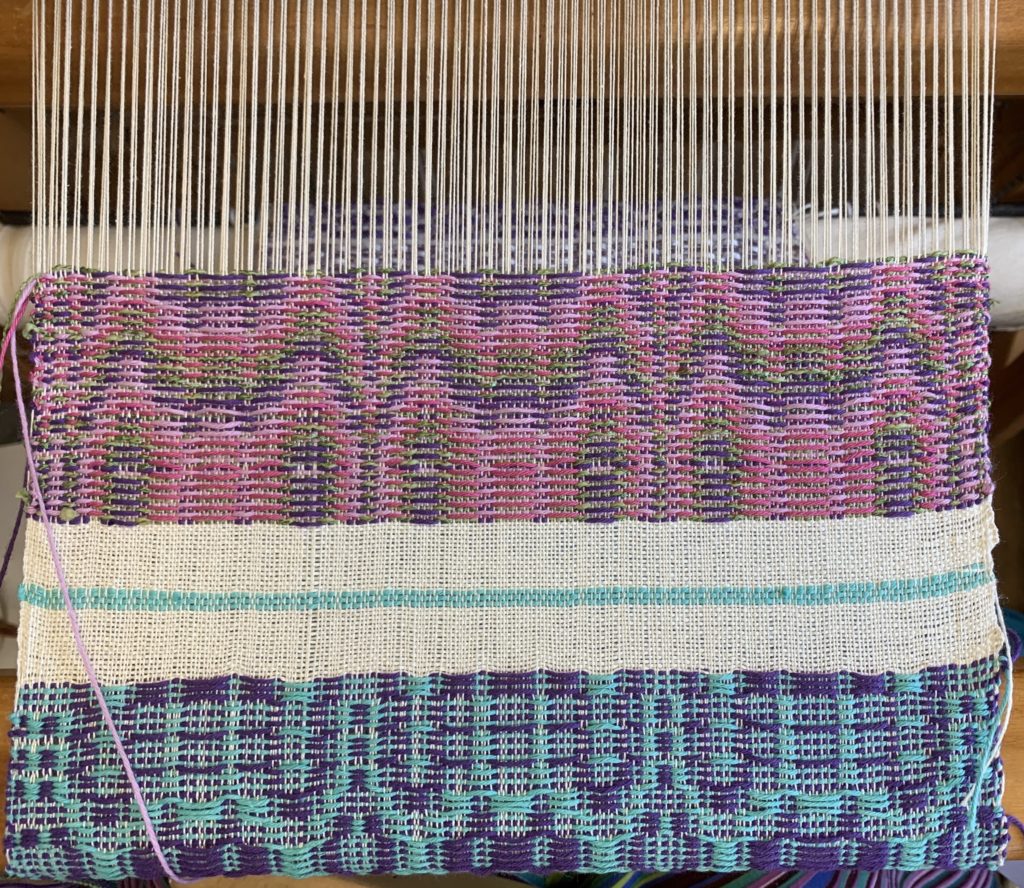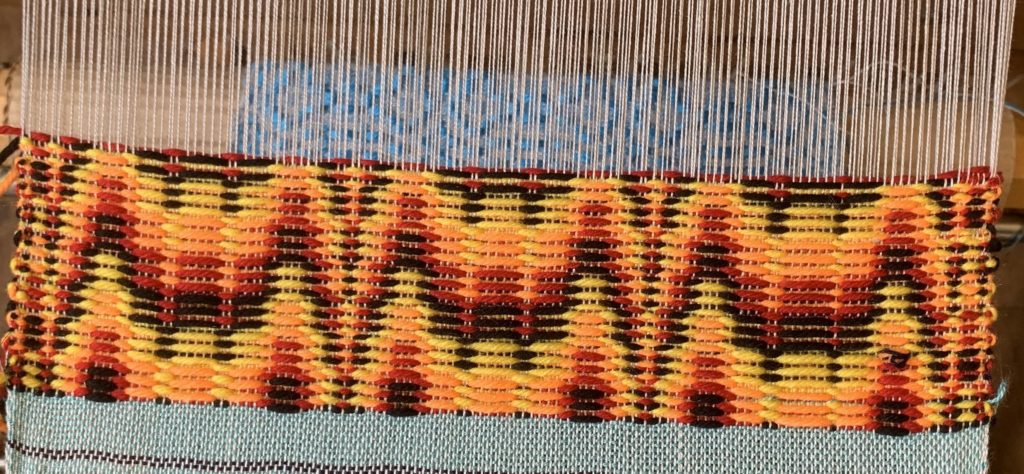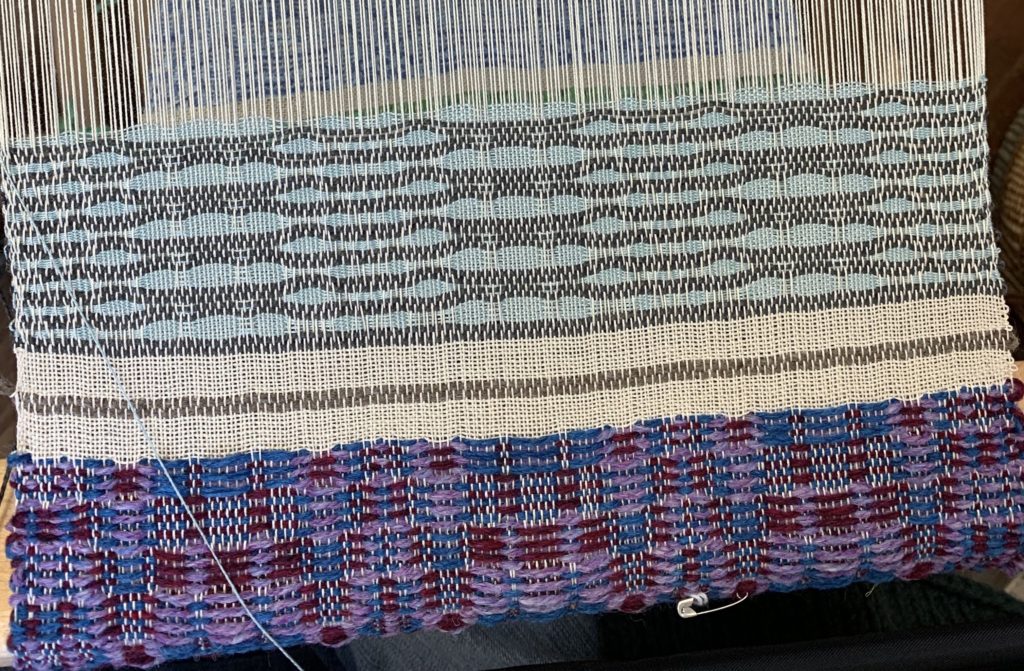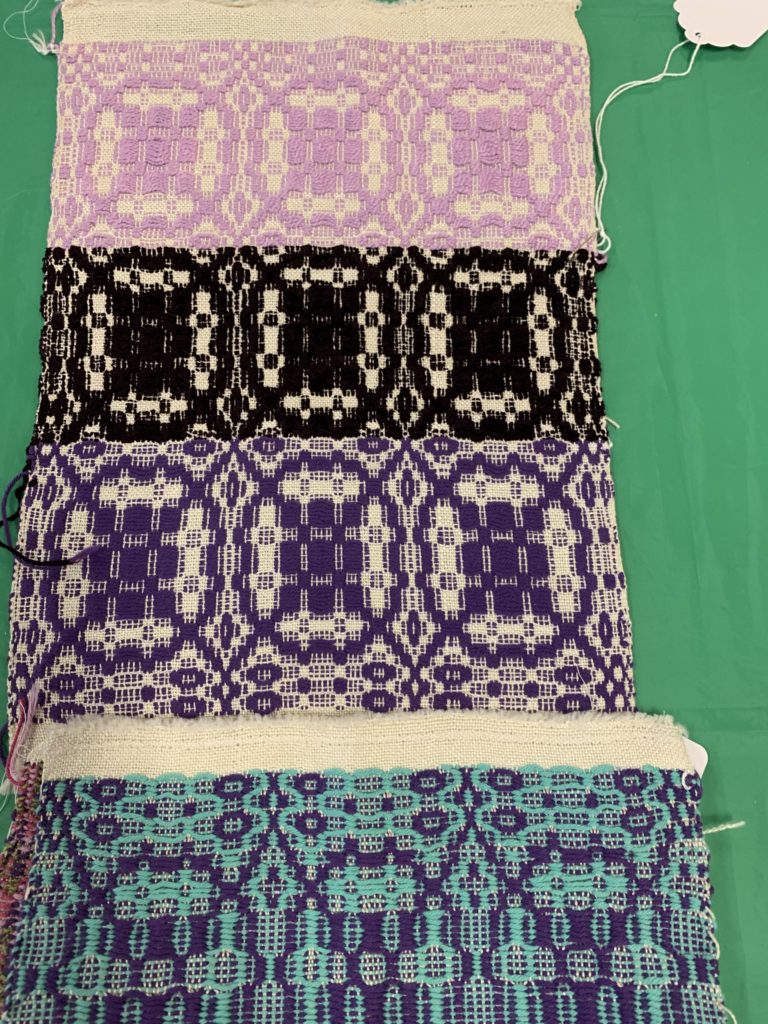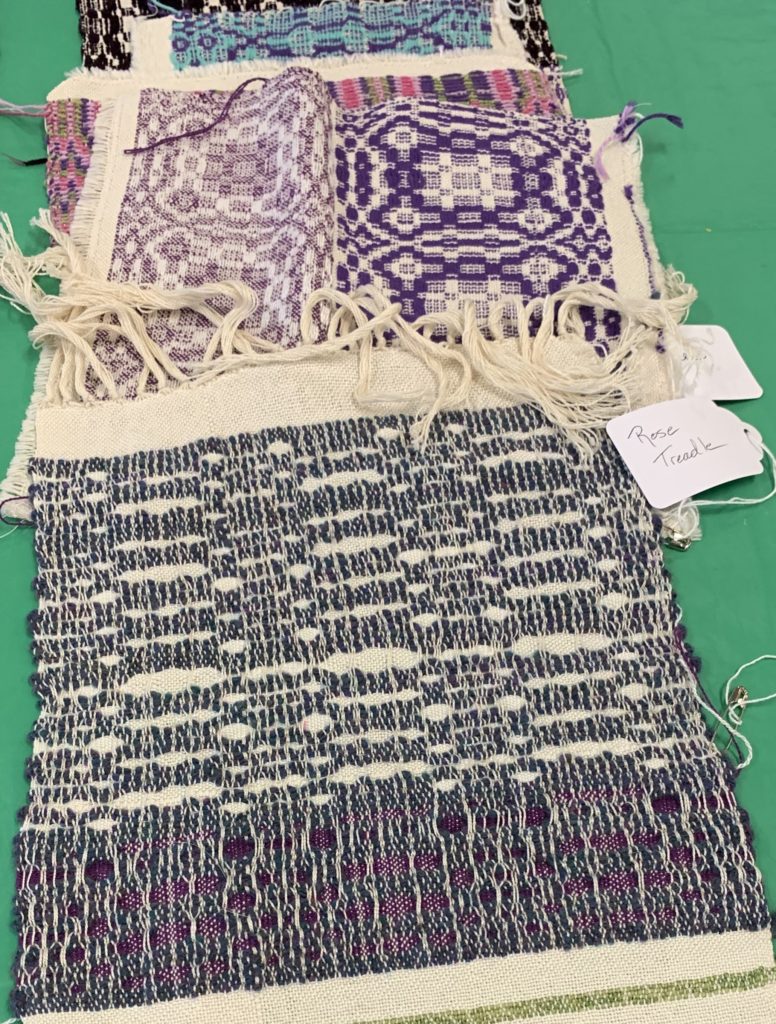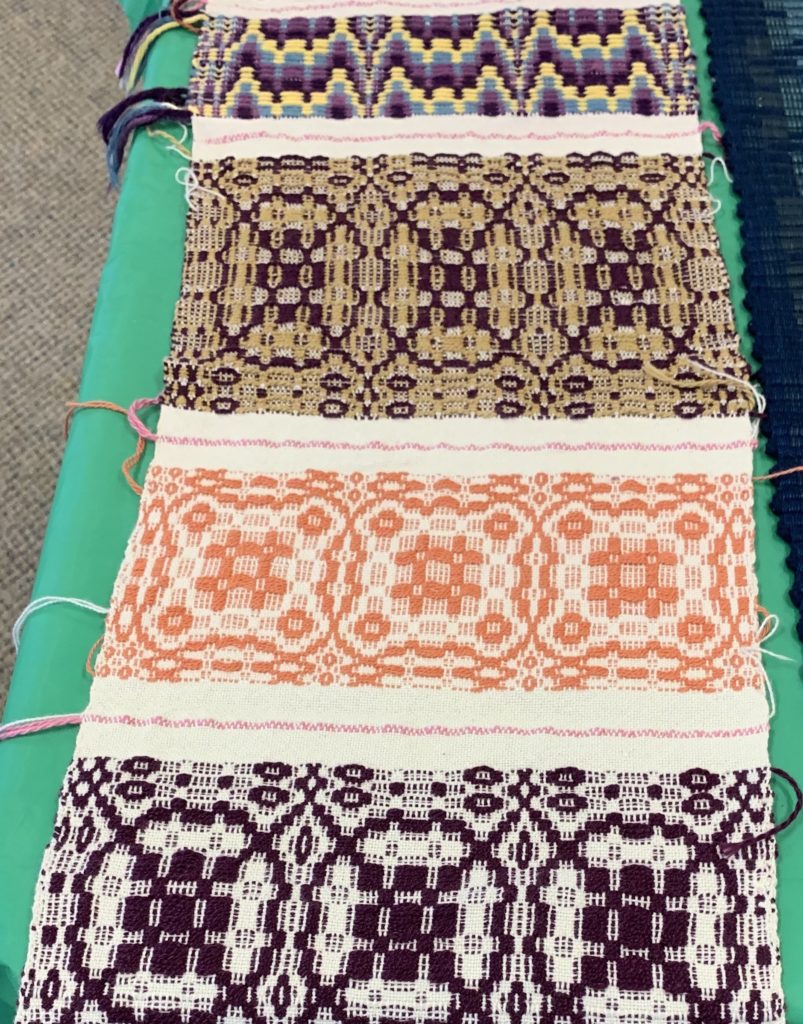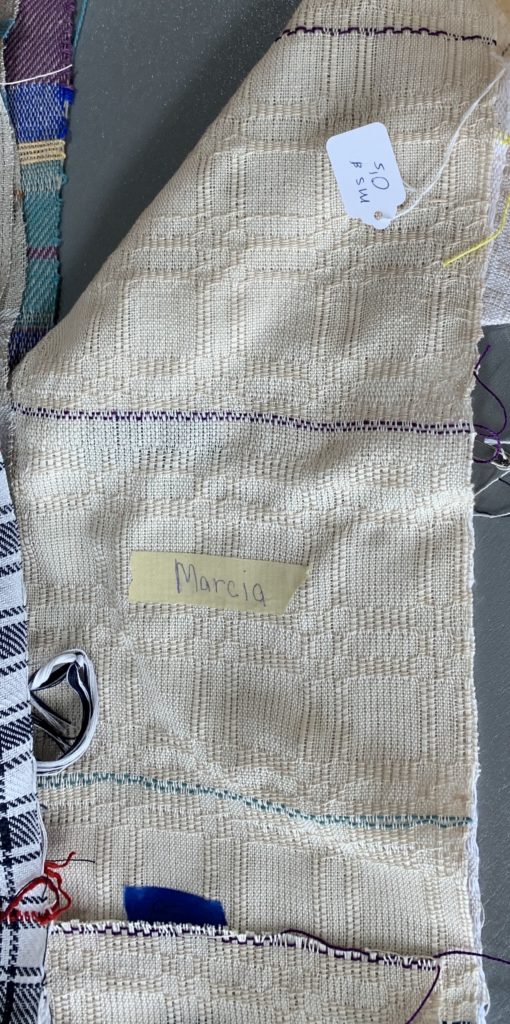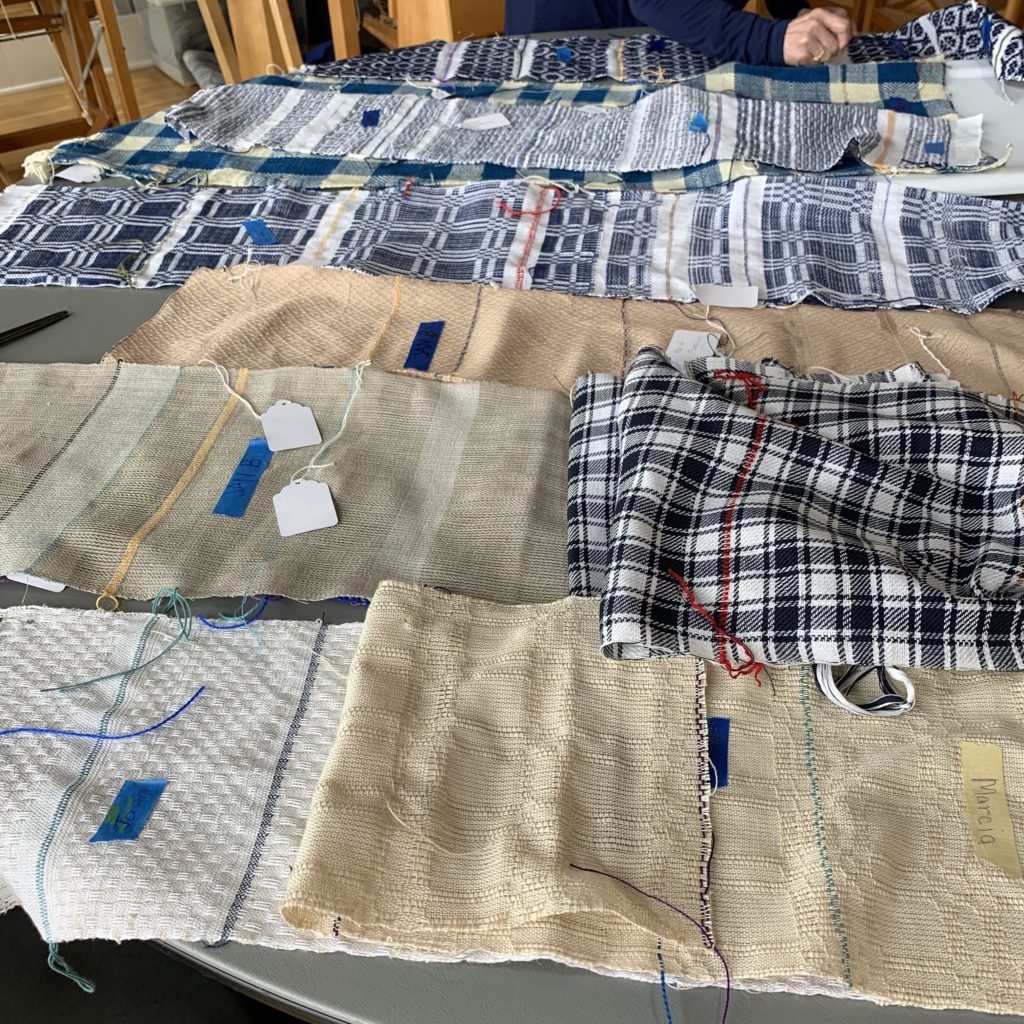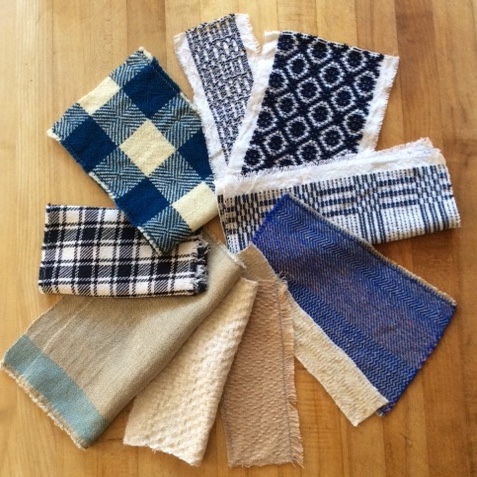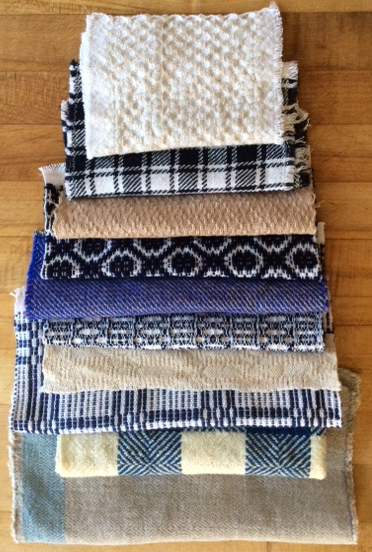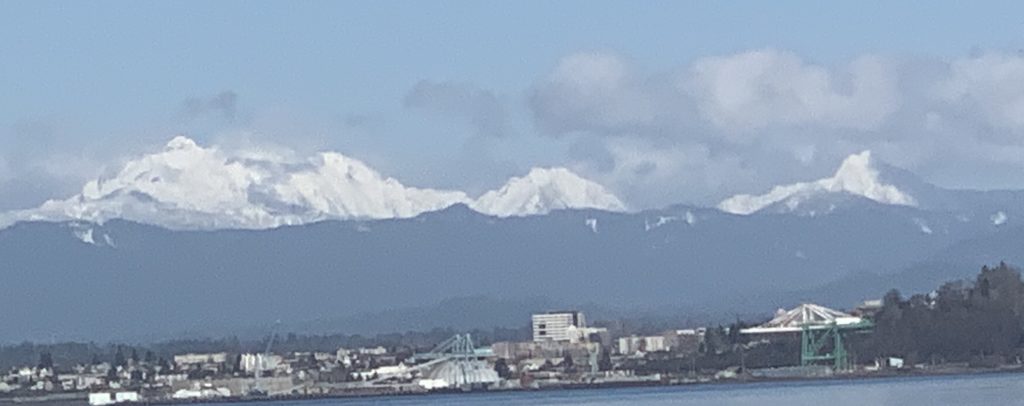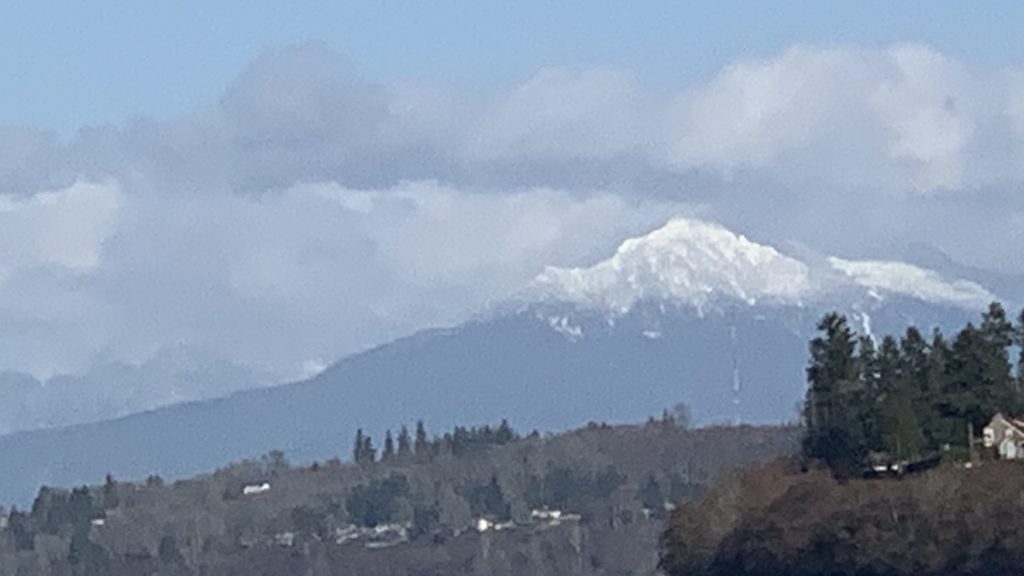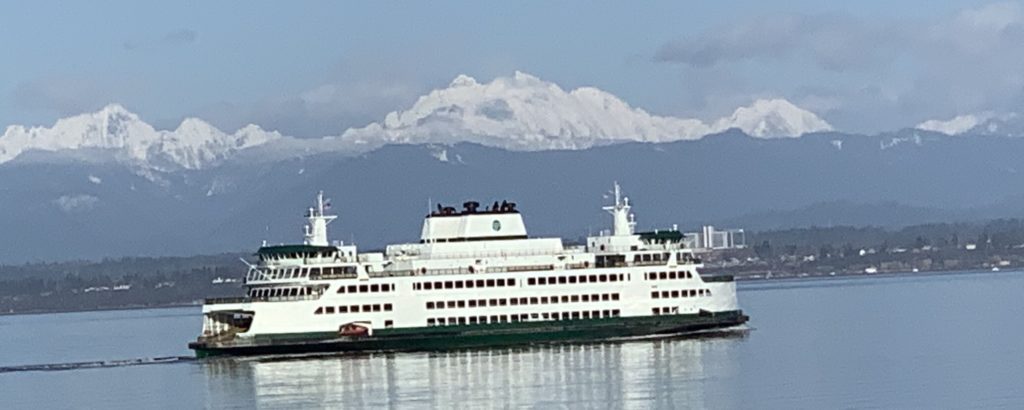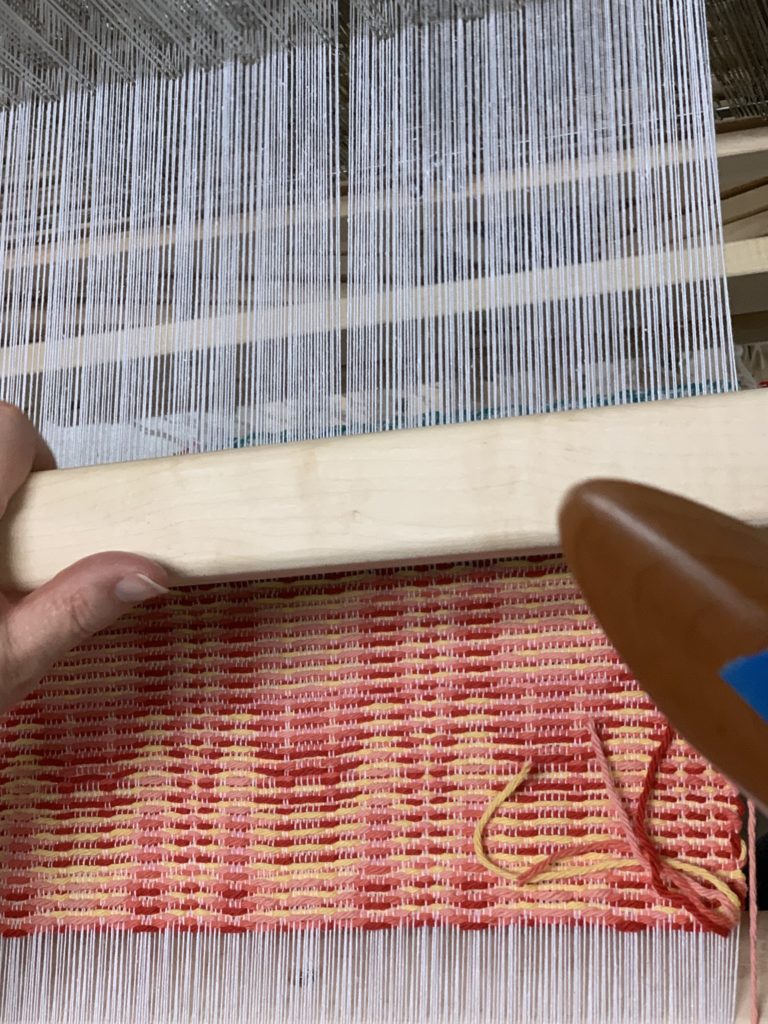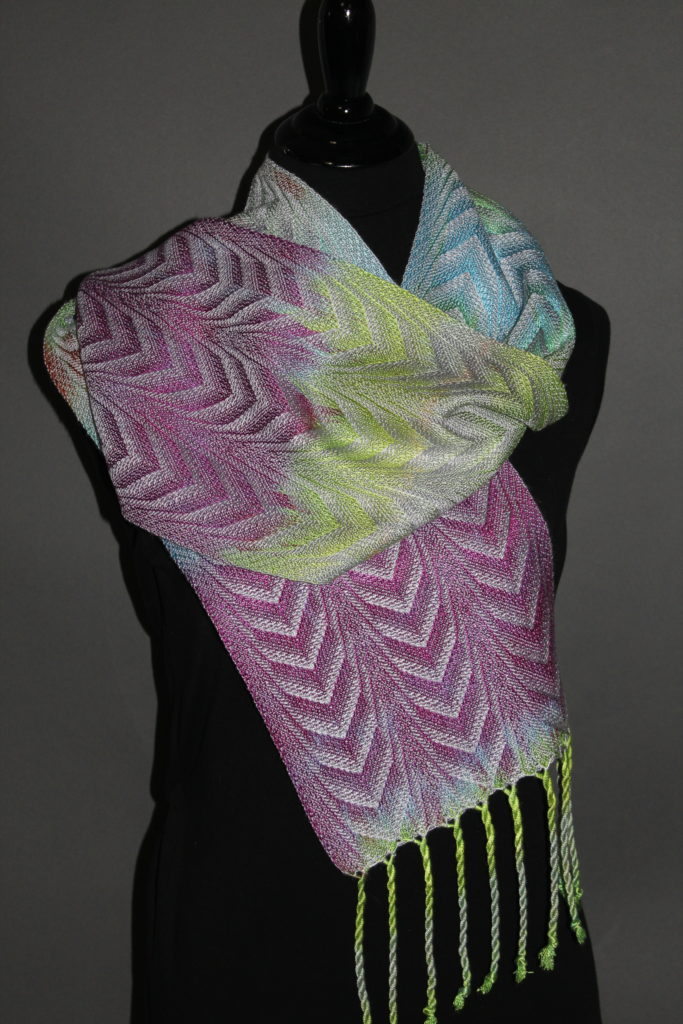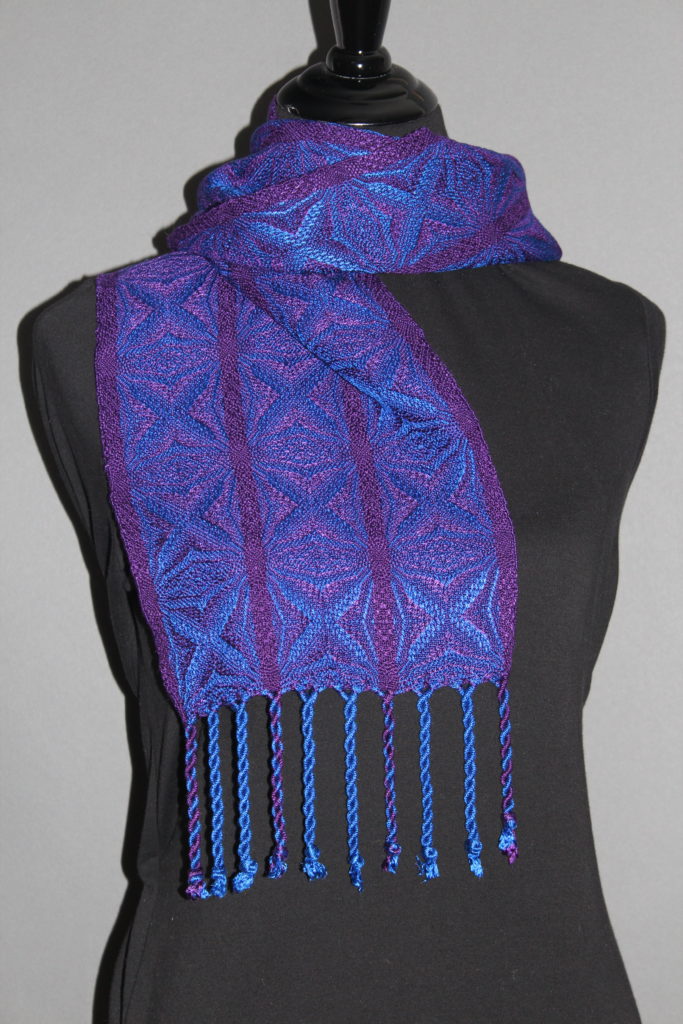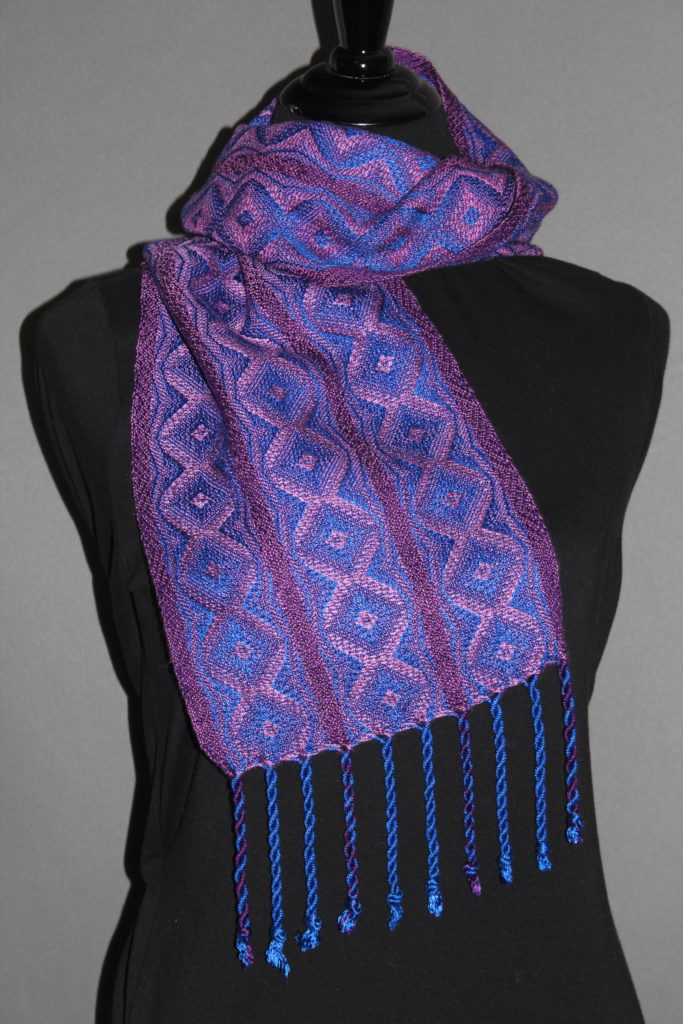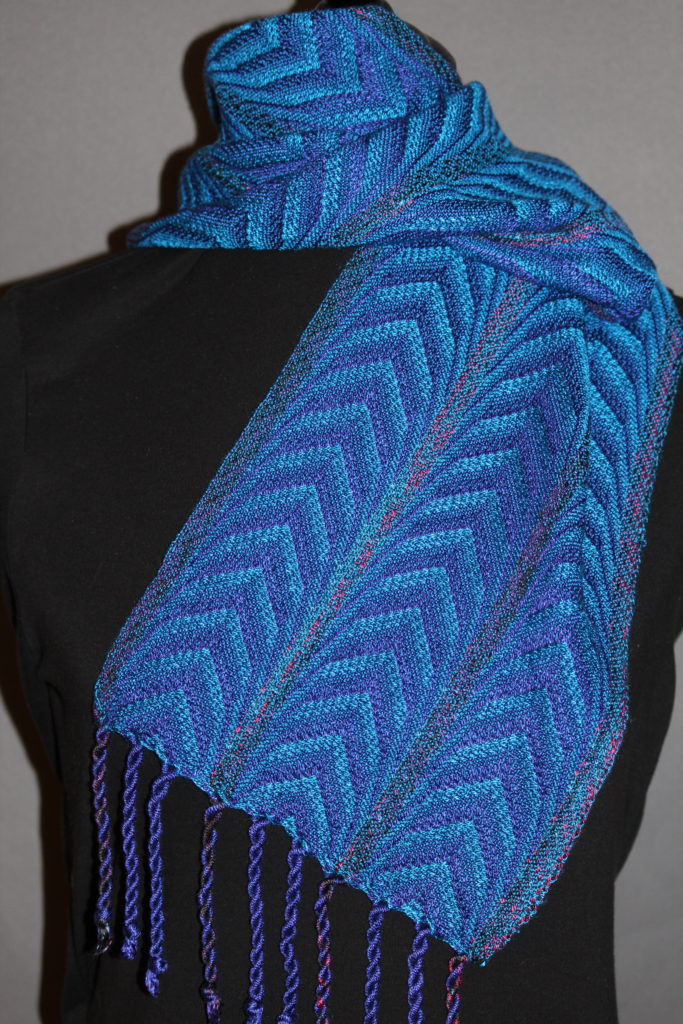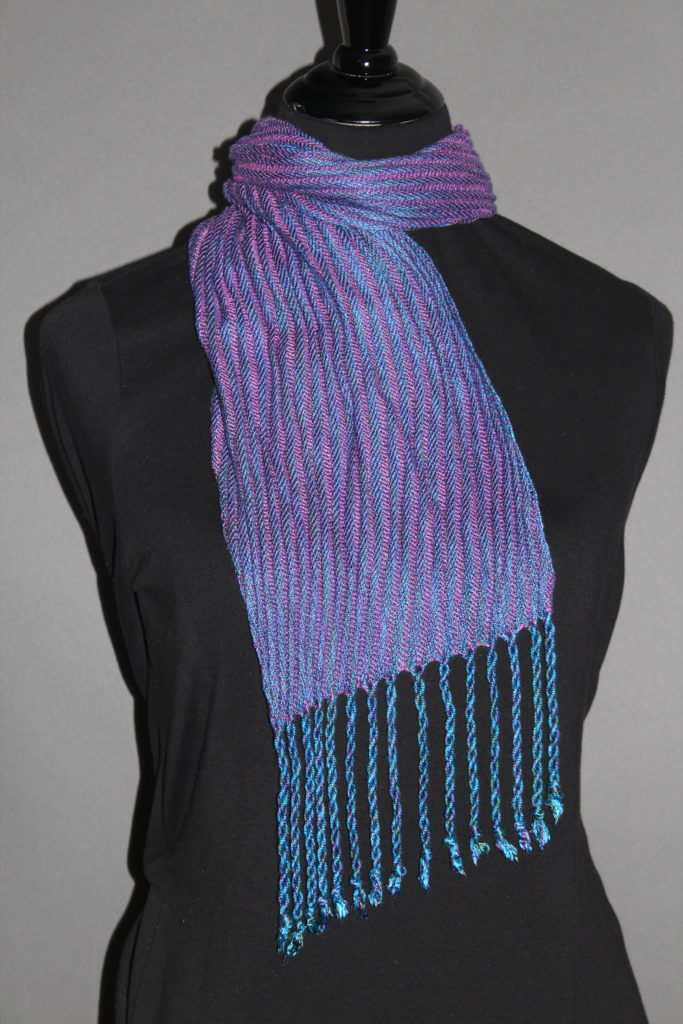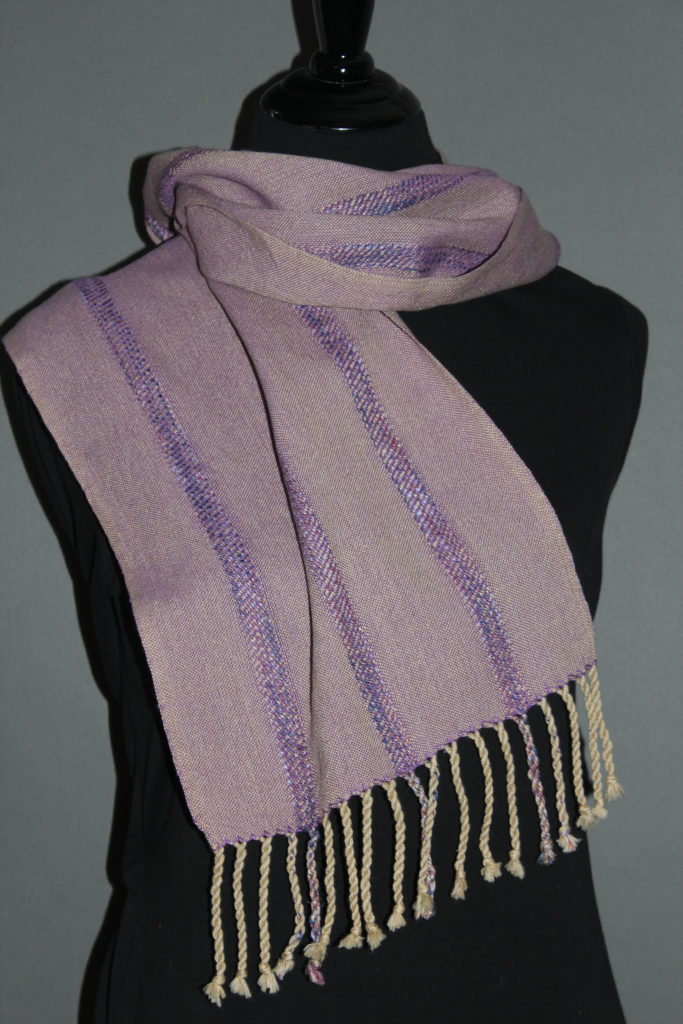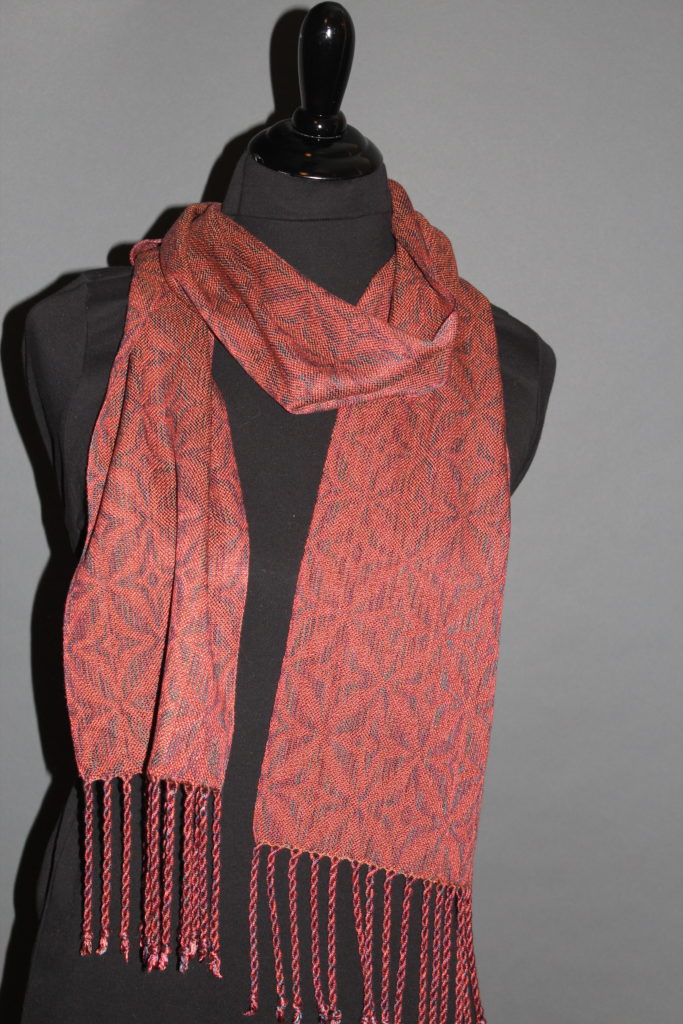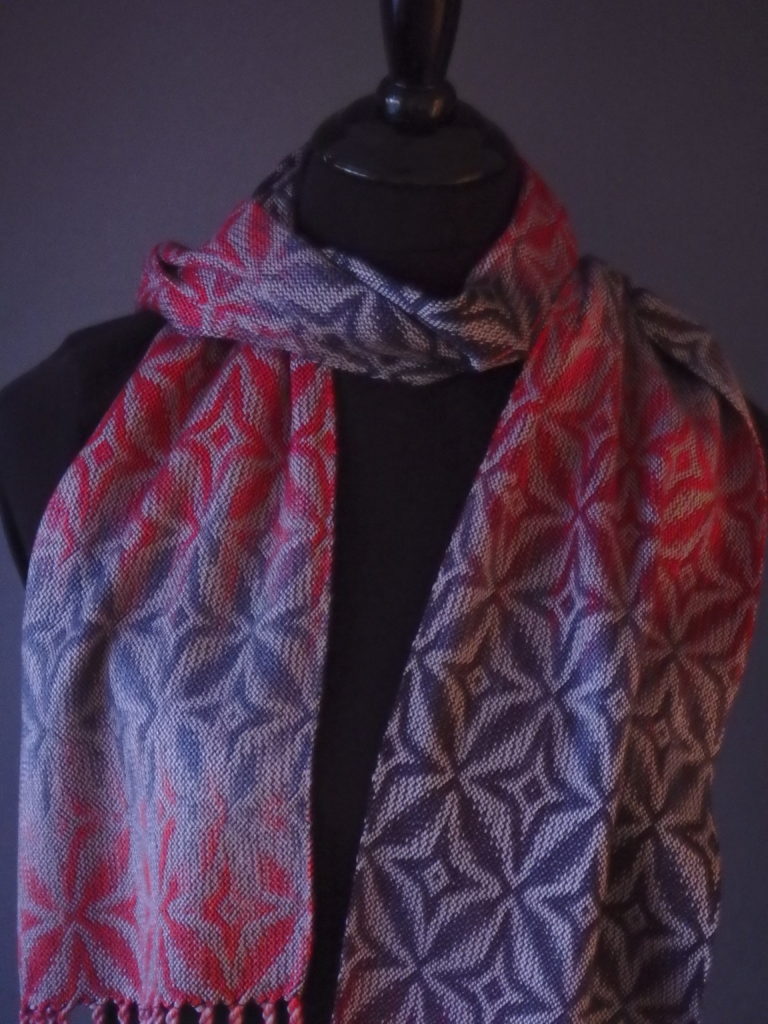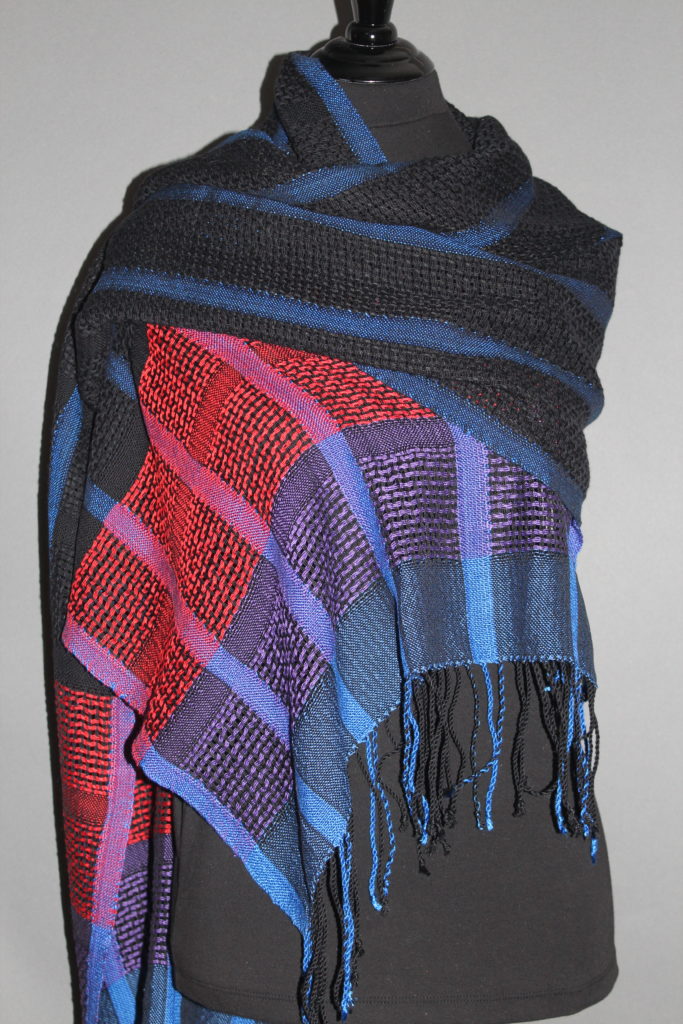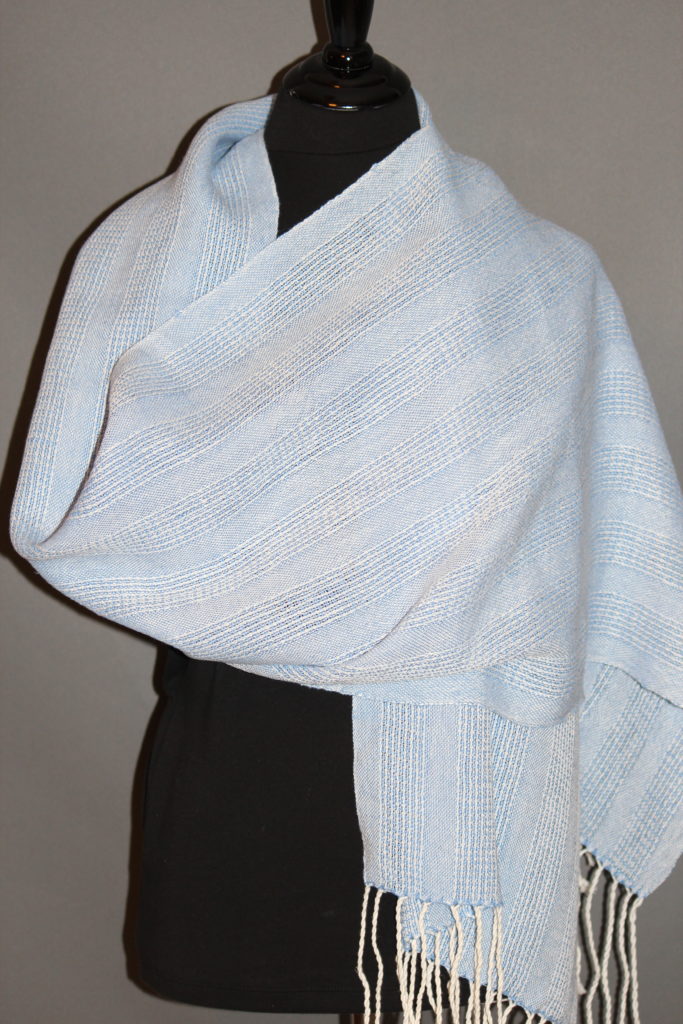I just returned from a couple of months in our condo in Tucson, Arizona. We did a lot of hiking and exploring there, but we didn’t have room for a floor loom. What’s a weaver to do with two months and no loom? In past years I have brought a tapestry loom with me, but decided to go in a different direction this year, so I went out and bought a potholder loom. I’m used to designing using complicated weave structures so restricting myself to a child’s toy seemed a bit of a step down. I expected to be bored until I looked into the world of grown-up potholder weavers. Wow!
It seems potholders are a thing now. A friend even told me she recently saw someone selling $20 potholders at a farmers’ market. I went online and searched for information and found there are plenty of inspiring websites and YouTube videos with clear instructions. After seeing some fun patterns and watching a few videos I decided to try my hand.
I love the color and weave effect called log cabin and decided to try it on my first potholder. It’s created by alternating dark and light loops vertically. Halfway across the loom, you put two lights or two darks next to each other then continue to alternate light and dark loops. You do the same thing with the color order of the horizontal loops as you weave them in. I used orange and yellow loops.
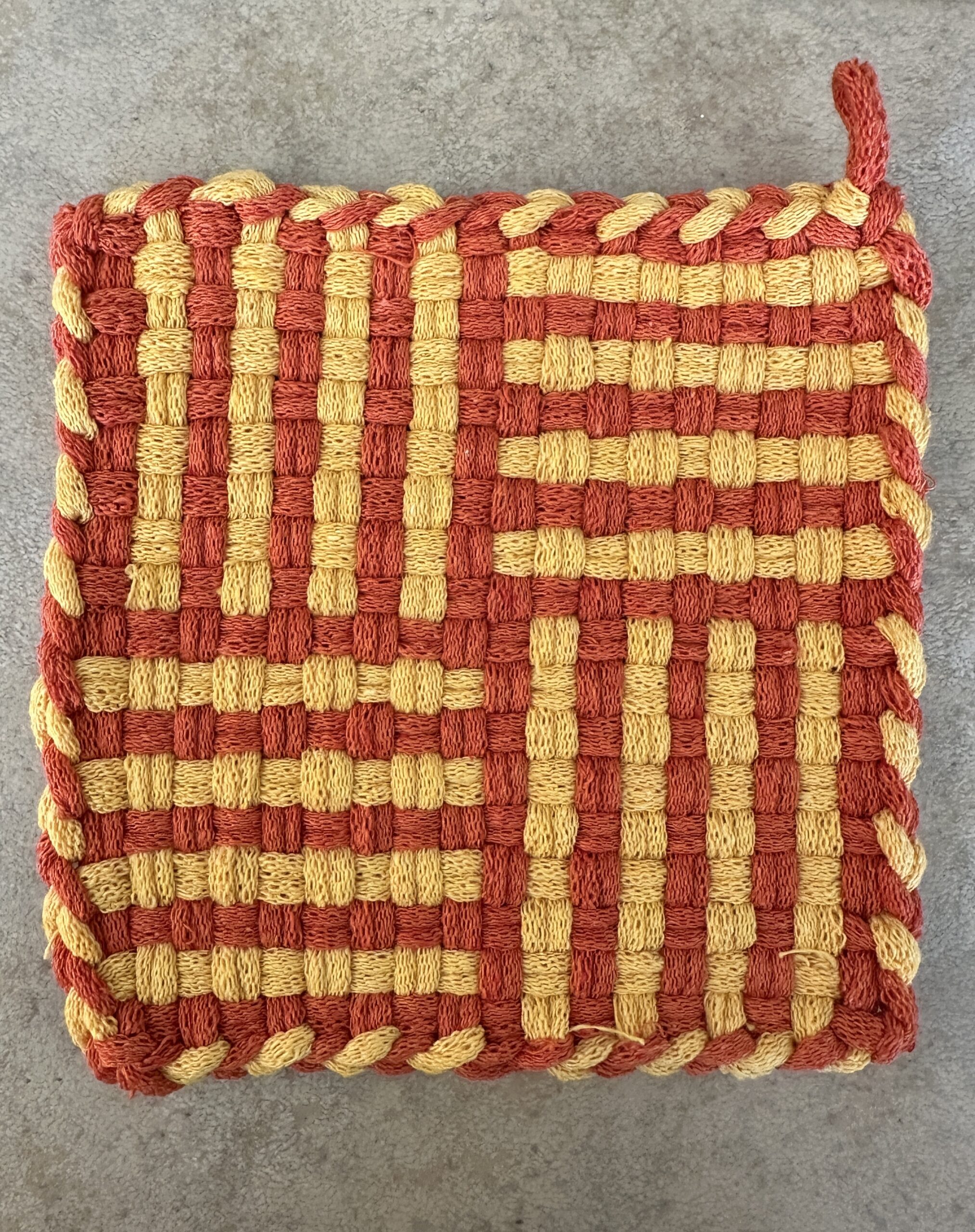
Next I tried another color and weave effect to get a houndstooth pattern. For this pattern you use two light loops, then two dark loops as you put on the vertical loops. Then you weave with the horizontal loops in the same color order–two light then two dark. I used red and pale yellow loops. Like my first potholder, the weaving was just over one, under one.
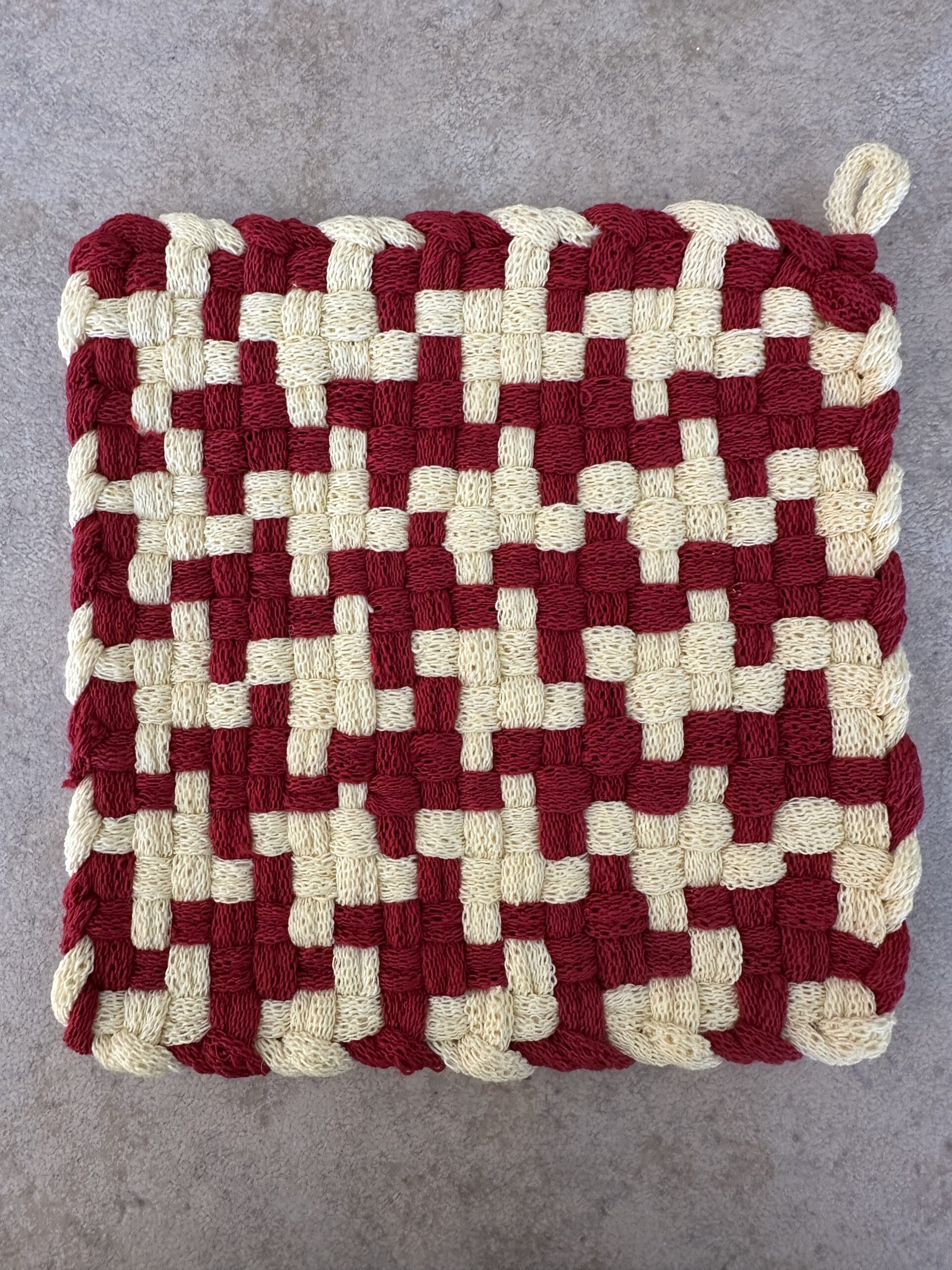
Next I got adventurous after watching Margie Duffy do some pretty cool stuff on her YouTube site. Here I kind of folded vertical and horizontal loops around each other as I put the loops on. You have to watch her video to get the idea. I used pink and lavender loops in this potholder.
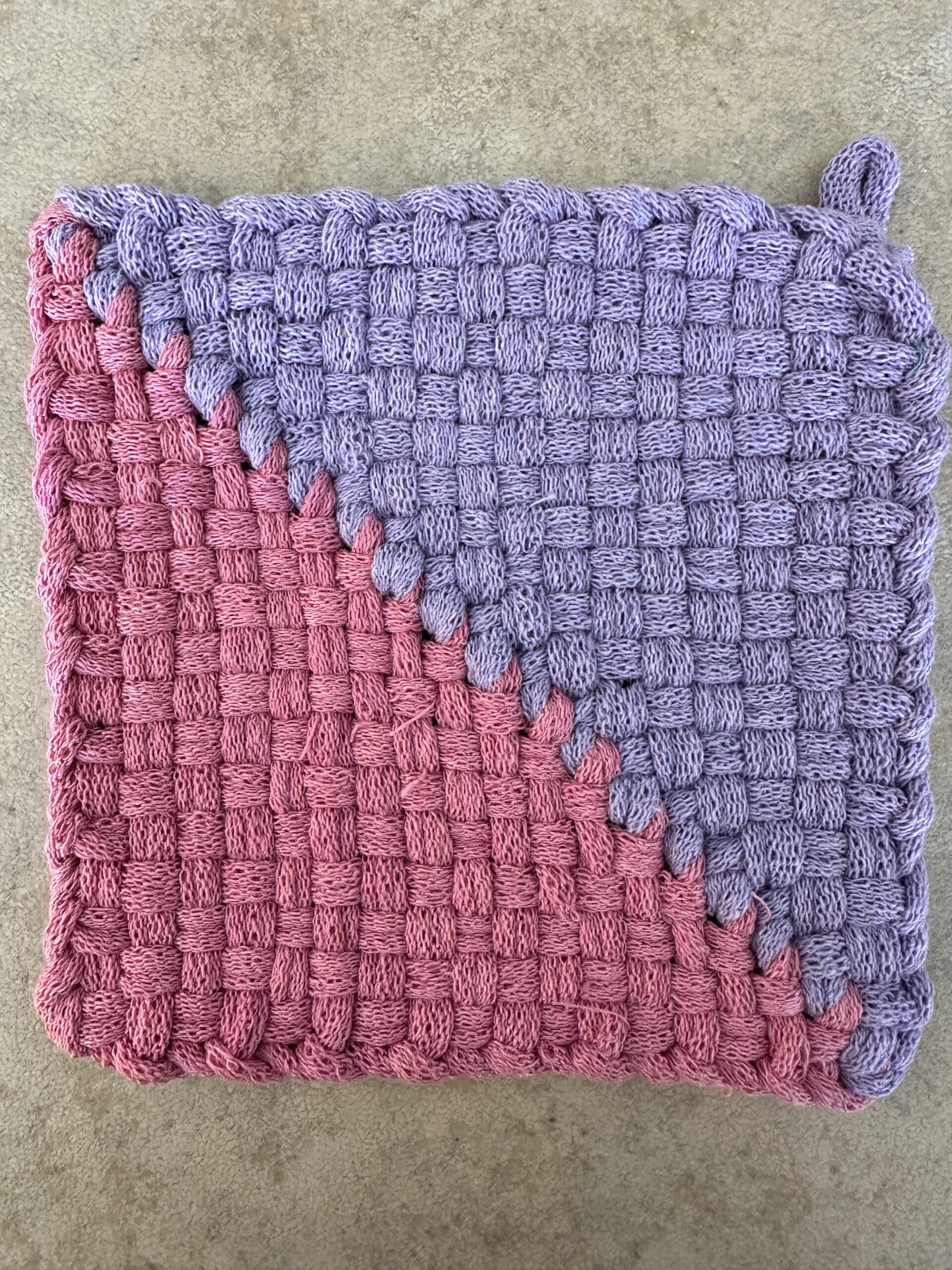
For my fourth potholder I went back to a variation on log cabin. Two quadrants of the potholder give an effect of horizontal stripes. One quadrant shows stripes in pink and orange while the other quadrant shows stripes of light blue and medium blue. The other two quadrants show all four colors.
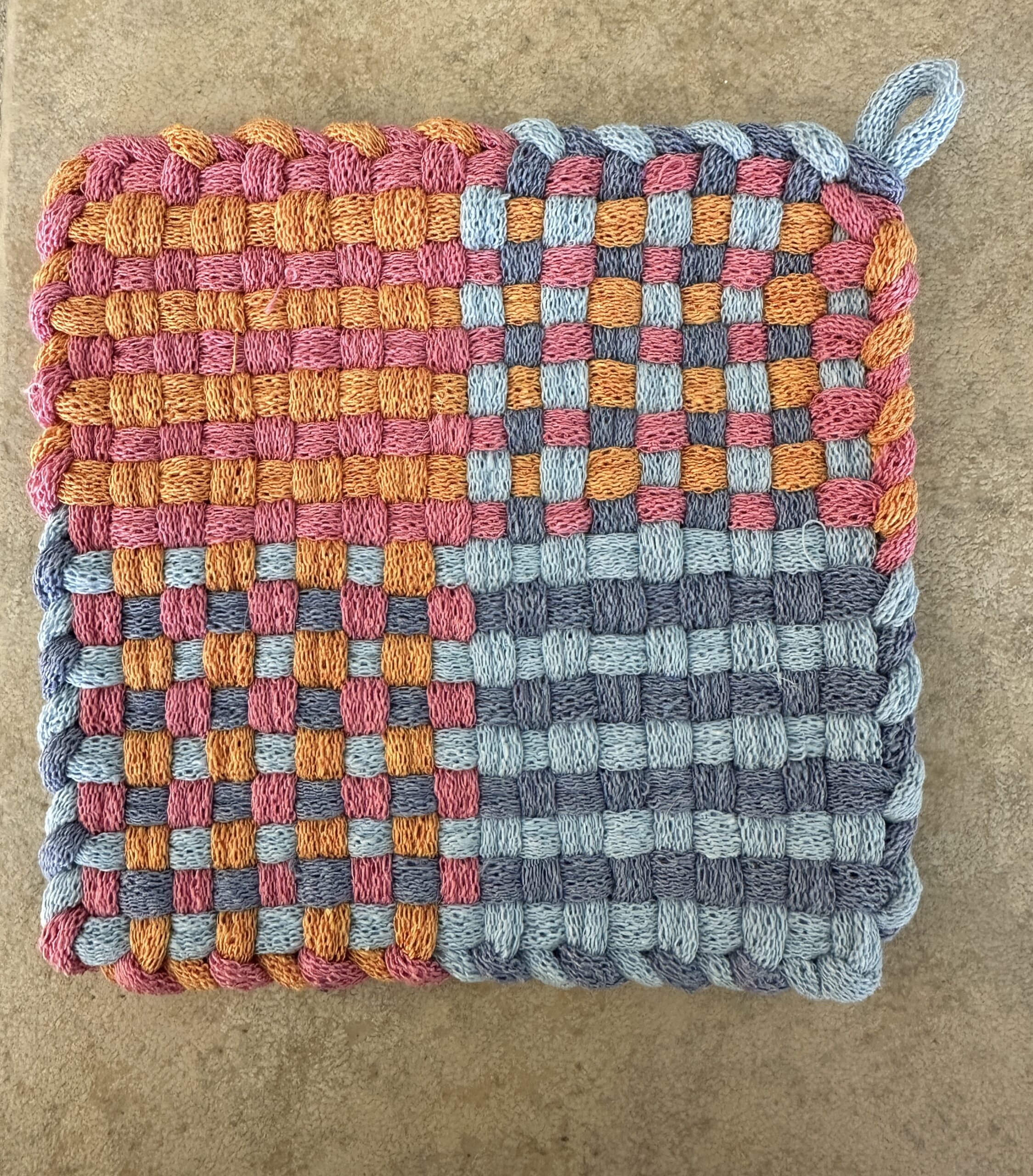
By this time I was tired of just over one, under one and decided to try weaving 2/2 twill. In 2/2 twill structure, you weave over 2, under 2 for the first pass. The next pass is under 1, over 2 then finish the pass by going under 2, over 2 across. Then you weave under 2, over 2 across. Finally you weave over 1, under 2 then repeat over 2, under 2 across. This potholder is a variation on 2/2 twill so the diagonal lines that you get with twill change directions.

For my sixth potholder I returned to plain weave but played with some color gradations. The color order in the horizontal loops are the same as the color order in the vertical loops.
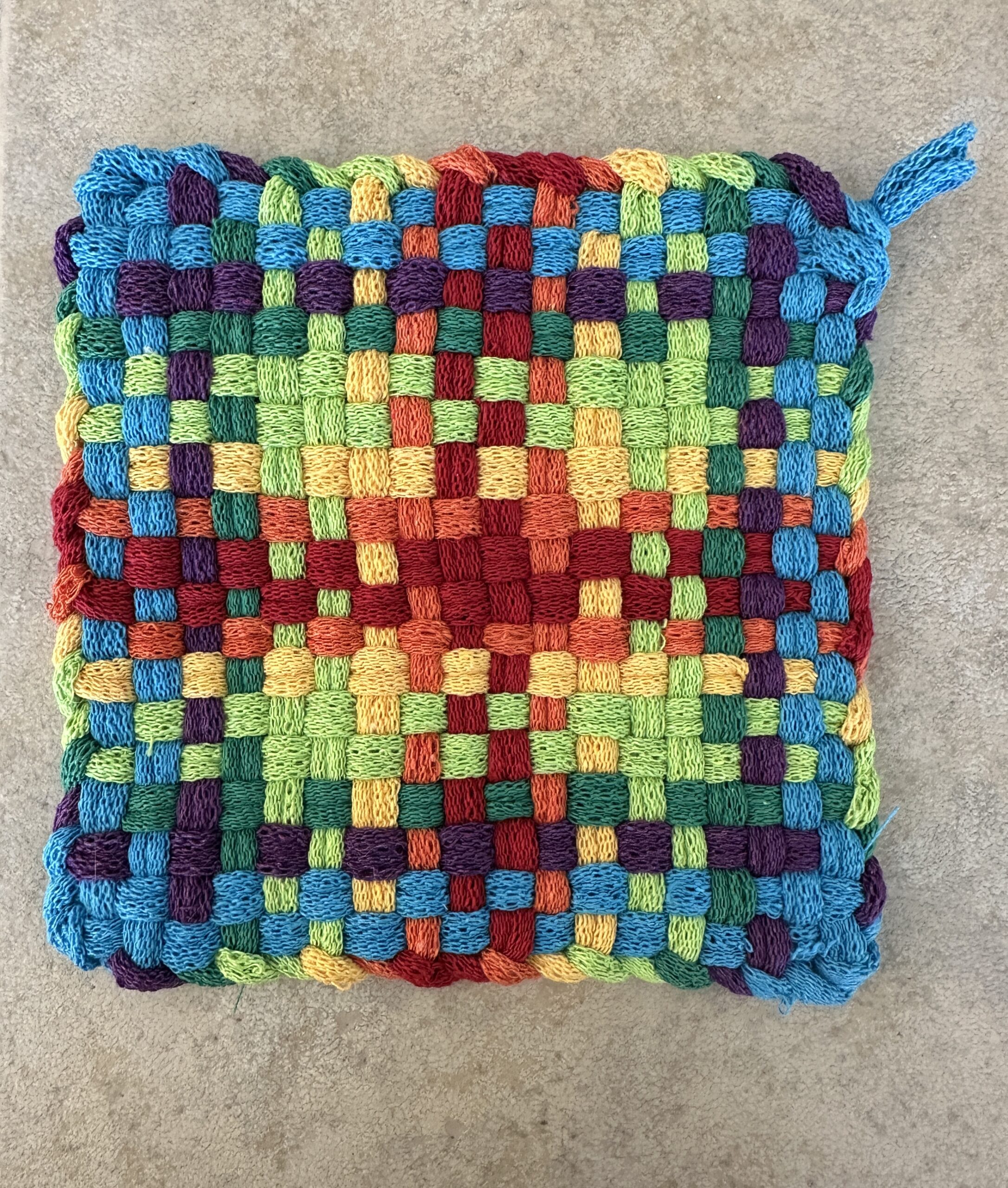
Finally I went back to some twisting and bending of loops to make this four-way wedge looking weave. It was a challenge but fun to weave. This was another of Margie Duffy’s inspirations. You might be able to see that I put a ring in the potholder’s hanging loop. That was to keep the loop from slipping out. I ended up doing that for all my potholders.
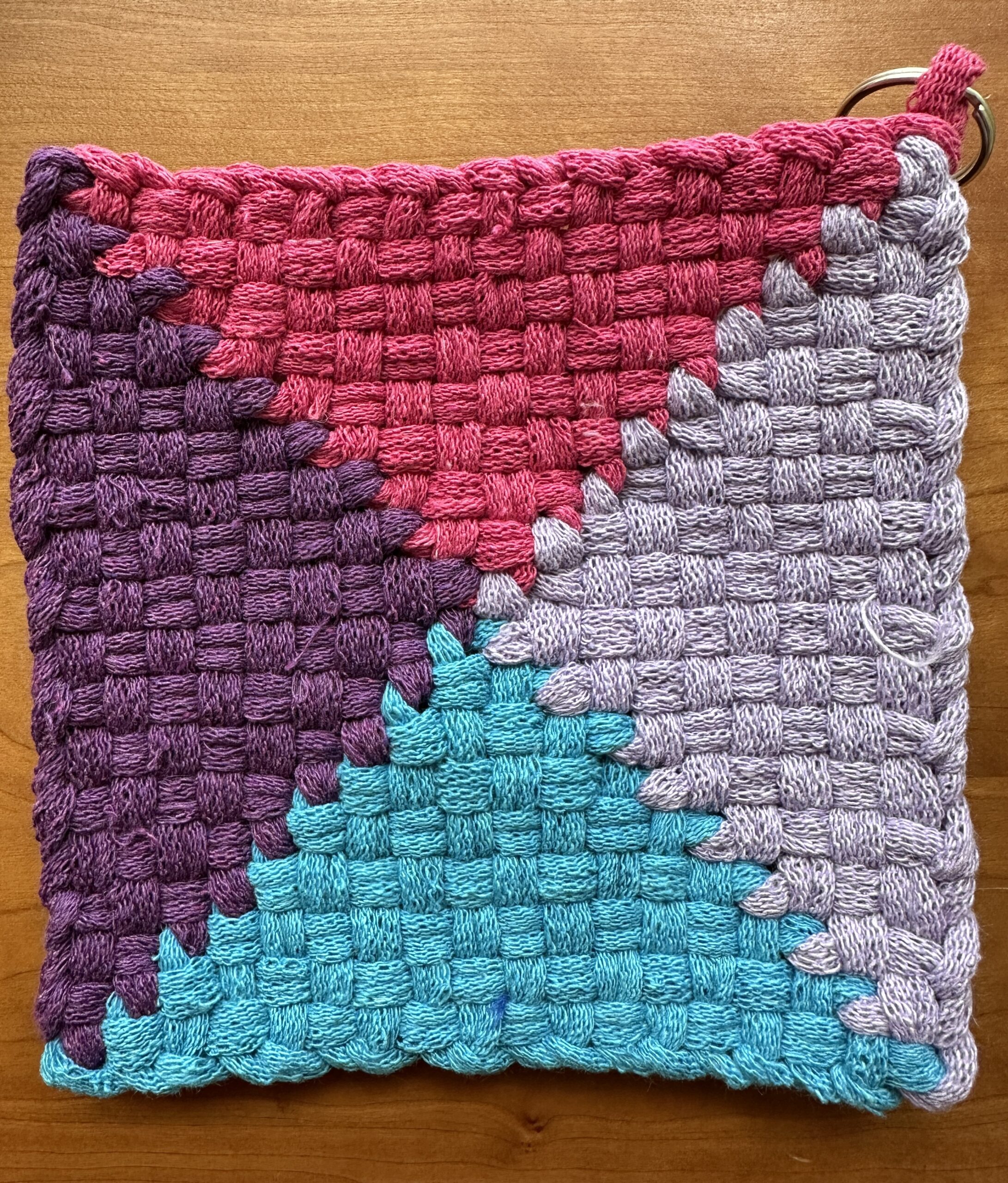
I loved weaving on my potholder loom. It kept my hands busy and my mind engaged until I could get home to my bigger looms. There are a lot of potholder weavers out there and a lot of things to try. If you’re interested, check out the maker of my potholder loom, Harrisville Designs. Their website has even more design ideas. Another resource is Piglet’s Potholders. She has an amazing variety of patterns to try. I’ll be happy to get weaving again on my big looms, but I enjoyed my adventures with potholders and plan on doing more little weaving in the future.

